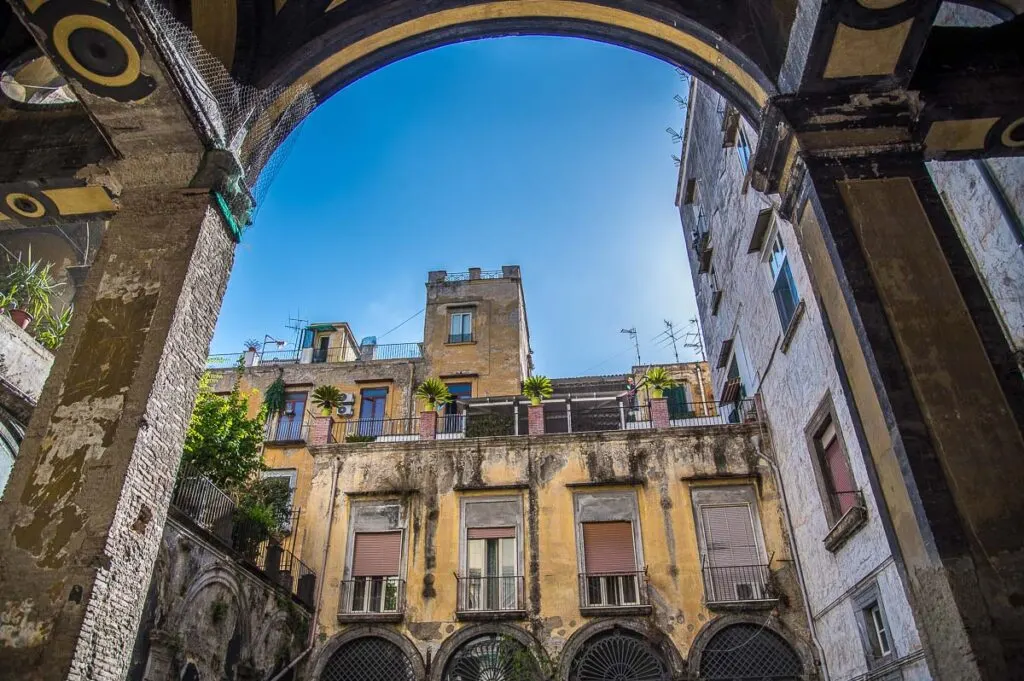Are You Planning a Trip to Naples – Italy’s City of Pizza, Volcanoes, and Nativity Scenes?
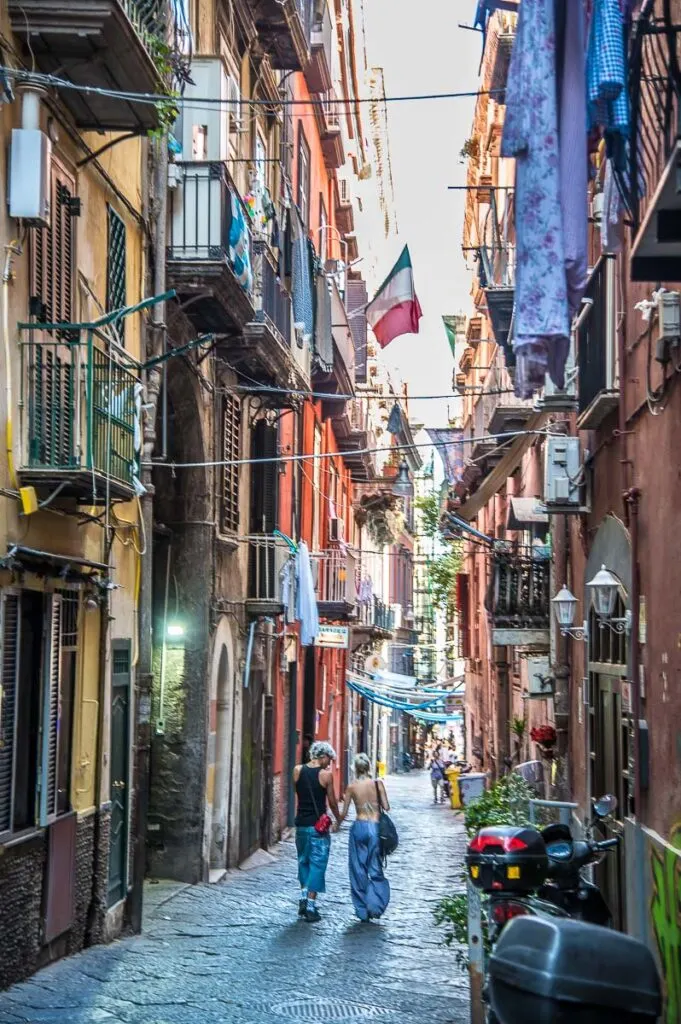
This is my ultimate travel guide for Naples or Napoli, as the city is called in Italian. It’s designed to make your travel planning easy, logical, and enjoyable. It will also help you experience the largest city in Southern Italy in the most authentic way.
Built on a caldera and with a heart as passionate as a volcano, Naples is a vibrant, stimulating place where you can rediscover the joy of life. Good food, strong coffee, excellent art, and quaint experiences are easy to come across here and even a simple thing like the abundance of vibrant colours and the buzzing hubbub of Neapolitan daily life can make you feel alive inside.
Yet, Naples is also one of the most polarising cities in the world. Travellers either sing its praises or don’t spare negative words. Densely built, Naples is a maze of streets many of which can trace their outlines to the city’s ancient Greek urban plan.
Exhilarating and overwhelming in equal measures and often at the same time, the city has been growing with an unstoppable verve for almost three millennia. The result is an immense metropolis that spans the picturesque Gulf of Naples, shoulders the iconic Mount Vesuvius and buzzes with the voices of the million people who call it home.
This is a place that over the centuries has accumulated a staggering collection of architecture and art. They reflect both ancient local traditions and a wide array of outside influences on account of the many foreign rulers that Naples has had. This makes it both Italy’s most international city and the Italian city with the strongest identity.
Naples’ churches, palaces, artisan workshops, and streets tell many captivating stories. You just need to have the ear to listen and the eye to perceive them beyond the graffiti-covered facades, the economic difficulties, and the rubbish bags that pile up on street corners every night.
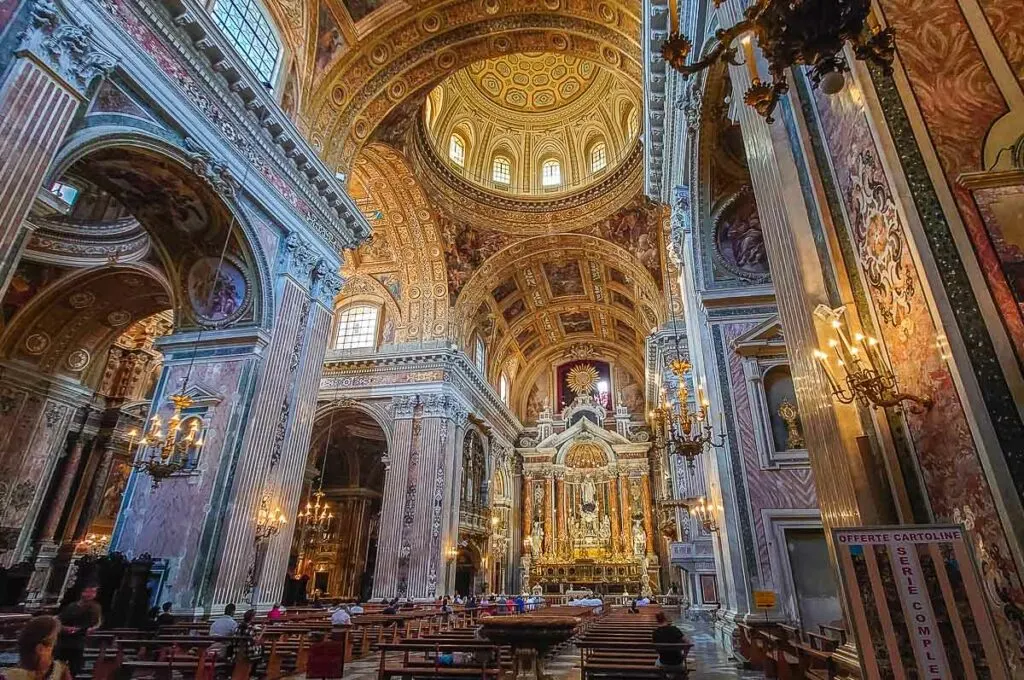
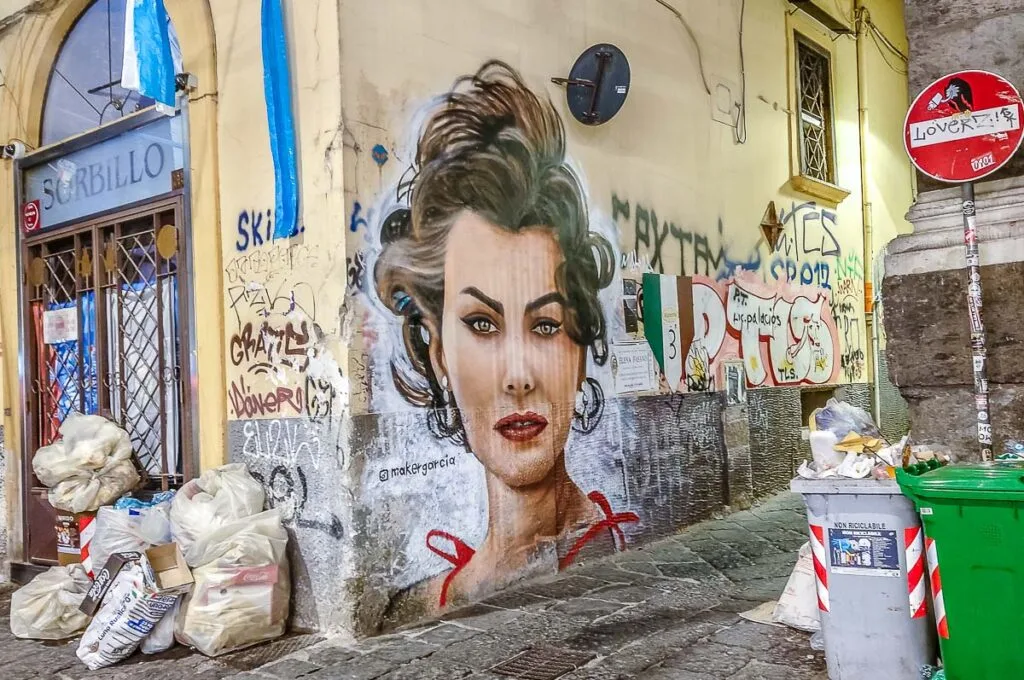
The financial distress that the city experiences obviously puts some travellers off Naples for life. That’s a real shame! For this is a raw and real place, far from the polished images that social media deals with, and yet full of energy and with hidden depths.
Take Naples at face value and you will see that while it’s not picture-perfect, it influences us on many levels. Over the last three millennia, the city has originated fables, movements, and trends time and time again. Its heritage speaks volumes. To see and experience everything that Naples has to offer – from ancient ruins and modern art to food and coffee rituals – would take a lifetime.
In other words, more than a city, more than a destination to visit as a tourist, Naples is a state of mind. As such, come here with an open heart and ready to discover things about history, art, beliefs, gastronomy, and yourself that may push your limitations beyond your comfort zone.
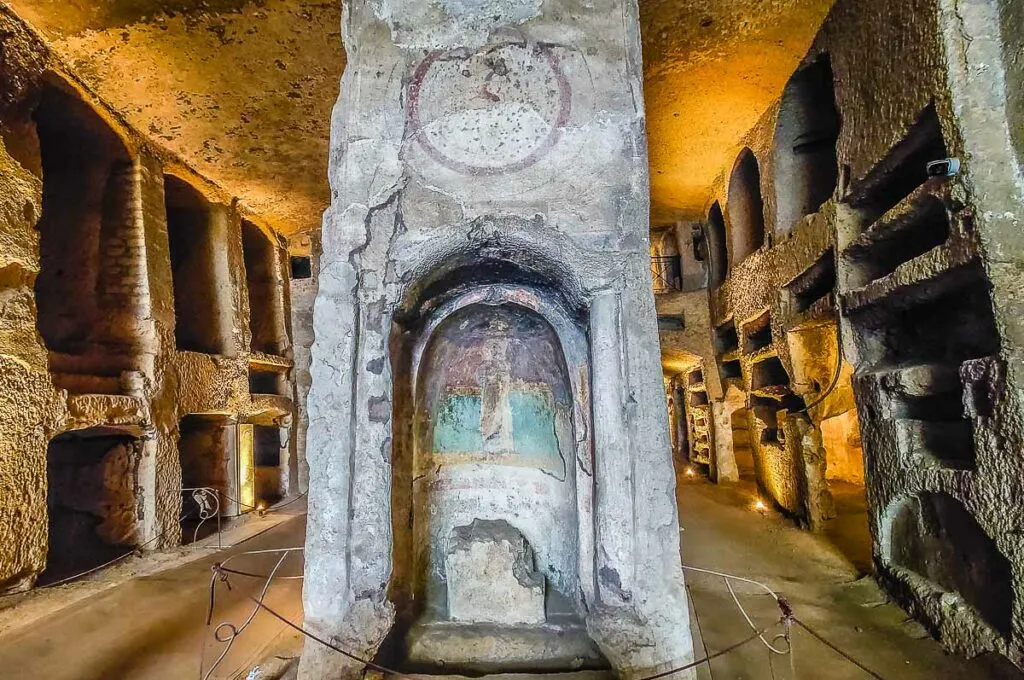
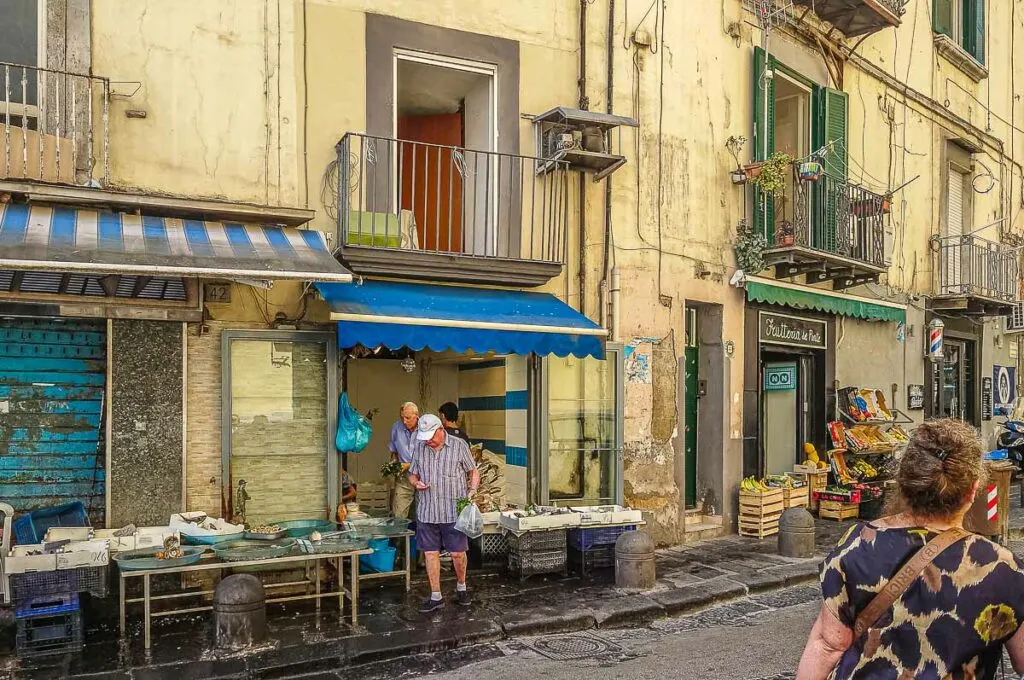
So, to help you plan your trip to Naples, I have researched, photographed, and written this ultimate travel guide. Scroll down and browse through its sections. All the usual topics like how to get to Naples, where to stay in Naples, what to eat in Naples, and what are the best things to do in Naples are covered.
In addition, you will find my answers to many more pertinent and curious questions. For example:
- Is Naples safe?
- Where to see the best presepi in Naples?
- How to explore Naples with kids?
- What are some hidden gems to discover in Naples and what day trips to take nearby?
I have included maps, lots of practical details, and numerous real-life photos to give you an idea of what to expect. You will also find the best times to visit Naples, tips for navigating this traffic-heavy city, and practical packing suggestions. These are followed by the best guidebooks and books for Naples, the best tours you can take here, as well as a list of the artisan Neapolitan products to shop for.
Scroll down to the end of this guide to see my top five tips for visiting this stimulating on so many levels city in Southern Italy. Finally, read the five things you should never do in Naples. They are always good to keep in mind!
Have a look and enjoy your Naples trip!
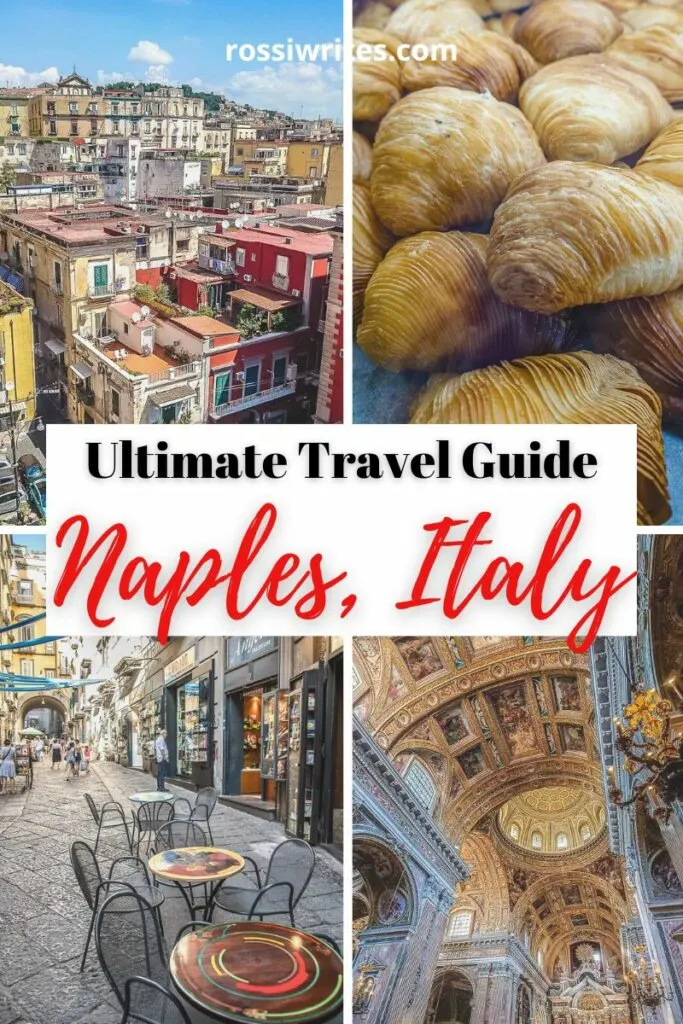
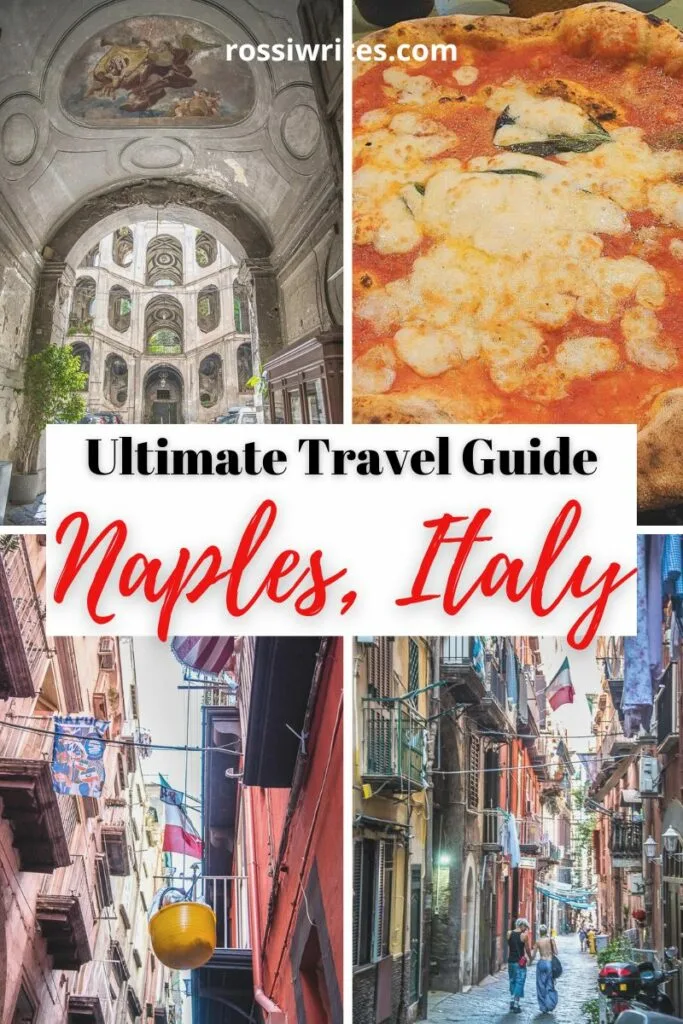
The information in this travel guide reflects my first-hand experience. It may contain affiliate links and if you click and make a purchase through them, I may receive a small commission at no cost to you. The ads on this page help me keep this blog free and produce new travel content for you to enjoy. Full details in my Disclosure.
WHERE IS NAPLES?
Naples is the largest city in Southern Italy and the capital of the Italian region of Campania. With just under a million people living here, it is the country’s third-largest city after Rome and Milan.
It lies along the Gulf of Naples – a 15-km wide bay along the southwestern coast of Italy. The densely built-up city sprawls from the supervolcanic area of the Phlegraean Fields (Campi Flegrei) to the iconic Mount Vesuvius.
The adjacent map shows you the city’s exact location in Southern Italy. You can click on it to zoom in and out in order to see further details.
Naples ranks among the ten most visited cities in Italy. It attracts just over a third of the number of tourists that head to the country’s most popular destination – Venice.
The city has an incredibly rich offering in terms of historic and artistic heritage. Its gastronomic traditions are at the basis of several worldwide famous and beloved dishes topped by pizza.
Naples is a must-see place in itself. It also offers quick and easy access by road, sea, and railway to several other popular destinations in Italy. From the historic ruins of Herculaneum, Pompei, Pozzuoli, Capua, and Paestum to the picturesque coastal towns of Amalfi, Positano, and Ravello, Naples is the starting point for many exciting and enriching trips in Italy. A ferry ride from Naples away, you can also visit the beautiful islands of Capri, Ischia, and Procida.
IS NAPLES WORTH A VISIT?
The short answer is yes, Naples is very much worth a visit. Almost three millennia old, the largest city in Southern Italy is a vibrant stimulating place dotted with iconic must-see sights and offering the best cuisine this side of Europe.
Hugging the curve of the Gulf of Naples and sprawling in the shadow of the infamous Mount Vesuvius, this city has a passionate character marked by sharp contrasts.
Built on several layers – from ancient catacombs to multi-storey Baroque palaces and modern-day skyscrapers, in Naples, the past, the present, and the future blend into an exciting synthesis.
This is a city where you can walk along streets which follow the outline of ancient Greek and Roman roads, where deeply entrenched superstitions and folk traditions mingle with the most heartfelt Catholic faith, and where dishes made of simple seasonal foodstuffs have been elevated to nourishment for the soul.
Naples is also a place where poverty exists right next to the most splendid pinnacles of European architecture and art; where people ride pillion with no helmets on (and sometimes have their dog on the scooter, too); where the crowds, the smells, the colours, the graffiti, and the constant play of shadows and light in large courtyards and narrow streets make you suddenly feel reenergised, full of purpose, and ready to live your most exciting life.
Yes, Naples is worth a visit as here you never know what to expect next. Around every corner, there is a new surprise. It could be the Immacolata Obelisk which, they say, at sunset reveals Death holding a sickle. Or it could be the Sanfelice Palace that seems plucked out of an Escher’s print.
In fact, Naples is worth numerous visits as there is always something new to see and experience here, a new wave of excitement to wash all over you. It is one of those precious places that make travelling an adventure that you’ll remember and recall with love and passion when the humdrum of daily life gets too much.
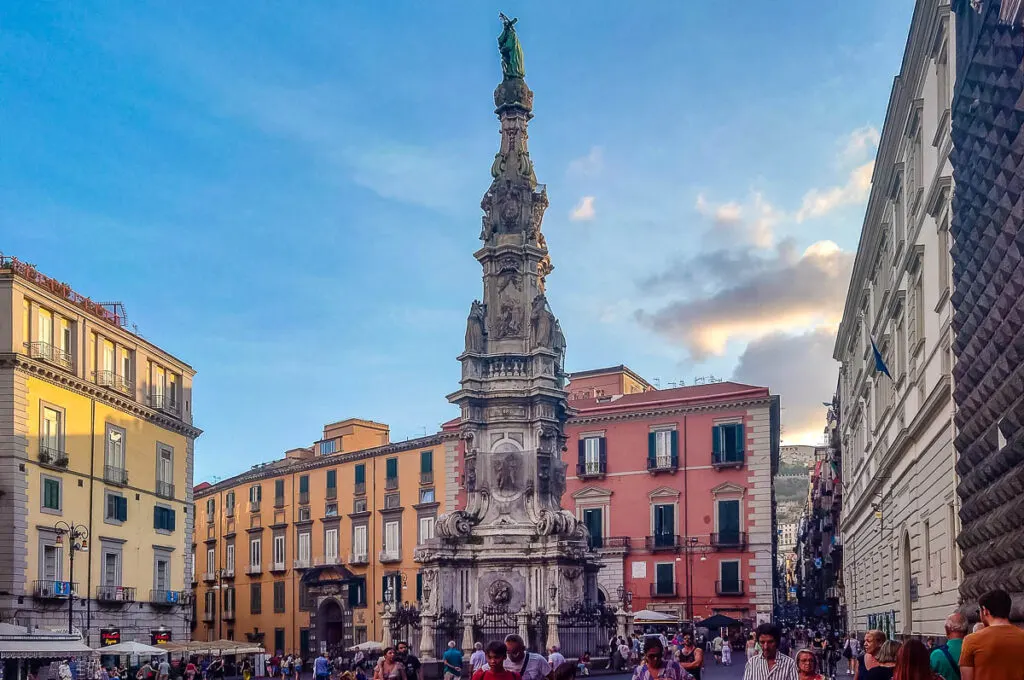
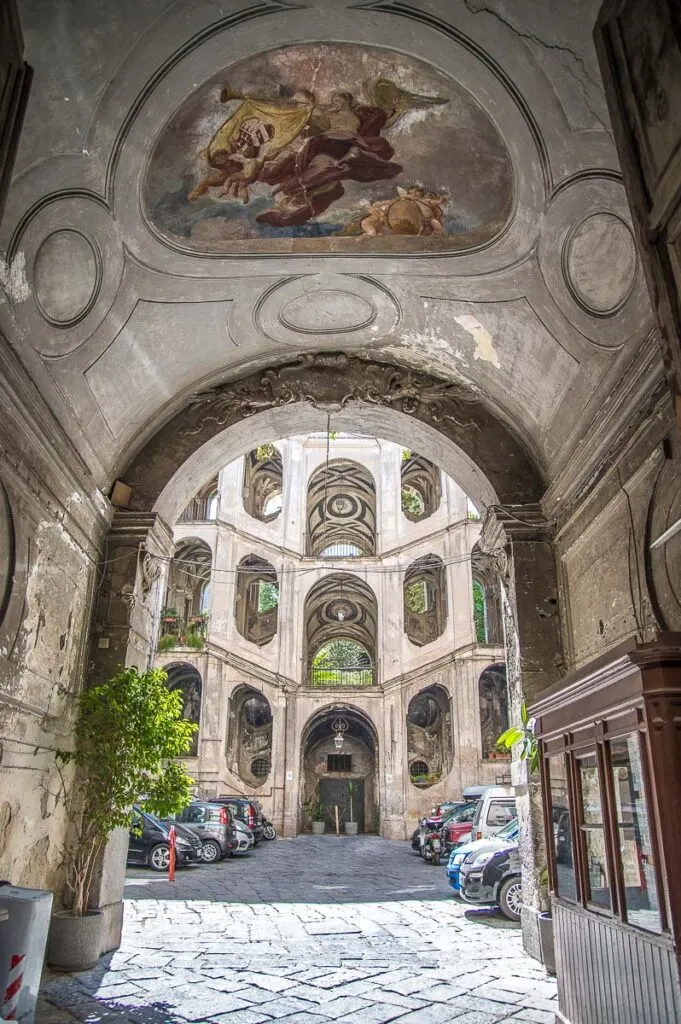
WHAT IS NAPLES CALLED IN ITALIAN?
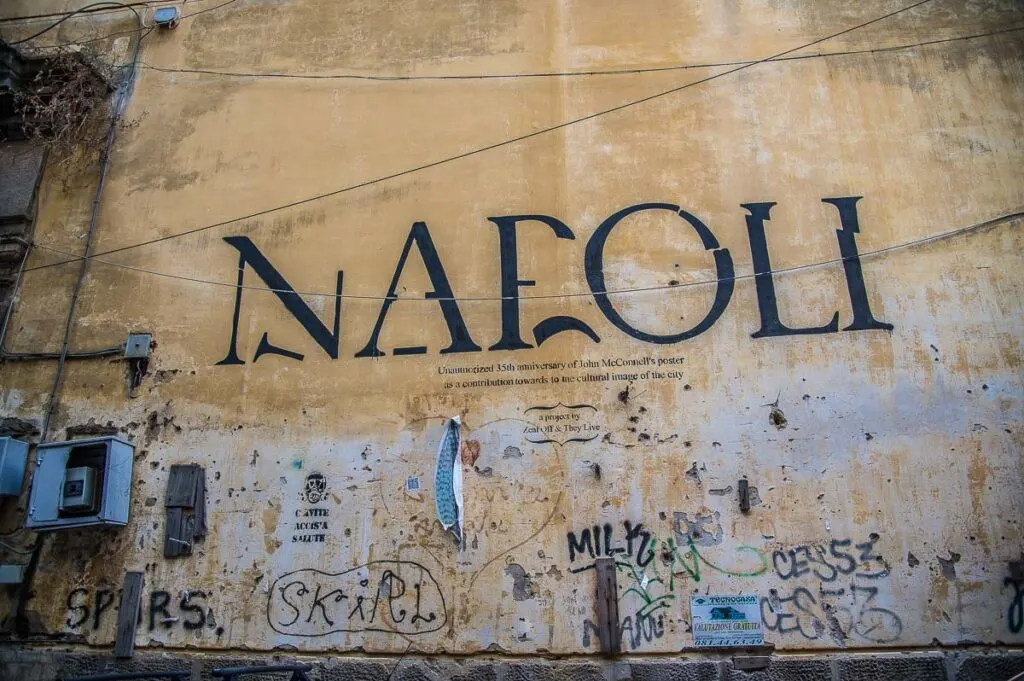
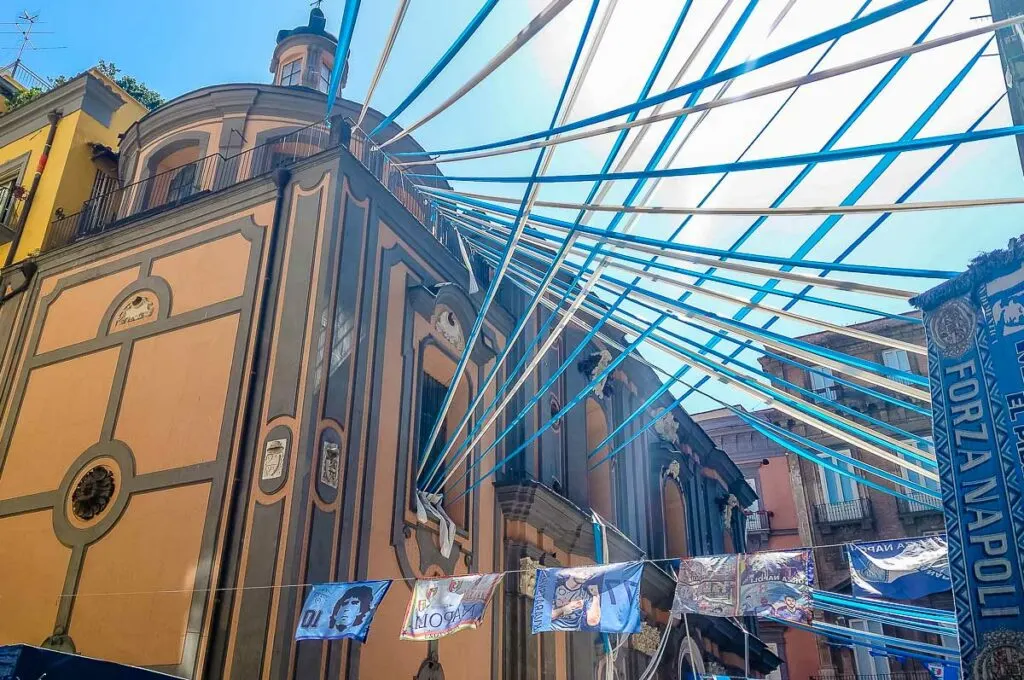
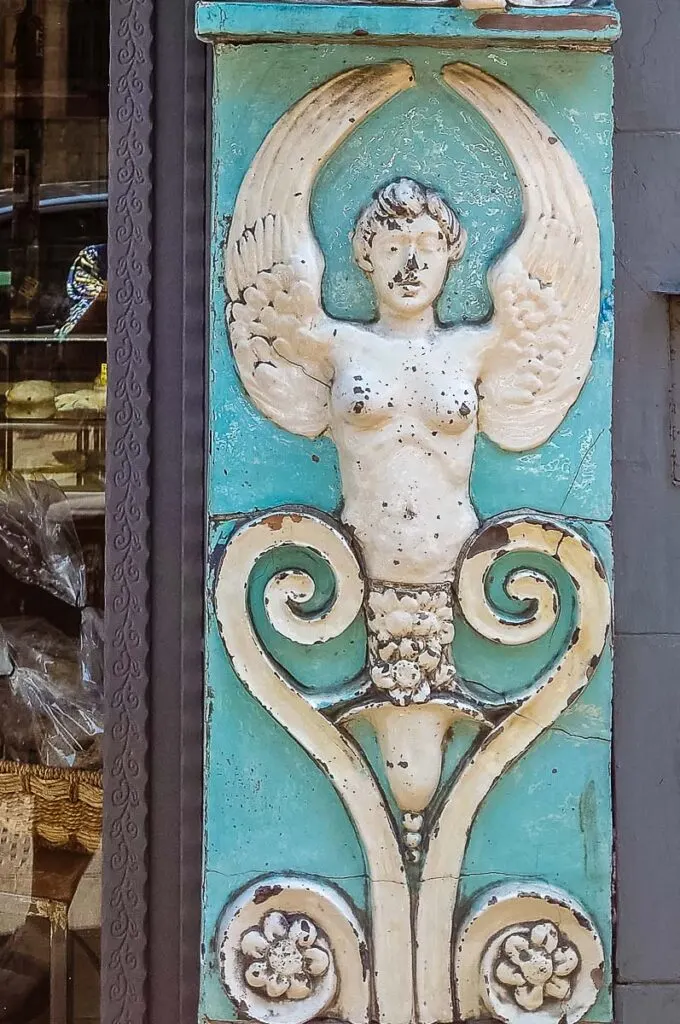
In Italian, Naples is known as Napoli. In the Neapolitan language, the city is called Napule. In both cases, the accent falls on the first syllable. Both Napoli and Napule have evolved from the Ancient Greek name of the city – Neapolis, meaning ‘New City’.
Naples is also sometimes referred to as the città dalle 500 cupole, or the City of 500 domes in English, on account of the large number of churches dotted along its streets. Another of Naples’ monikers – città dei sette castelli – is also linked to its architectural heritage. The locals claim that theirs is the only city with seven castles in the world.
La città obliqua is a poetic reference to Naples, too. It comes from a famous song by the singer-songwriter Edoardo Bennato who was inspired by the unique Neapolitan landscape – neither entirely horizontal nor fully hillside. And so he sings:
It’s not flat, it’s not vertical
it is a line that goes up the hill
it is a road that starts from the sea
The path of the oblique city.
More often than not, however, you will hear napoletani refer to themselves as partenopei and to their city as the città partenopea or the Parthenopean City. This is based on the foundation myth of Naples which is linked to the siren Parthenope – a mythical creature with a bird’s body and woman’s head.
Parthenope had a beautiful voice. Sailors were so bewitched by her singing that they would forget to steer their ships which would then crash against the rocky shore of what nowadays is known as the Sorrento Peninsula.
To avoid a similar fate, the Greek hero Ulysses made his men plug their ears with wax and bind him to the mast of his ship. This way, he could enjoy the siren’s song without sacrificing his ship and his crew.
Unable to make Ulysses fall in love with her and thus lure him to his death, Parthenope threw herself off the rocks. Her body washed on the island of Megaride where the local people found it and buried it. A settlement carrying the siren’s name quickly grew around her burial site. It was also known as Palaepolis (Old City) as around 470 BC, Neapolis (New City) was founded right next to it by Greek settlers.
Nowadays, Naples has expanded significantly beyond the limits of the original Palaepolis and Neapolis. The island of Megaride, today is a peninsula in the Gulf of Naples and houses the city’s oldest fortress – Castel dell’Ovo.
Finally, as you saw at the start of this Naples travel guide, I called it the City of Pizza, Volcanoes, and Nativity Scenes. The first is self-explanatory as the pizza napoletana is famous all over the world (especially the Naples-born pizza Margherita prepared with tomato sauce, mozzarella cheese, and basil leaves). With the volcanoes of the Phlegraean Fields and Mount Vesuvius playing a major role in the geology and the history of the area, the second part of the moniker is also clear.
As for Nativity scenes, Naples is famous for its tradition of artisan presepi. These are intricate Christmas cribs representing the Holy Family in the stables in Bethlehem. Beloved all over Italy, the best ones are handmade in Naples. I mention them in more detail below under the headings Best Presepi in Naples and What to Buy in Naples.
NAPLES AND ITS QUARTERS
Naples is a large sprawling city divided into 30 quarters. Here are the main urban areas to visit in order to see the best that it has to offer:
Centro Storico – a UNESCO World Heritage Site, Naples’ historic centre is a vast area in the heart of the city where you will find the most famous landmarks – from the Veiled Christ in the Sansevero Chapel and the tiled cloister of the Monastery of Santa Chiara to Piazza del Plebescito and the Royal Palace. Follow Spaccanapoli – the long artery of straight streets that flow one into another and in the process splits the city in two. Look out for the large obelisks dotted along its route. Stuff yourself with pizza in all its Neapolitan varieties along Via dei Tribunali. Dodge the constant traffic of scooters and evade the persistent greeters trying to get you to enter their eateries. Find temporary peace and quiet in Naples’ former water cisterns.
Rione Sanità – a former no-go area, this authentic corner of Naples is where you can visit the striking Catacombs of San Gennaro – my absolutely favourite landmark in Naples. A short walk away don’t miss the macabre Catacombs of San Gaudioso underneath the resplendent Basilica of Santa Maria della Sanità. The Palazzo dello Spagnuolo and the Palazzo Sanfelice are a must for lovers of architecture.
Quartieri Spagnoli – with a name that is a throwback to when Naples was ruled by the Spanish Bourbons, this Neapolitan quarter epitomises the city. Expect narrow streets, laundry flapping above your head, and lots of graffiti. Don’t miss the Pignasecca market – a hub of activity that is quintessential Naples.
Vomero – hop on a funicular for an exhilarating ride to the top of the Vomero hill and enjoy the unparalleled panoramas of Naples flanked by Mount Vesuvius. Then visit the proud Castel Sant’Elmo and the former monastery of Certosa di San Martino.
Chiaia – this upmarket quarter of Naples is a great place to stay in if you want to be close to the sea, the luxury boutiques, and the Villa Comunale expansive lush park.
Santa Lucia – standing right where the original settlement of Parthenope (or Palaepolis) first grew, Santa Lucia is a historic quarter of Naples where you can visit the mysterious Castel dell’Ovo, marvel at the imposing Fontana dei Giganti, and indulge in fresh seafood in the fishermen’s Borgo Marinari.
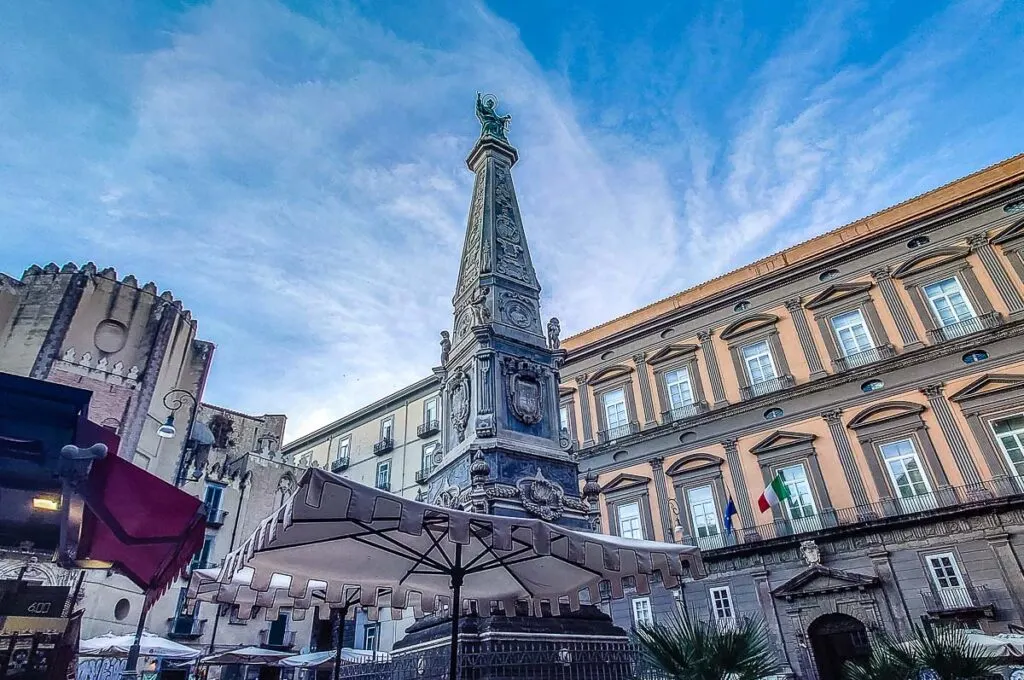
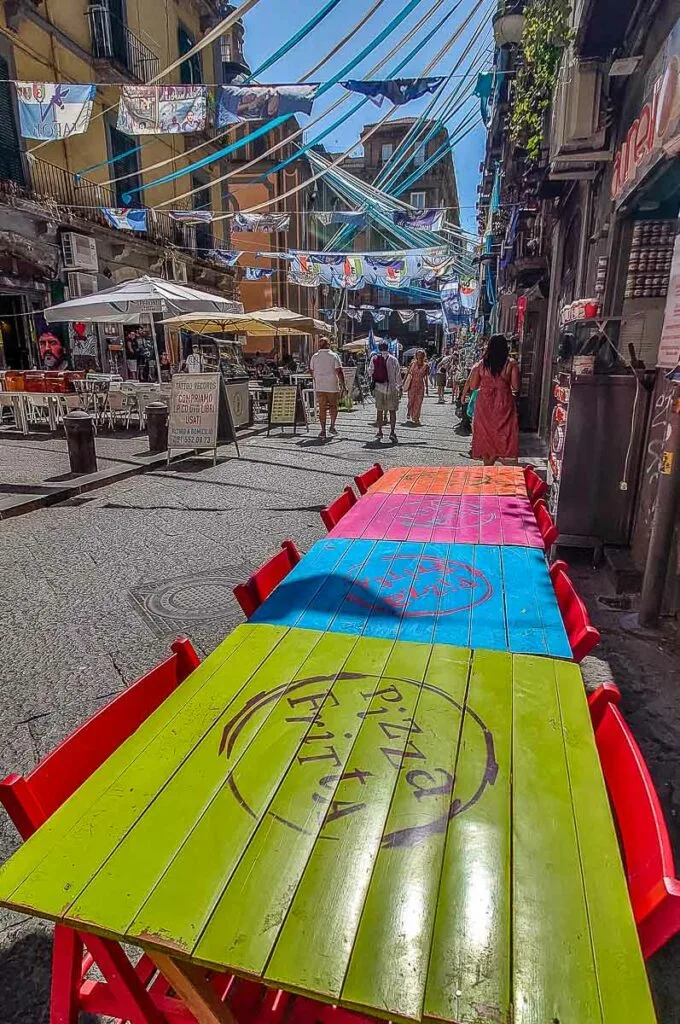
BEST AIRPORT FOR NAPLES
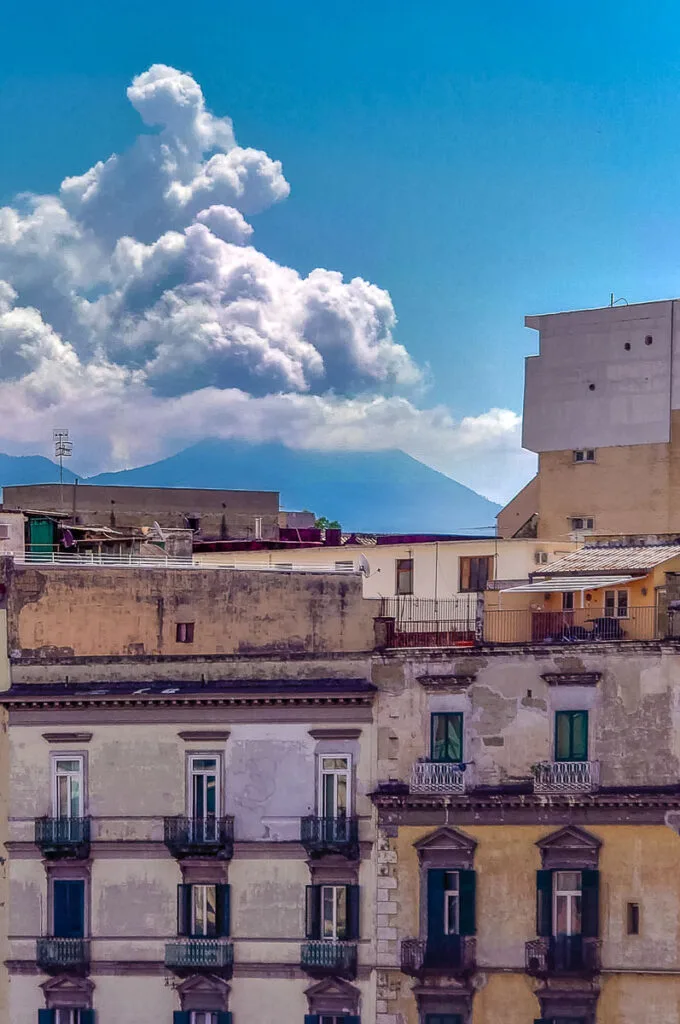
Naples has its own airport – Aeroporto Internazionale di Napoli Capodichino (IATA airport code: NAP). It is one of the busiest airports in Italy and it’s only four km away from the city centre.
It is served both by low-cost and full-service carriers, making Naples easy to reach from all corners of Europe and the world. The flight from London Gatwick, for example, is just over two and a half hours, so Naples is a great destination for a long weekend.
The official website of Naples Airport has a lot of useful information – from how to reach the airport to what shops and restaurants you will find here.
Shopping is excellent with many international chains and high fashion brands having stores here. There are also numerous eateries which is handy especially when you know that you are about to leave Naples and you want to have one last delicious pizza or sfogliatella pastry for the journey ahead.
AliBus is the coach line linking Naples Airport to the city centre. You can take it either to:
- Piazza Garibaldi – in front of the city’s main train station, Napoli Centrale; or
- Port of Naples – a short walk away from the centrally located Piazza Municipio.
We were lucky as we were met by a friend of a friend upon our arrival in Naples. He drove us to the flat we had rented in the historic centre giving us our first taste of the famous Neapolitan driving style.
On the way back, we found getting a taxi to reach the airport from the historic centre very handy as we were lugging a heavy suitcase. The journey door to door took less than half an hour and cost us around 30 euros.
HOW TO REACH NAPLES?
Naples is very easy to reach by railway, road, and ferry from anywhere in Italy and abroad.
High-speed and regular trains connect Naples all throughout the day to many towns in the region of Campania and major cities all over Italy. You can check timetables and book your tickets on:
- Omio – which pulls up results for both state-run and private railway companies in Italy;
- TrenItalia – which covers the state-run train network of Italy.
Here are some sample travel times by high-speed train from the Italian capital and other large Italian cities to Naples’ main train station, Napoli Centrale:
- Rome to Naples – from 1 h 13 mins;
- Florence to Naples – from 3 h;
- Bologna to Naples – from 3 h 31 mins;
- Milan to Naples – from 4 h 45 mins;
- Venice to Naples – from 5 h 22 mins;
- Turin to Naples – from 6 h 3 mins.
The following ferry companies connect Naples to the nearby islands of Capri, Ischia, and Procida, the Aeolian Islands, as well as to the towns on the Amalfi Coast and further away destinations like Sicily: SNAV, Caremar, and Medmar.
You can drive to Naples from anywhere in Italy, too. Toll roads (called autostrada, sing. and autostrade, pl. in Italian) connect the city to other large Italian cities and smaller towns. Here are the autostrade you can use here:
- A1 Autostrada del Sole – Milan to Naples
- A3 – Salerno to Naples
- A16 – Canosa to Naples
- A56 Tangenziale di Napoli – this is Naples’ ring road from Arco Felice to Capodichino
This useful website will give you up-to-date information about navigating Italy’s autostrade, the current traffic conditions, as well as how to calculate and pay the toll fees (called pedaggio in Italian).
If you are planning to visit Naples by car, you need to prepare yourself mentally for the busy traffic and the assertive driving style of the city. Make sure that your car insurance covers all eventualities. Ideally, arrange for a parking space in advance. Some travellers report that in some corners of the city, you may be asked to pay an additional fee to have your car ‘looked after’.
It is also advisable to familiarise yourself with Naples’ ZTL or zones with restricted traffic which can be traversed by car only if you have a special dispensation. This website may come in useful when you look into ZTL and the respective restrictions.
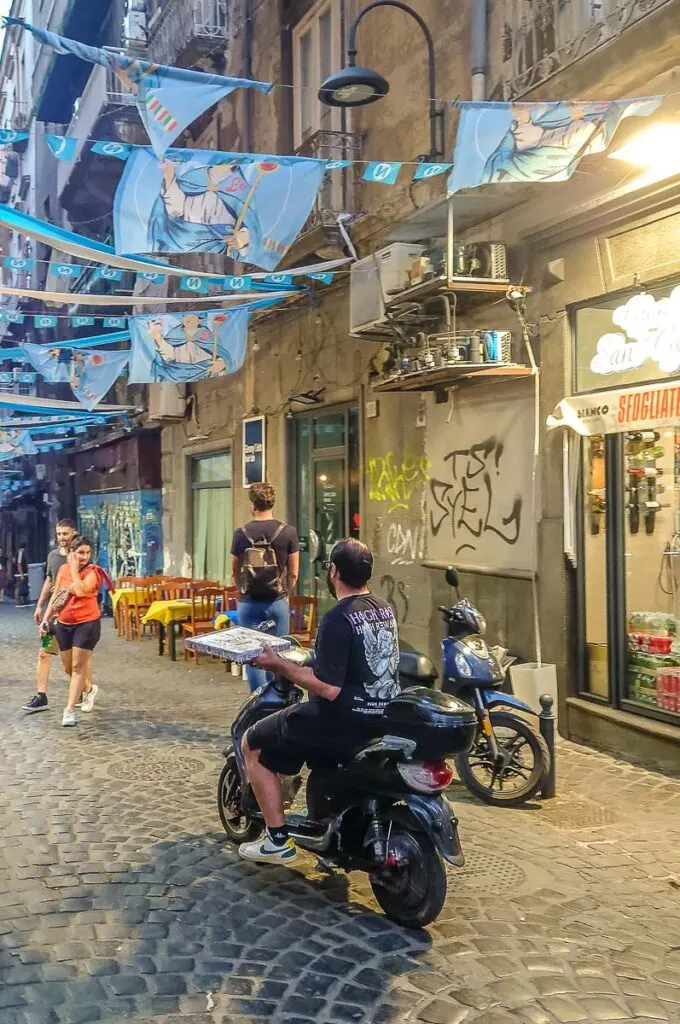
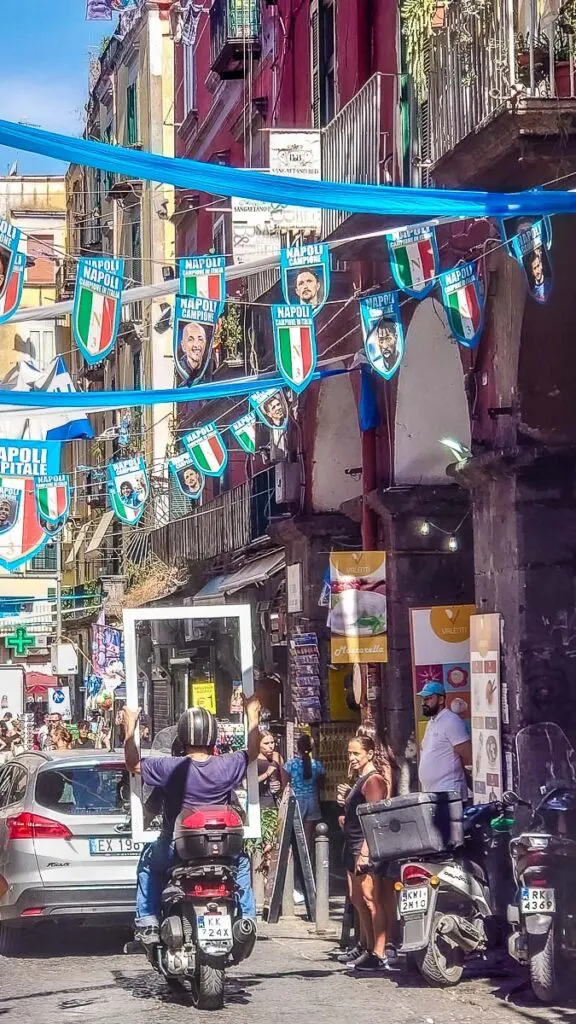
HOW TO NAVIGATE NAPLES?
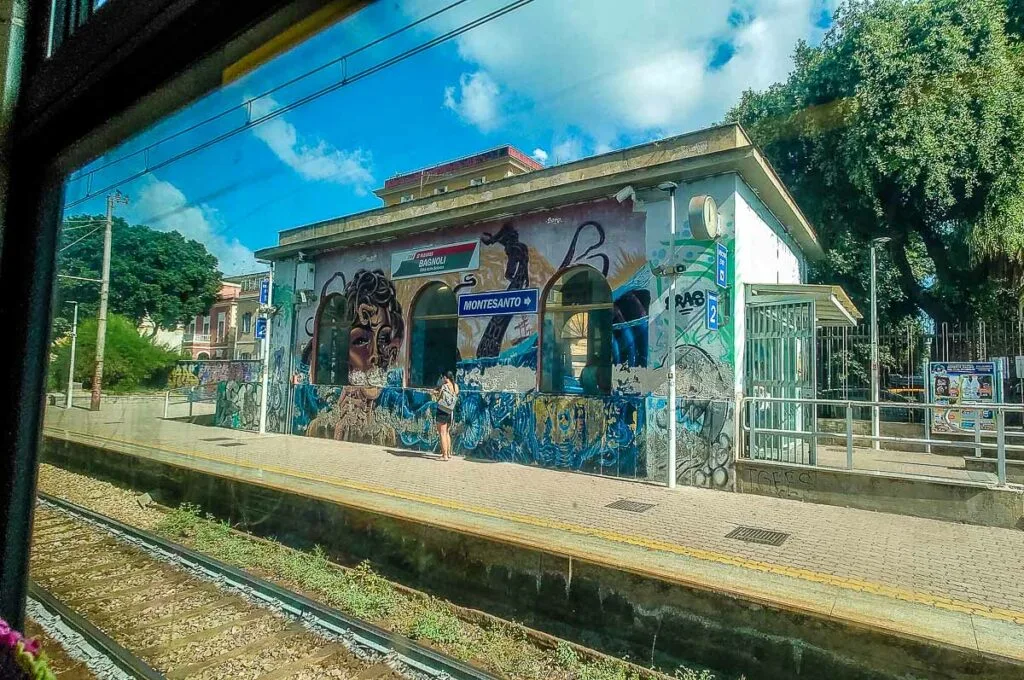
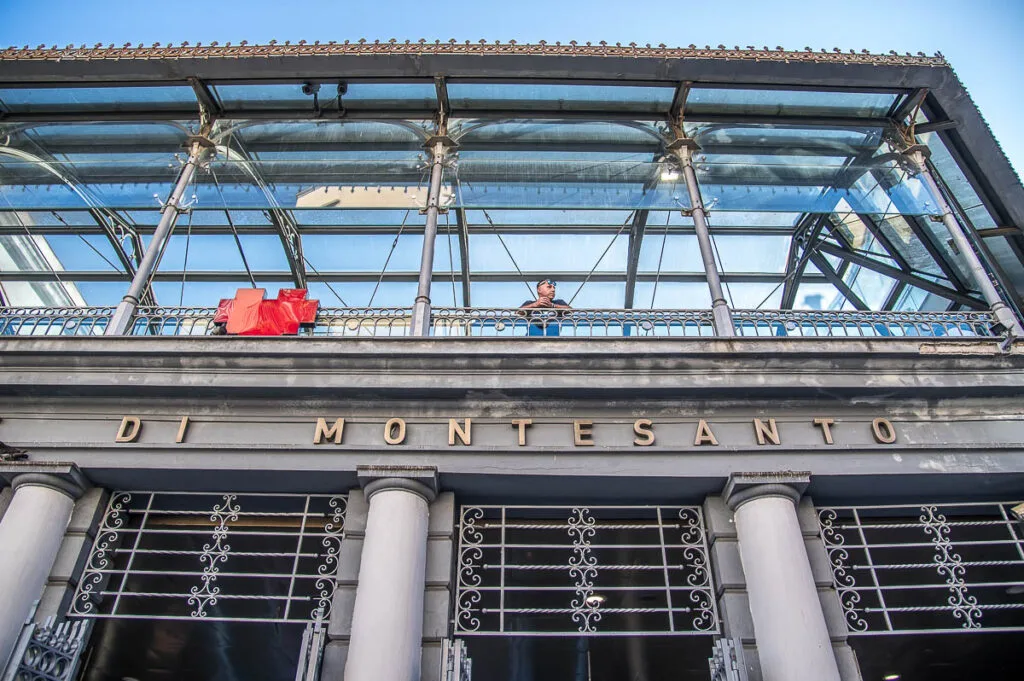
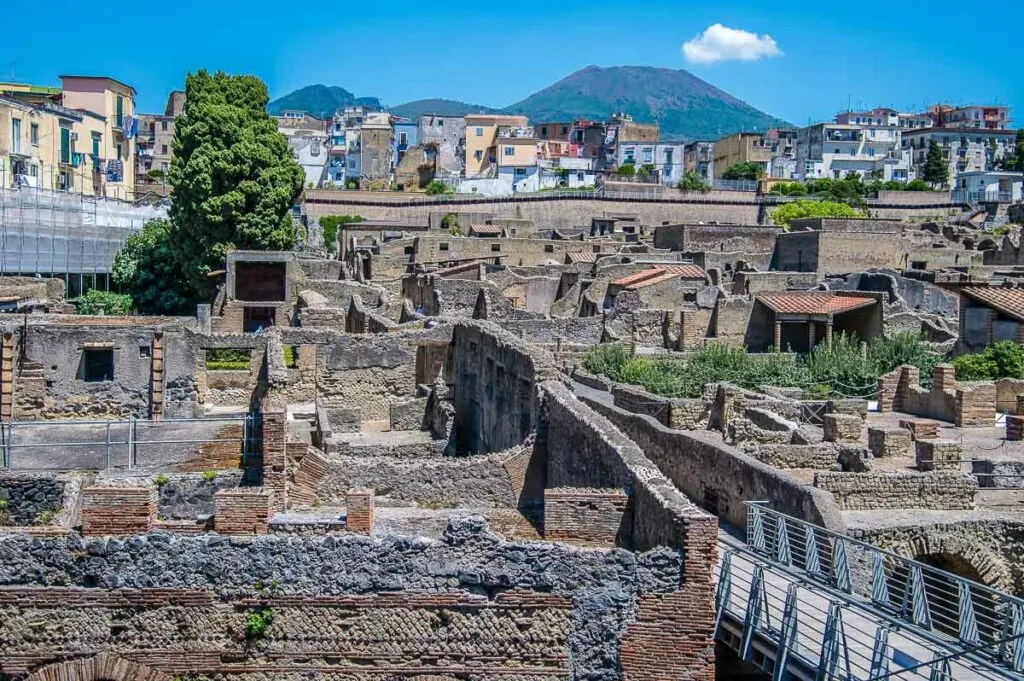
You can navigate Naples on foot as well as by bus, metro, funicular, and taxi. In some parts of the city you can get a tram and/or a trolleybus. There are also regional trains which connect Naples to several adjacent suburbs, towns, and landmarks nearby.
Naples’ historic centre and quarters are best explored on foot so that you can fully immerse yourself in their atmosphere. The narrow streets here often lack pavements and at all hours of the day experience a hectic flow of scooters, delivery vans, and cars. It pays to be vigilant at all times, especially next to turns and corners. Drivers are skilled but very impatient and expect you to move away asap. Otherwise, they keep pushing forward and whizz right past you.
Buses (as well as metro lines, trams, and trolleybuses) are very convenient if you want to save time walking from one quarter to the next. For example, we took a bus from the edge of the historic centre to the top end of Rione Sanità – a journey which took us about 15 minutes (inclusive of walking to the bus stop and time waiting for the bus) instead of the 30 minutes which walking there would have taken us.
Four funiculars connect Naples’ lower grounds to its hilly parts. They are very handy, especially on a hot day when you can’t bear to walk uphill for miles.
For up-to-date information about public transport in Naples, have a look at the official websites of Comune di Napoli and ANM – Agenzia Napoletana Mobilita. You will find exhaustive information about the different ways to travel here either by bus, funicular, metro, tram, or trolleybus, as well as about the different types of tickets and where to purchase them. At present, the websites seem to be only in Italian, so you may want to use Google Translate to get the gist of the information.
Taxis circulate through the historic quarters and can quickly take you anywhere in Naples, as well as to the nearby archaeological excavations, picturesque towns, and even Mount Vesuvius. You can download an up-to-date rate table from the official website of Comune di Napoli.
To reach the excavations of Herculaneum and Pompei by public transport, you will need to get the Circumvesuviana regional train. Use the EAV – Ente Autonomo Volturno’s website to check prices and timetables. There is a useful section in English.
To reach the towns and the archaeological parks in the Phlegraean Fields (Campi Flegrei), use the EAV website, too and check the timetables for the Cumana and the Circumflegrea train lines.
WHAT TO PACK FOR NAPLES?
The most important thing to pack for a visit to Naples in any season is a pair of comfortable shoes. You will be walking long distances over all types of historic surfaces many of which are uneven. You will also spend time standing up and moving at a variable pace over long periods of sightseeing.
Make sure that your feet are as comfortable as possible. Choose shoes with a good grip that cushion your heels and support your ankles at all times. Even on the hottest of days, it’s advisable to wear closed shoes or shoes that at least cover your toes, especially if you are planning to explore the historic centre, Rione Sanità, or the Quartieri Spagnoli as they are very busy and spillages next to markets and small businesses may occur.
In winter, bring warm layers to stave off the chills produced by the high levels of humidity and yet can be quickly peeled off when the sun makes an appearance. In summer, bring a hat, sunglasses, and suncream to counteract the bright sunlight that bounces off the large facades and floods the wide piazzas. Invest in fabrics that dry quickly, are crinkle-free, and let your skin breathe through them. A rainproof jacket will come in handy in autumn when rainy days are plenty.
Even when it’s very hot, make sure that your outfits are appropriate for city living and respectful sightseeing. Shoulders and knees should be covered in churches and landmarks. Swimsuits are not acceptable attire on the street.
In any case, don’t overpack as navigating Naples with heavy luggage can be difficult, especially if you are planning to use the busy public transport. Instead, select pieces that can be matched with one another, producing outfits that look different every day but rely on the same small number of core pieces.
Leave expensive and ostentatious jewellery, watches, and accessories at home. Invest in a cross-body bag with a sturdy strap. Put a bottle of hand gel in it as well as your favourite mosquito and bug repellents, albeit a spray, a roll-on or a bracelet.
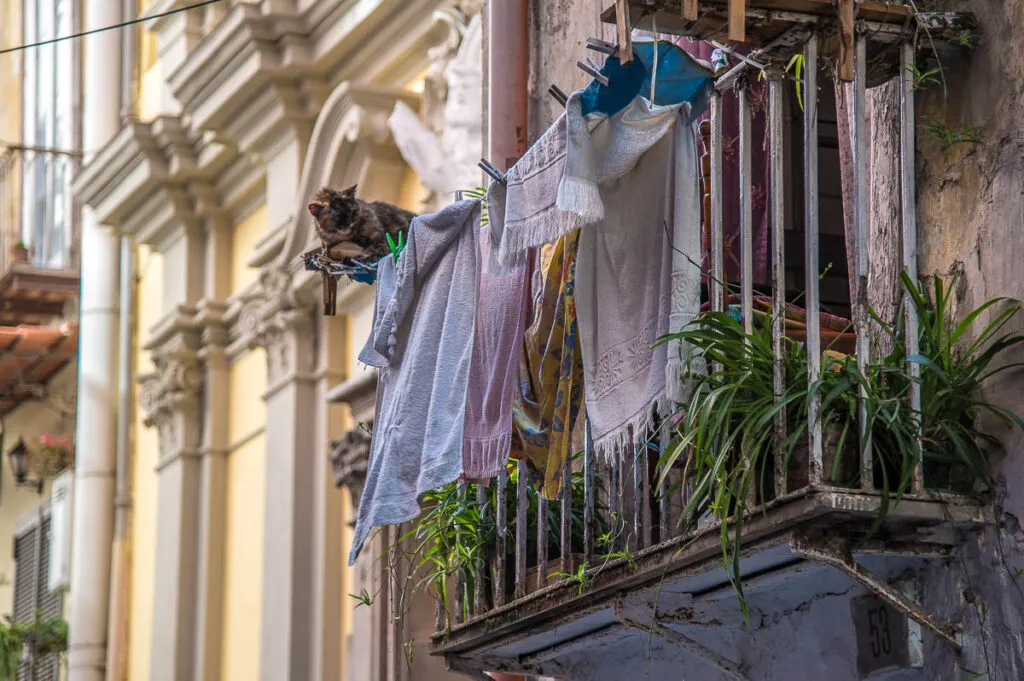
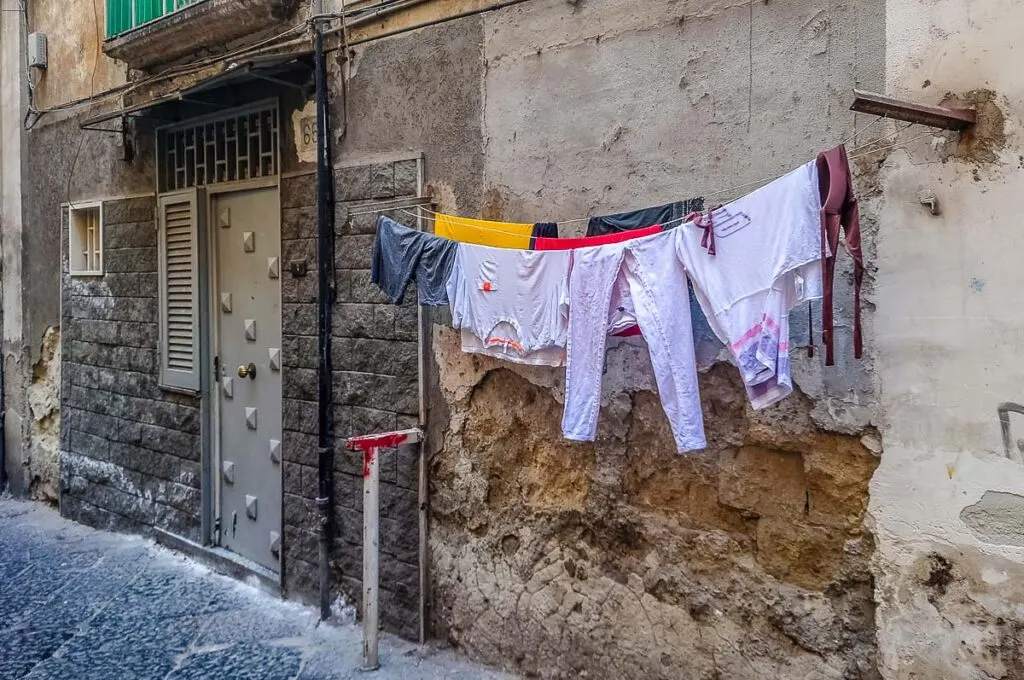
BEST TIME TO VISIT NAPLES
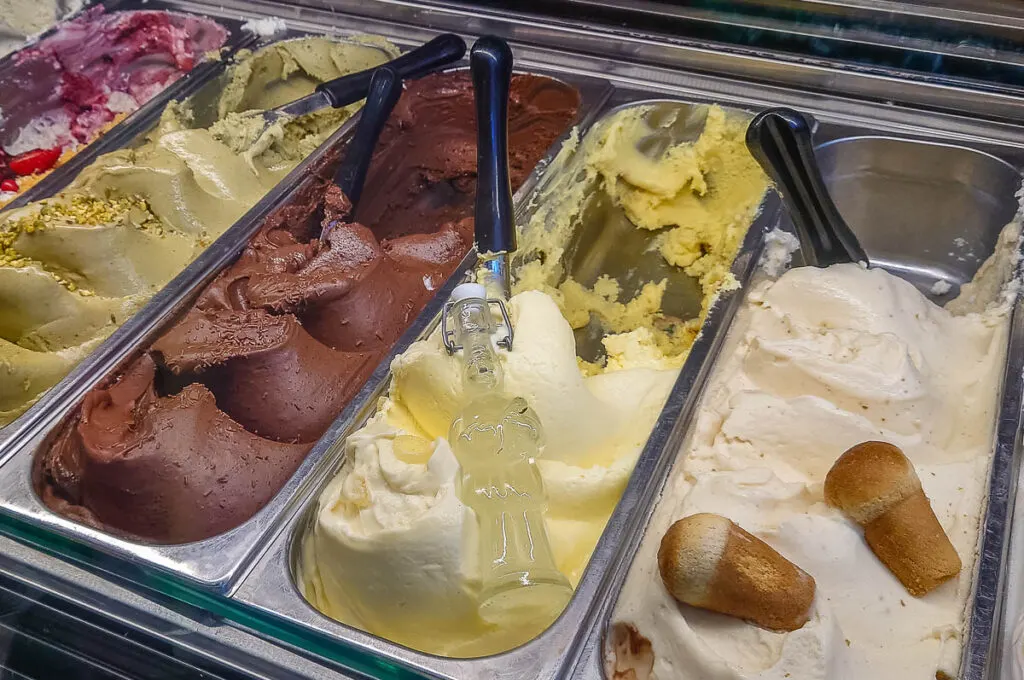
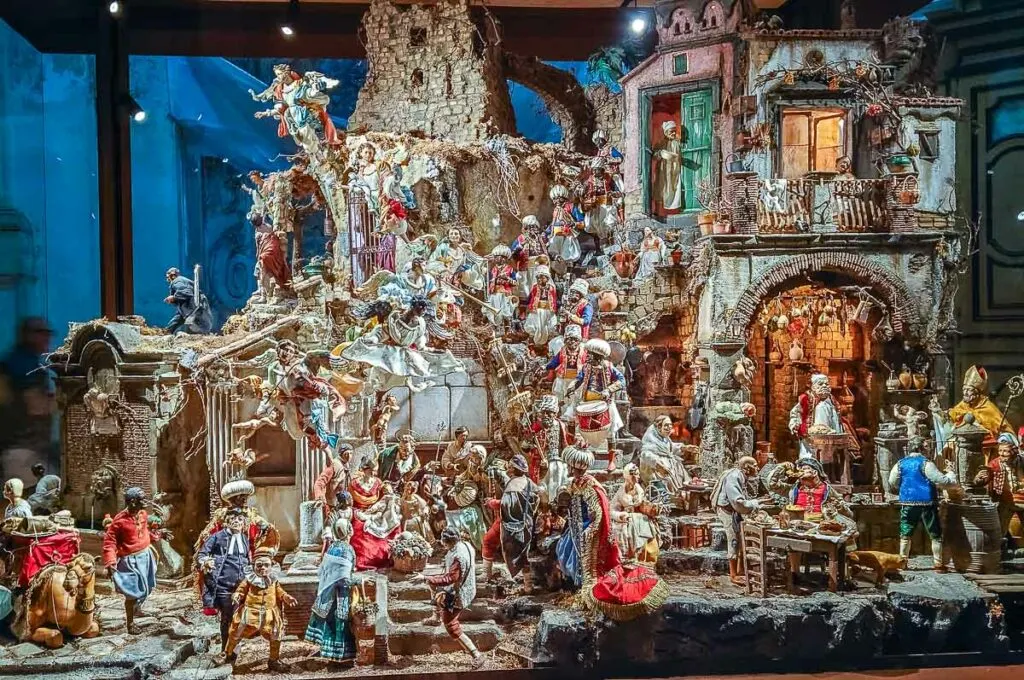
Naples is exhilarating in any season and there are lots of things to do here no matter the weather. So, visiting Naples is always a good idea – from a weekend break to a long holiday, the City of Pizza, Volcanoes, and Nativity Scenes offers an exciting immersion into the art, food, and heritage of this corner of Italy and Europe.
The shoulder season – from the end of March to May and then from the end of September to the start of November – is easily the best time of the year to visit Naples. Expect temperatures between 17 and 27 degrees Celsius and some rainy days but mainly clear skies.
Summers are hot and humid. With temperatures between 30 and 40 degrees Celsius, you will need to pace your sightseeing as being out and about in the throng of tourists and locals can quickly become tiring and overwhelming.
At the same time, summer is when Naples is full of vibrancy and life, so take long gelato breaks, linger over lunch, and commit to no more than two major sights a day (and a couple of smaller ones) to make the most of the sunny days and people-watching. If possible, return to your accommodation in the afternoon for a sweet little nap which will give you strength for a leisurely stroll (called passeggiata in Italian) in the early evening followed by a proper Neapolitan supper.
Winters in Naples are mild in comparison with most of Europe. The thermometer can go as high as 16 degrees Celsius. While this is not sunbathing weather it’s still a welcome escape from the minus temperatures in the northern European destinations. The Christmas season is especially lively. Expect lots of local events culminating in beautiful exhibitions of Nativity scenes and heartfelt celebrations.
You may also want to visit Naples for one of the city’s main festivals. Have a look at the heading Events in Naples further below to see what’s on and when. Then make your travel plans to experience quirky centuries-old traditions.
HOW LONG TO STAY IN NAPLES AND A 4-DAY ITINERARY
There is so much to see and do in Naples, that a plan to visit the city can quickly become an overwhelming jumble of ideas, intentions, and half-baked itineraries.
The best way to approach Naples is to be clear with yourself from the start that the city cannot be seen and done in a day or two and that no matter how long you spend here, there will always be sights and monuments to see on your next visit.
So, don’t overstretch yourself and don’t rush around like mad trying to squeeze in as much sightseeing as you can. Especially, if it is hot! Instead, either:
- focus on a particular period, for example, ancient ruins or Baroque art and architecture;
- pick a couple of Naples’s historic quarters to explore in detail; or
- pencil two major sights a day to see at leisure and then fill the rest of the time with culinary experiences and spontaneous visits to any church, quirky shop, and hidden gem of a landmark you walk past.
In other words, instead of treating Naples as one endless list of sights that you have to tick off, tailor your visit according to your interests, willingness to walk long distances, and your curiosity. Be open to spontaneous experiences and let the city surprise you.
For a first visit to Naples, ideally, I would suggest four full days. These can be as packed up or as relaxed as you wish. Take your pick from this busy four-day Naples itinerary below:
Day 1: Traverse Naples’ historic centre. Pop in and out of churches (Duomo, Monastery of Santa Chiara, and the Church of Gesù Nuovo are a must but there are many more), explore the city’s charming piazzas, walk along Spaccanapoli, take an underground tour, shop for Christmas decorations on Via San Gregorio Armeno, visit some of the major sights here like the Sansevero Chapel and Pio Monte della Misericordia. Later in the afternoon, head to Piazza del Plebescito with Naples’ Royal Palace, as well as Teatro di San Carlo and the elegant shopping arcade Galleria Umberto I nearby.
Day 2: Begin the day with an early morning visit to the Museum and Royal Wood of Capodimonte. Then explore Rione Sanità with the Catacombs of San Gennaro and San Gaudioso, Palazzo dello Spagnuolo, Palazzo Sanfelice, and the Fontanelle Cemetery (when it re-opens). Spend the afternoon in MANN – Naples’ outstanding archaeological museum where you can see Pompeiian frescoes and mosaics, ancient statues, and so much more. If you still have some energy left, end the day in Museo Madre – Naples’ outstanding museum of contemporary art.
Day 3: Spend the day visiting either Herculaneum or Pompeii followed by a hike up Mount Vesuvius. There are many different ways to do it either independently or with an organised tour. To reach the excavations of the two ancient Roman towns, you need to get the Circumvesuviana train. The respective stops are Ercolano Scavi and Pompeii Scavi–Villa dei Misteri. You can buy your tickets for the archaeological sites either in advance to skip the queues or in situ. Once there, if you want, you can pay an additional fee for a private guide or a guided tour or just explore the ruins independently. To reach Mount Vesuvius from the train station Ercolano Scavi, you can get the Vesuvio Express which includes roundtrip transport and a ticket for Vesuvius National Park. There is also a similar option to visit Vesuvius from Pompeii. Otherwise, you can buy tickets for the roundtrip bus and for the Vesuvius National Park separately. Alternatively, you can book a guided tour which takes all three – Herculaneum, Pompeii, and Vesuvius – in a day.
Day 4: Spend your last day in Naples by exploring some of its other quarters. Chiaia, Santa Lucia, Vomero, and the Quartieri Spagnoli offer a vibrant mosaic of sights, smells, and views. Once again, don’t expect to cover all four in a day, so pick a major sight in a couple of them or simply amble through one of them.
This four-day itinerary for Naples will give you a good introduction to everything that this exciting Southern Italian city has to offer. Any return visits to Naples then can be of any length to catch up on anything you have missed and to discover yet more sights, museums, and corners of the city.
In any case, if you don’t have four days to spare and still you really want to see Naples, just come. Even if it’s just on a day trip from Rome. Enjoy your time (however short!) in the city and before you know it you will be making plans to return again and again.
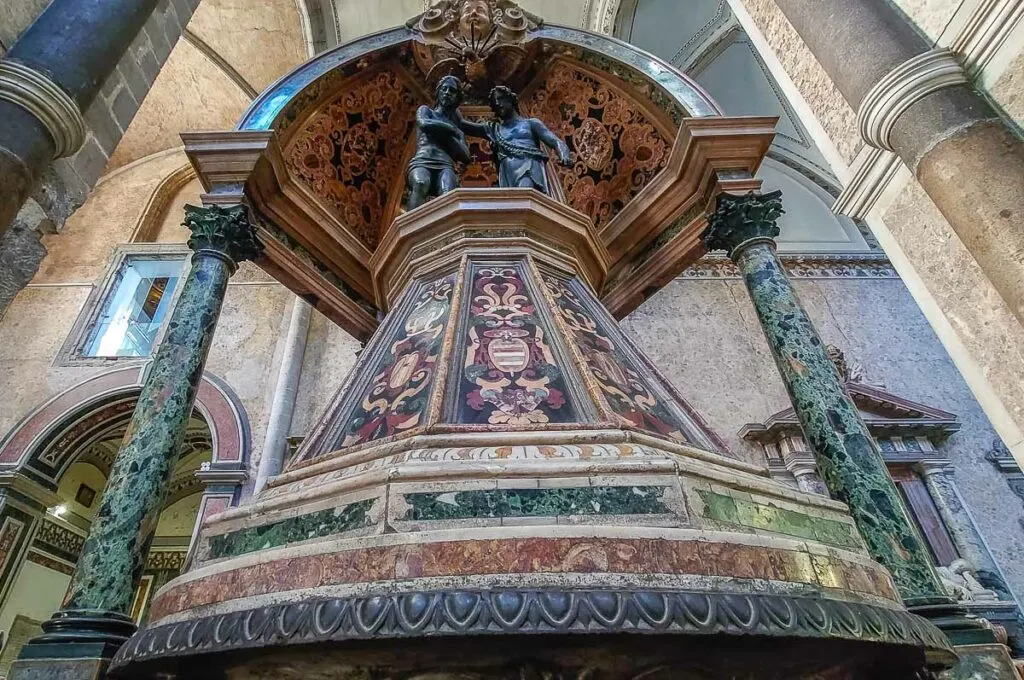
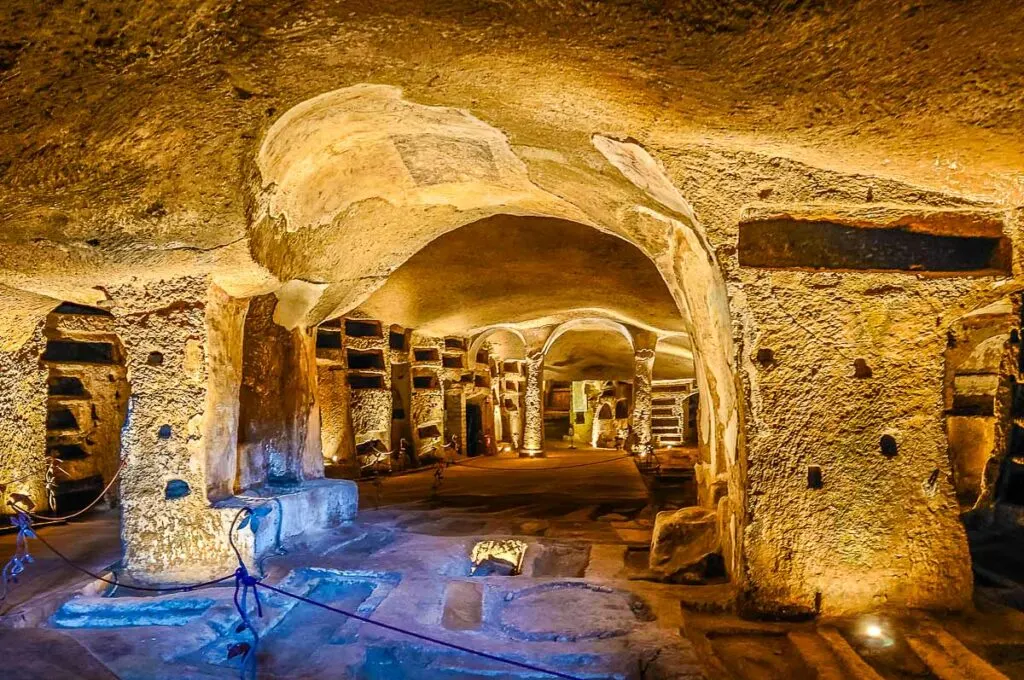
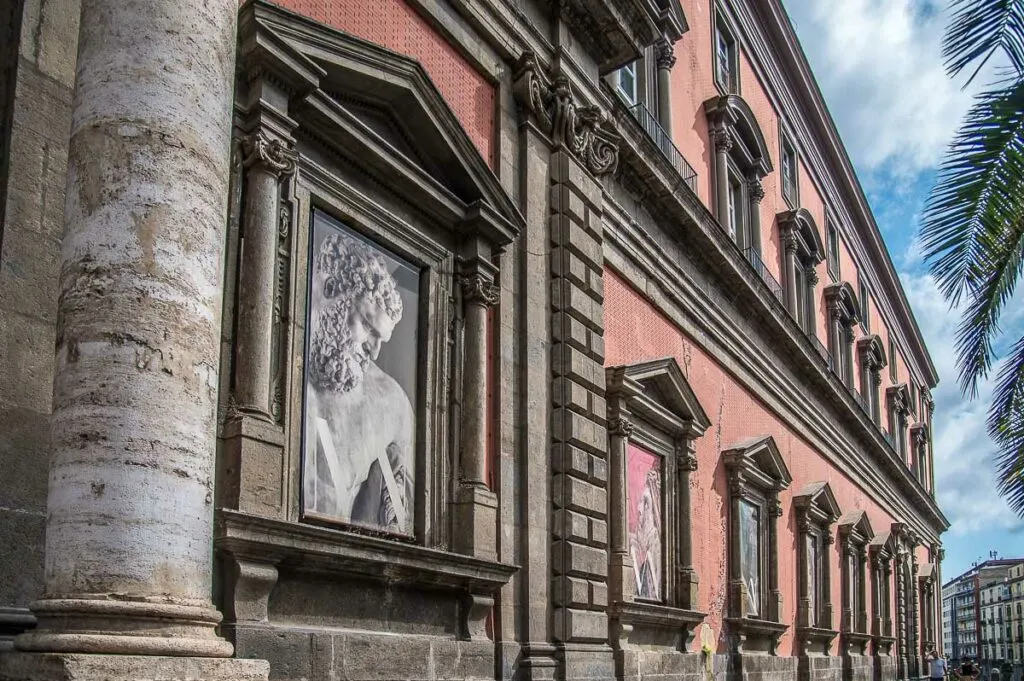
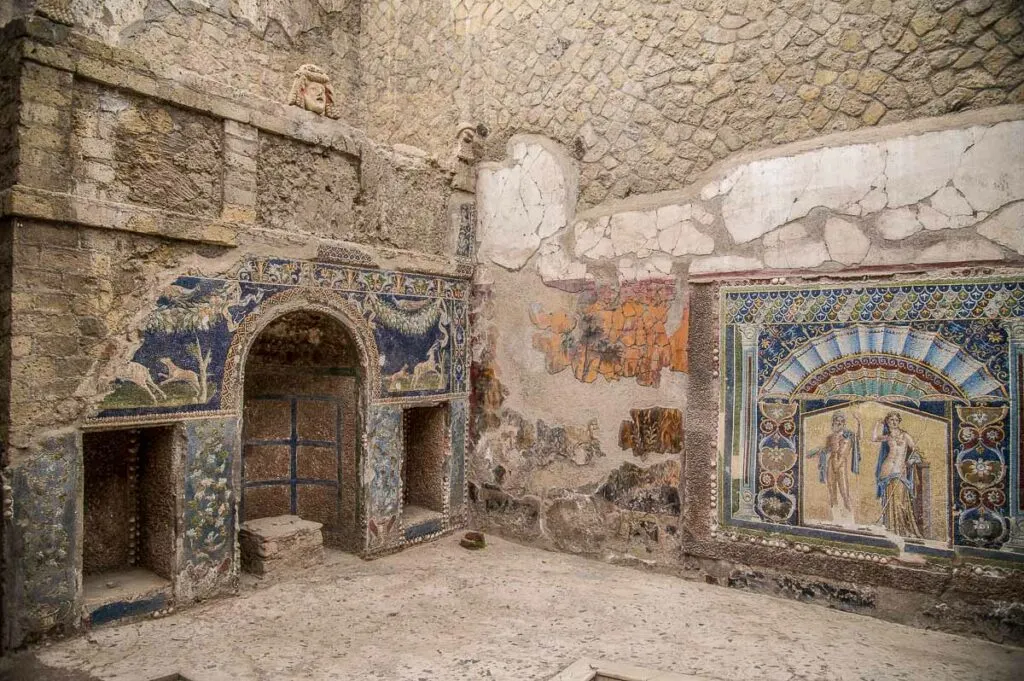
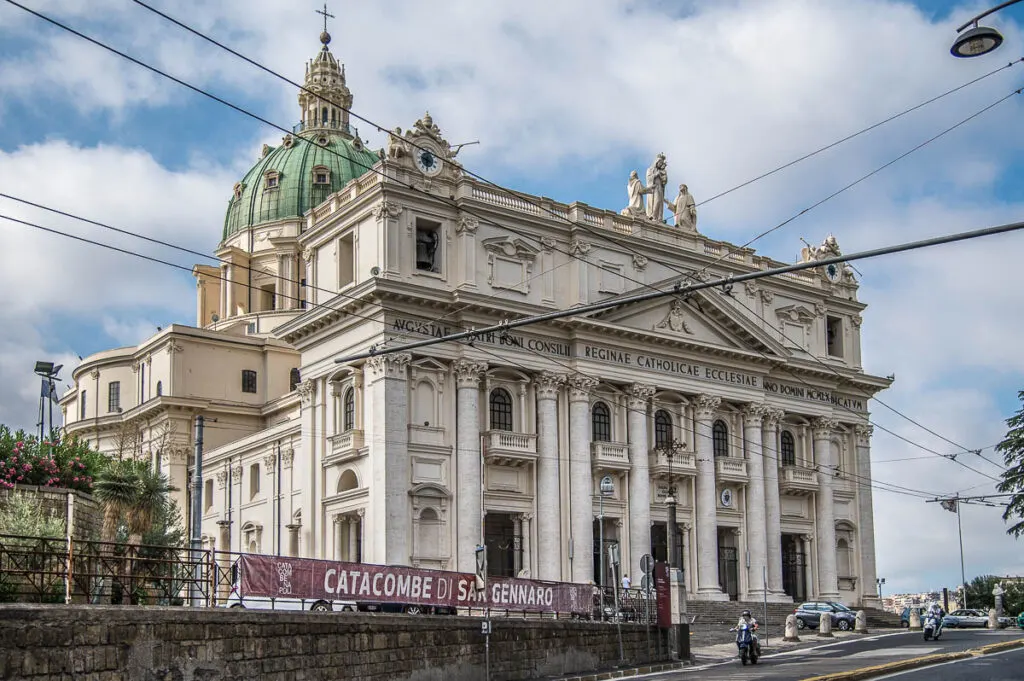
WHERE TO STAY IN NAPLES?
There is a huge selection of places to stay in Naples in any season and for any budget.
You can choose a historic building that nowadays functions as a luxury hotel. You can opt for a comfortable B&B. Or you may prefer an accommodation with its own kitchen to enjoy a home-from-home experience.
When picking accommodation in Naples consider carefully its location. Depending on what you want to do and see here, you may prefer to stay closer to the major landmarks, a bus or metro stop, or in a hidden corner of the city that offers peace and quiet.
If your focus is sightseeing in Naples, then it pays to stay in the historic centre. For more of an upmarket experience, look into the quarter of Chiaia. The area around Piazza Garibaldi and the main train station, Napoli Centrale, is convenient in terms of public transport but it made me feel on the edge every time we needed to walk through it.
Here are some suggestions for places to stay in Naples. All come highly recommended:
Luxury: Grand Hotel Vesuvio, Palazzo Doria Napoli, The Britannique Hotel Naples, Curio Collection by Hilton
Mid-Range: Relais della Porta, Artemisia Domus – Centro Storico, La Lepre Bovio
Budget: Ostello Bello Napoli, Leone Suites Toledo, EMME Napoli
Alternatively, use the map included here to get a quick visual idea of the available accommodation options in Naples, Italy. You can zoom in and out, type in your specific travel dates, and then click on the different price points for detailed information about the hotel you want to know more about.
In addition, have a look at this blog post which explains the different types of accommodation you can book in Italy. It will give you plenty of ideas to look into for the best and quirkiest places to spend the night at here:
WHAT TO EAT IN NAPLES?
Neapolitan food is excellent. Eating here is a great experience that nourishes not just the body but the soul, too. Every meal in Naples has the potential to be absolutely unforgettable. So don’t waste any chances to tuck into yet another delicious local dish.
From inexpensive street food to the freshest seafood and local variations of pasta, Naples has a lot to offer even to the pickiest of eaters.
Pizza is always a good choice in Naples. Deep-fried foods taste so good after a long day of sightseeing. If you have a sweet tooth, you will be delighted with the rich displays of cakes and pastries. And you can finish it all off with a proper Neapolitan coffee prepared with a traditional flip pot called cucumella. Alternatively opt for a local liquor – from the world-famous limoncello to the herbal Strega, a distinctive digestif drink the name of which means ‘witch’ in English.
Here are some of the best Neapolitan foods and dishes to sample during your Italian holiday:
Taralli – this typical for Naples snack is circular in shape and traditionally made of lard, toasted almonds, and black pepper. Nowadays, it comes in many different flavours. Take your pick from the wide selection at Taralleria Neapolitana.
Pizza – you have to have a pizza or two when in Naples! Try as many of the traditional varieties as you can. Take your pick from pizza Margherita (tomato sauce, mozzarella, and fresh basil), pizza Marinara (tomato sauce, extra virgin olive oil, oregano and garlic), pizza fritta (a Calzone-shaped pizza stuffed with different fillings and deep-fried), pizza Montanara (open fried pizza topped with tomato sauce, mozzarella, and basil), and pizza portafoglio (a smaller pizza Margherita or pizza Marinara folded in four and eaten on the go. Or choose any other pizza with classical and innovative toppings offered in Naples’ best pizzerias. Many of them are clustered along Via dei Tribunali in the historic centre. It’s the city’s veritable pizza paradise!
Ziti alla Genovese – this is an iconic Neapolitan dish and it doesn’t have anything to do with the city of Genoa, although there are many theories as to how it got its name. Ziti is a type of extruded pasta typical for the Southern Italian region of Campania of which Naples is the capital. The genovese sauce is made of ground beef, cherry tomatoes, celery, carrots, and lots and lots of onions. It has a slightly sweet taste and it is very more-ish. Order it at La Locanda del Monacone.
Ragù – this Neapolitan meat sauce is absolutely delicious. Tomato-based, it’s made with beef and densely stuffed sausages left to simmer for hours. Try the ragù dishes of Tandem – a famous Neapolitan chain of ragù-centric restaurants. My favourite dish consists of thick slices of provola cheese served with an extra-generous helping of ragù on top.
Cuoppo Napoletano – this paper cone filled up with fried finger foods is proper Neapolitan street fodder. There are two main varieties – cuoppo di terra and cuoppo di mare. The first is a mix of battered and deep-fried chopped veggies, rice balls (known as arancini), potato croquettes, and my favourite – zeppoline (delicious dough balls). The latter is a mix of battered and deep-fried seafood – from calamari to sardines. Try the cuoppo at Passione di Sofi.
Babà (also babà al rum) – you will see these mushroom-shaped and rum-infused sponges all over town. Treat yourself to one when you are in the mood for something sweet and boozy. For added delight, have your babà with lots of whipped cream and strawberries, too.
Sfogliattella – this pastry is typical for Naples and comes in two varieties – riccia (made of overlapped sheets of filo pastry crisped to perfection) and frolla (made of thick shortcrust pastry). Both the sfogliatella riccia and the sfogliatell frolla are stuffed with a delicious filling of ricotta and candied citrus peel. Try the ones sold at Sfogliate e Sfogliatelle.
For an expert introduction to Neapolitan food and Naples’ best food joints, treat yourself to a specialised guided tour. This street food experience will take you around the city’s historic centre to sample traditional dishes in secret eateries frequented by the locals.
Alternatively, taste the best that Naples has to offer with this private tour. Expect ten drink and food tastings and the expert commentary of a foodie guide. If you would rather learn to cook the Neapolitan way, then get busy making your own pizza Margherita or pasta dish followed by tiramisu.
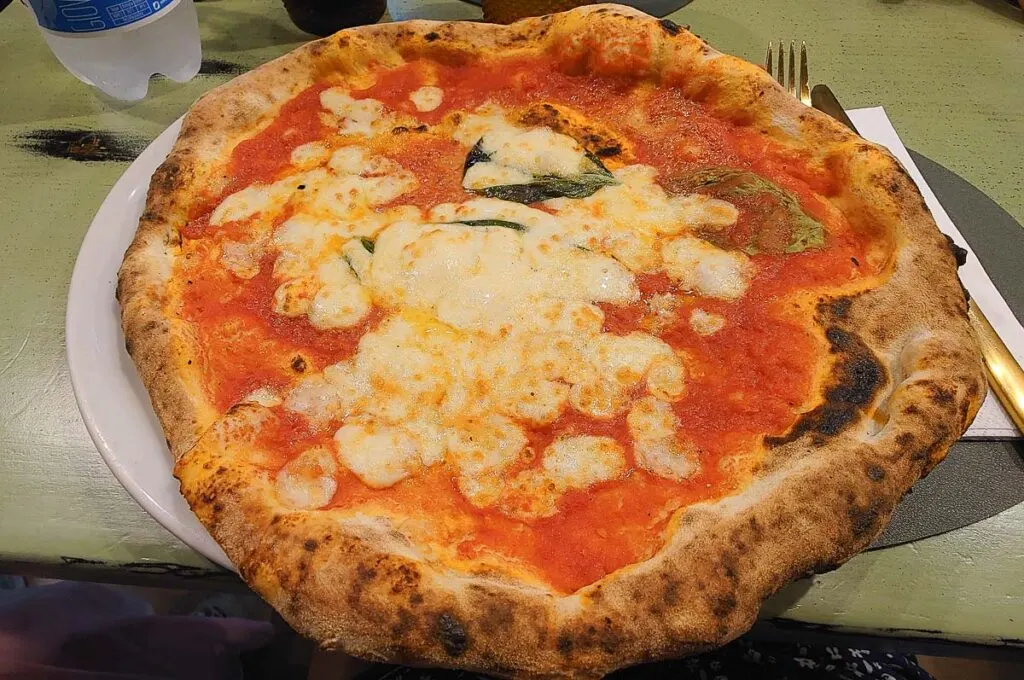
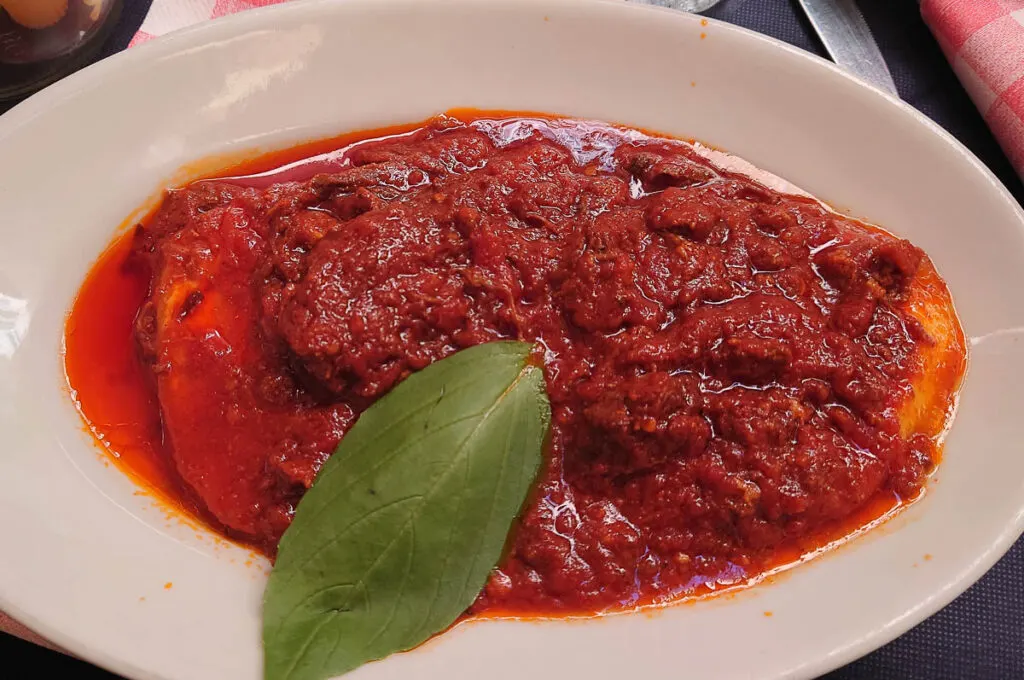
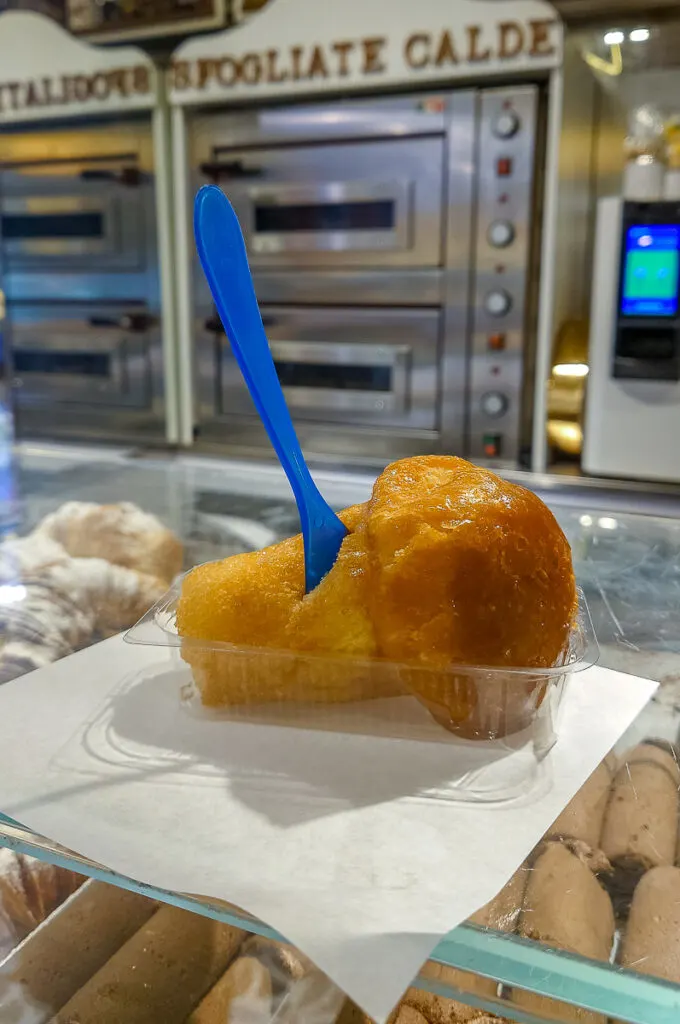
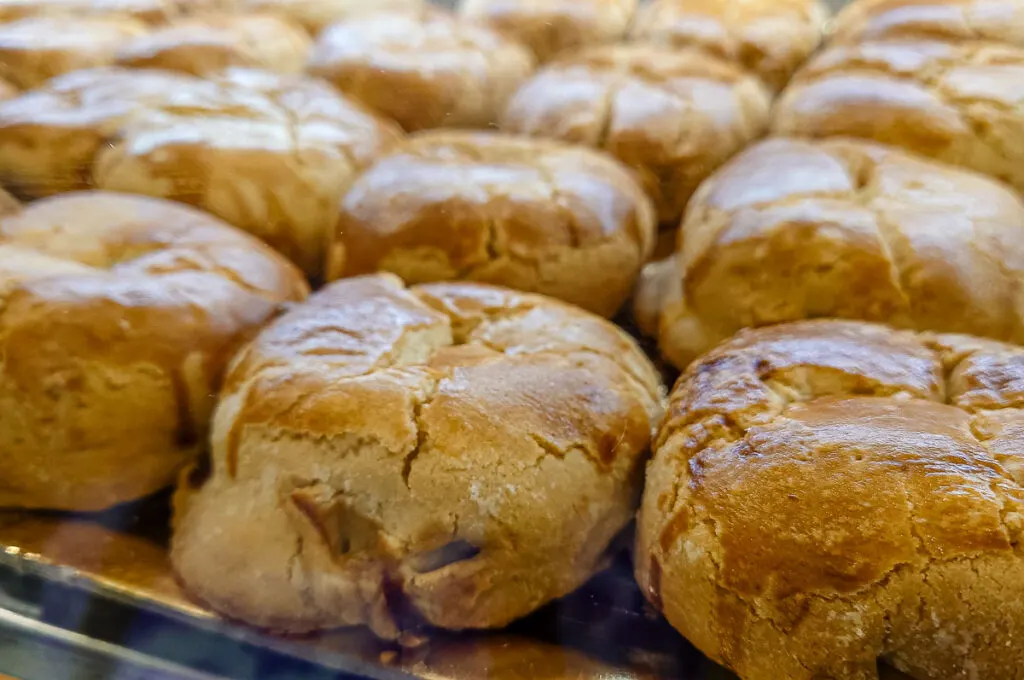
BEST THINGS TO DO IN NAPLES
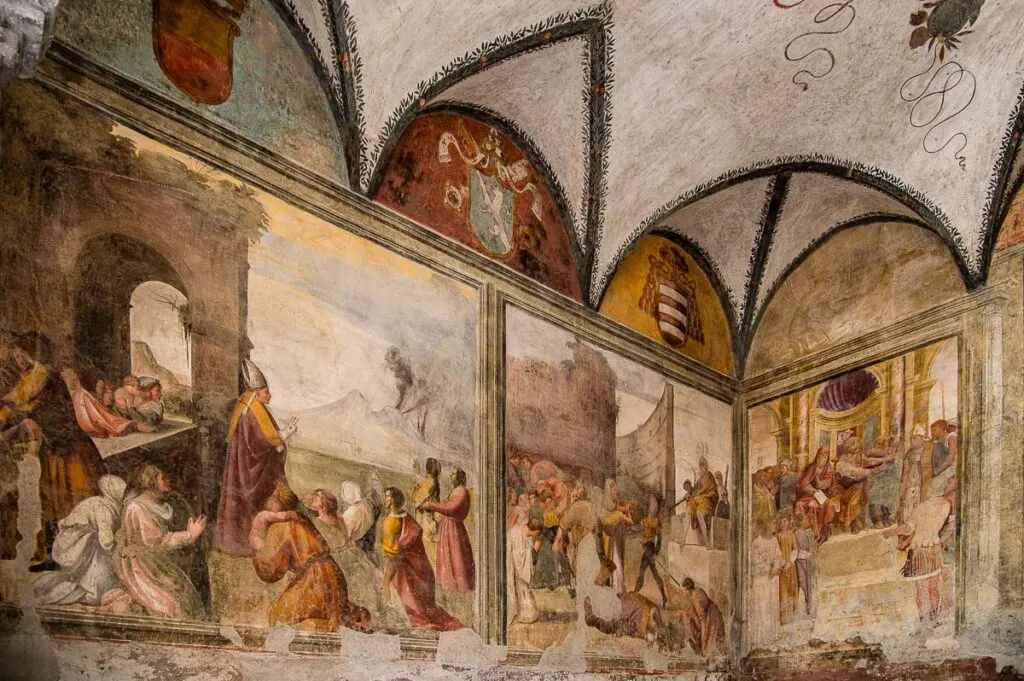
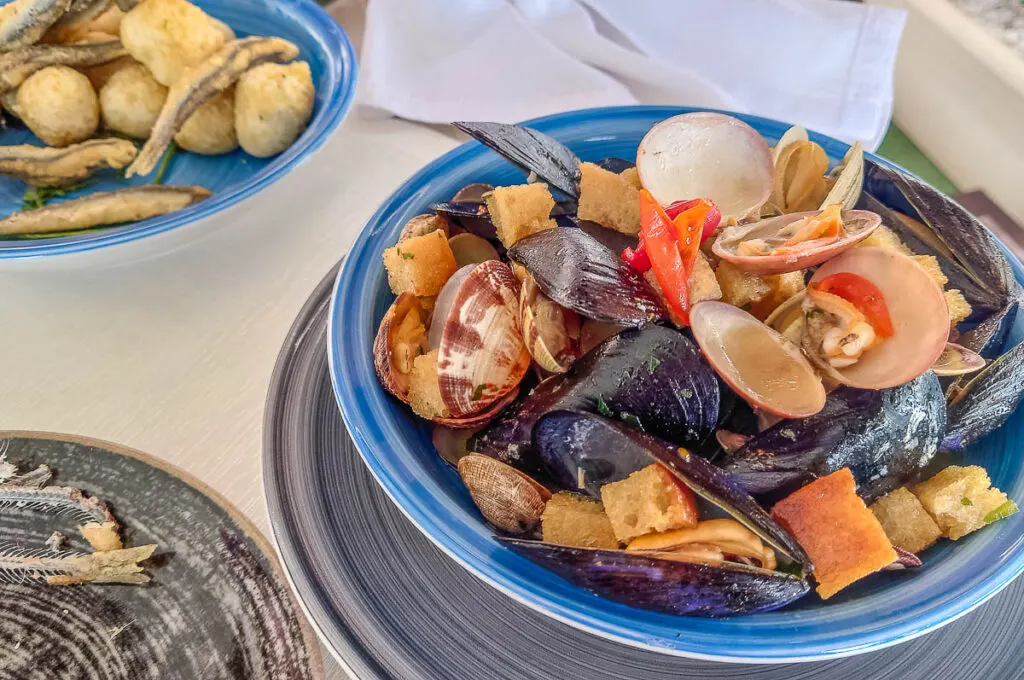
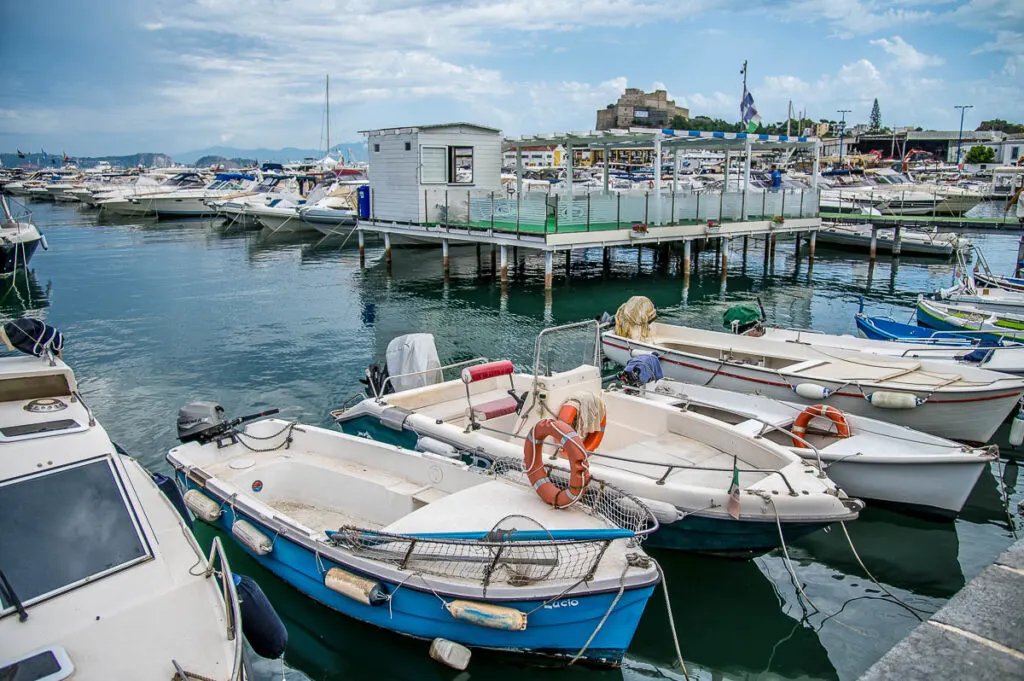
There are many wonderful and exciting things to do in Naples to suit all types of travellers and personal interests. This beautiful city has a lot to offer to the history buff, the art lover, the architecture aficionado, the foodie, the photographer, and above all the person who wants a vibrant and stimulating travel experience.
Here are the main things and activities you can enjoy in Naples. Specific examples for each one of them are provided up and down this page under the different headings of this ultimate travel guide for Napoli.
Sightseeing – Naples is studded with world-famous museums, millennia-old catacombs, and imposing churches with priceless art. With preserved outlines of its ancient Greek and Roman urban plans and plenty of historic spots to explore, this is one of the world’s best cities for sightseeing and landmark visiting.
Eating – Neapolitan cuisine has originated several of the world’s most famous foods with pizza holding the triumphal top spot. Eating here is a cultural experience. Try something new every single meal! Then take a food tour visiting historic deli shops and tiny eateries frequented by the locals. Even better, learn to make pizza the Neapolitan way yourself.
Water-Based Activities – here you are never far from the sea. You can take a ferry or a boat to the islands off the coast of Naples. Or you can enjoy a boat trip around Castel dell’Ovo and snorkelling in the gulf. If you want to combine water and history, then head to the Phlegraean Fields (Campi Flegrei) next door to Naples. In the Submerged Archaeological Park of Baia, you can enjoy a trip on a glass-bottomed boat and even a once-in-a-lifetime diving experience to see Roman mosaics and statues underwater.
Shopping – take advantage of exciting shopping opportunities when in Naples. Invest in a traditional Neapolitan Nativity scene (or at least in a small handmade figurine) on Via San Gregorio Armeno. Buy a selection of cornicelli (Naples’ protective amulet) to give as presents to family and friends. Get a cucumella – Naples’ traditional flip coffee pot. Splurge on handmade cameos and coral jewellery. Shopping in Naples is fun as each traditional, locally-made item has a story to tell.
Daytripping – Naples is a great base for day trips in this corner of Italy. From the world-famous Amalfi Coast to the archaeological ruins of Herculaneum, Pompeii, and Paestum, a long list of exciting destinations are only a short train ride away from Naples.
MAJOR LANDMARKS IN NAPLES
There are many must-see sights in Naples. These five major landmarks should be on top of your Neapolitan bucket list.
Spaccanapoli – one of the most iconic urban arteries in the world. This is a sequence of long straight streets which flow one into another and thus bisect Naples in two. Go for a walk along Spaccanapoli to sightsee and people-watch. Many of the city’s most interesting sights, for example, the Monastery of Santa Chiara, are on it or next door to it.
Sansevero Chapel – visit this small chapel in the heart of Naples to marvel at one of the most famous and most extraordinary statues in the world – the Veiled Christ. The chapel is a work of art in itself and was designed by the Italian soldier, alchemist, and inventor Raimondo di Sangro, Prince of Sansevero. Don’t miss the statues of the Veiled Truth and of Disillusion which are striking by themselves and were dedicated to the prince’s parents. The two 18th-century anatomical machines in the chapel’s basement are creepy yet incredibly intricate. You won’t be able to take your eyes off them!
MANN – National Archaeological Museum of Naples – a splendid museum with many excellent collections covering the ancient civilisations of Egypt, Magna Graecia, and Rome. The Pompeiian frescoes and mosaics are absolutely stunning. If you don’t blush easily, check out the Gabinetto Secreto for some ancient erotic art. To make the most of your visit, consider booking a museum tour. An expert guide will take you around the cavernous building pointing out precious artefacts and sharing the stories behind them for a truly enriching experience.
Piazza del Plebiscito – this expansive square is flanked by the imposing buildings of the Royal Palace and the Basilica of San Francesco di Paola. From Piazza del Plebiscito (a word which means ‘referendum’ or ‘vote’ in English), you can easily walk to several other must-see places in Naples. Among them is the oldest opera theatre in the world, Teatro di San Carlo, the elegant shopping arcade Galleria Umberto I, and the historic Gran Caffè Gambrinus – the oldest still in operation coffee house in the city.
Castel Nuovo (also known as Maschio Angioino) – standing on the waterfront, this 13th-century fortress is one of Naples’ seven historic castles. Notice the large triumphal arch inserted around its main gate. It is one of the pinnacles of Italy’s Renaissance art.
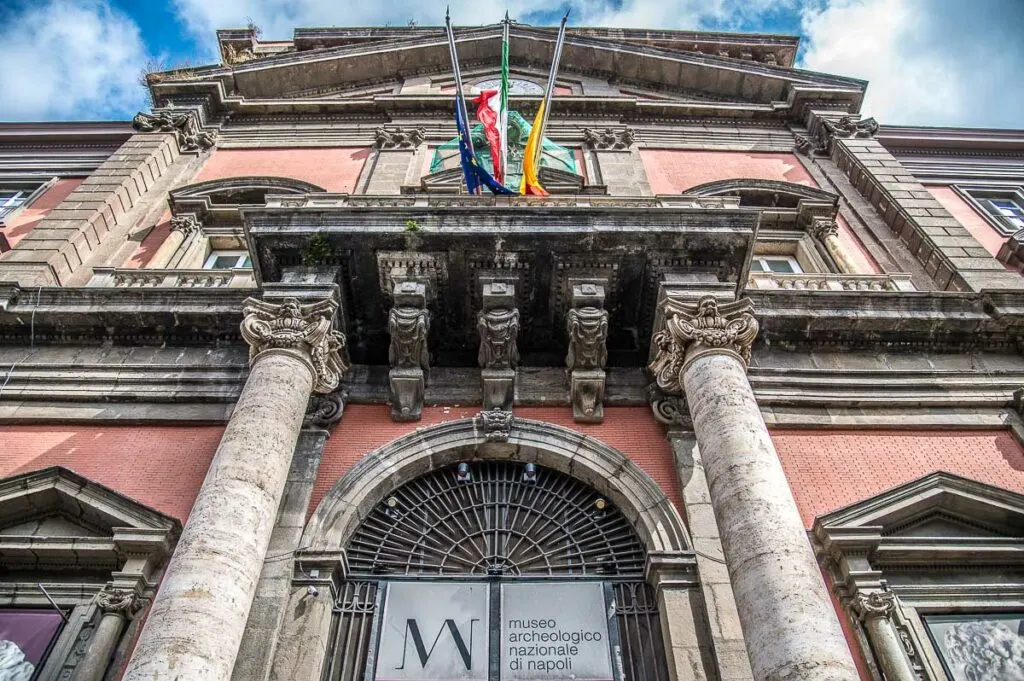
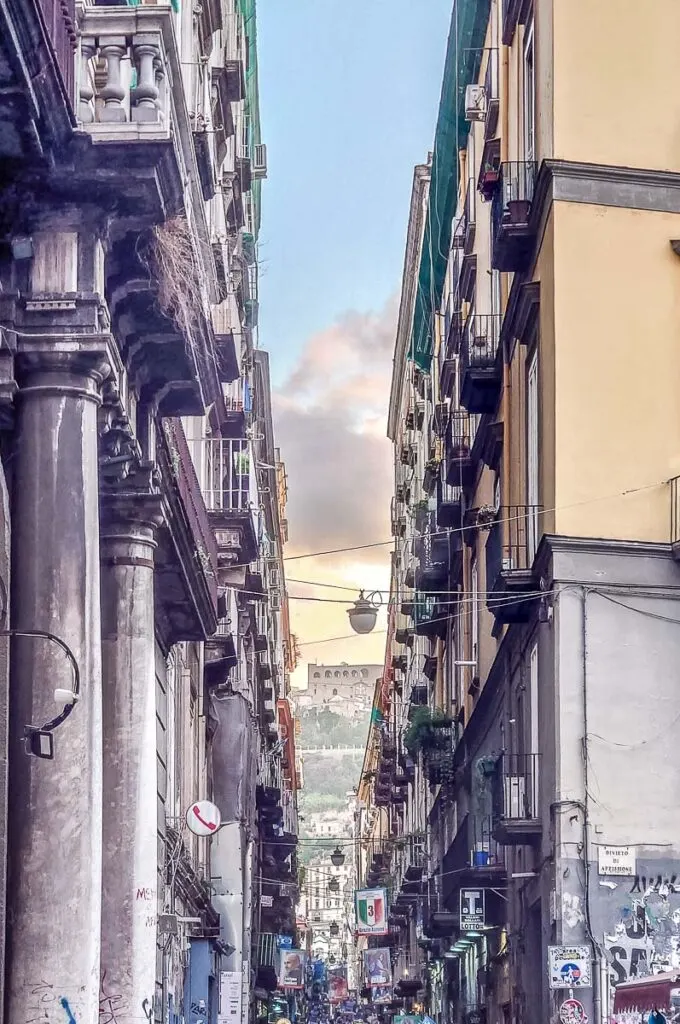
BEST MUSEUMS AND ART GALLERIES IN NAPLES

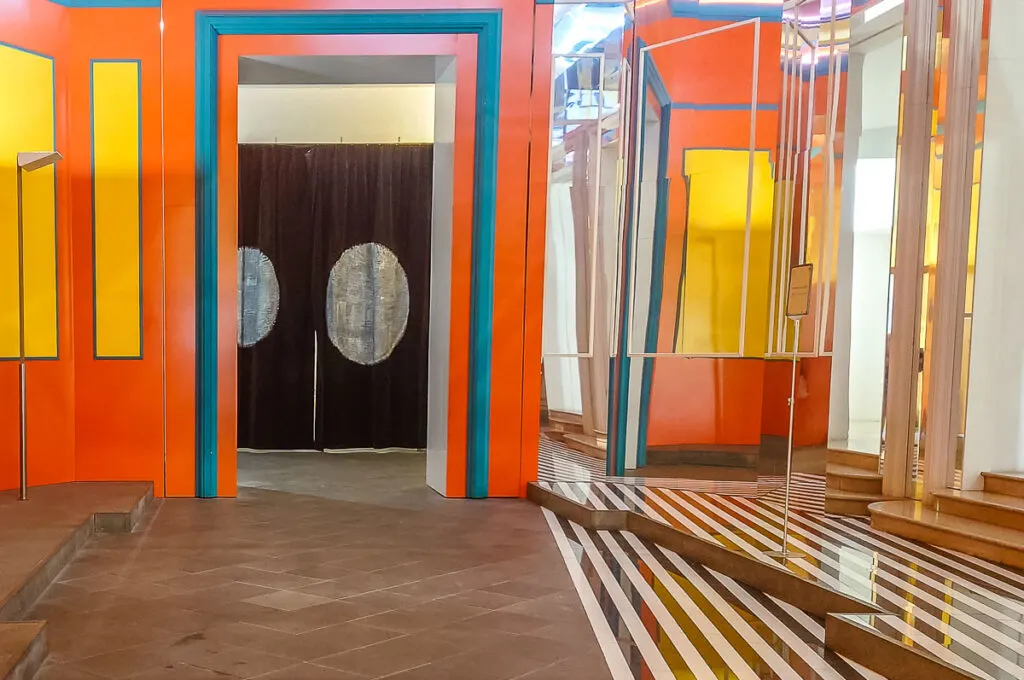
There are many exciting museums dotted all over Naples. In addition to MANN – National Archaeological Museum of Naples and the Royal Palace (see the entry above), here are five of the best among them:
Capodimonte Museum – built to house the renowned Farnese Collection of art, this former royal residence is surrounded by a lush park (originally, a hunting ground). Here you can see and enjoy an endless number of masterpieces by the likes of Botticelli, Titian, and Caravaggio as well as a number of renowned collections of art, porcelain, tapestries, and contemporary works.
Pio Monte della Misericordia Monumental Complex – run by a religious charity founded at the start of the 17th century, this is one of the must-see stops for lovers of art in Naples. It includes an octagonal chapel and a picture gallery housed in an elegant historic palace. Caravaggio’s famous painting ‘The Seven Acts of Charity’ was painted specifically for the chapel and it takes pride of place above its altar. Next door, you can browse a beautiful selection of Baroque and contemporary masterpieces and enjoy a lovely view of the Obelisk of San Gennaro and the dome of Naples’ Duomo.
Gallerie d’Italia – Napoli – I am partial to this group of art galleries which also has branches in the Italian cities of Milan, Vicenza, and Turin (you can see all their works of art on this link). The permanent collection in Naples is eclectic and ranges from Attic and Magna Graecia pottery to works by Neapolitan, Italian, and foreign artists. This gives you a chance to explore the developments in art from ancient history to the 20th century. Caravaggio’s last painting ‘The Martyrdom of Saint Ursula’ is the crowning glory of this must-see art gallery in Naples.
N.B.: Calling all Caravaggio lovers! To learn more about the Neapolitan periods of the great Baroque master, have a look at this guided tour. It takes in the masterpieces and the places frequented in Naples by the painter of darkness and light.
Certosa e Museo di San Martino – this former Carthusian monastery nowadays functions as a museum complex with lush gardens. Here you can spend many stimulating moments looking at art used in all its forms to emphasise and decorate the impressive architecture. The charterhouse’s hilltop position opens splendid panoramic views of Naples and Mount Vesuvius. Next door, you can also explore the military fortress Castel Sant’Elmo.
Museo Madre – if by now you are feeling a bit overwhelmed by ancient ruins and Baroque splendour, a visit to Museo Madre and its excellent collection of contemporary art is just what you need to refresh your eyes and enrich even further your impressions of Naples.
BEST CHURCHES AND MONASTERIES IN NAPLES
Naples is dotted with countless churches, monasteries, and religious buildings. It’s not in vain after all that one of its monikers is the City of 500 Domes!
From the tiniest chapels to the imposing basilicas, Neapolitan churches guard priceless art repositories and unique local traditions. They are also an intrinsic part of the city’s architectural mosaic. Visiting them you can trace the development of building styles and decorative programmes from the Early Christian chapels nestled in the underground catacombs to the Gothic, Renaissance, and Baroque shrines and sanctuaries of Naples.
Here are some of the city’s must-see churches:
Duomo and Museum of the Treasure of San Gennaro – Naples’ cathedral has a millennial history and a cavernous body that incorporates two earlier churches built at the same site. One is the Church of Santa Restituta, allegedly founded in the 4th century by Constantine – the emperor who made Christianity the official religion of the Roman Empire. Nowadays, Naples’ Duomo preserves many priceless artefacts. Among them are the relics of San Gennaro or St. Januarius in English – the city’s main patron saint. It is here that the ritual of liquefying the saint’s blood takes place three times a year – an important event in the Neapoltan calendar (see the heading Events below). Next to the Duomo, don’t miss the Treasure of San Gennaro. Among the many exhibits here, you can see one of the most expensive pieces of jewellery in the world – the saint’s necklace.
Church of Gesù Nuovo – this absolutely massive building was erected in 1470 as a princely palace. A century later it was sold to the Jesuit Order and converted into a church. Lavishly frescoed and ornamented in the Baroque style inside, its main point of interest is its unusual facade. This is made of piperno, a stone formed from volcanic magma, and fully covered by countless small pyramids. Unusual symbols are chiselled in some of these. Recently, it has been suggested that the symbols correspond to musical notes. When played, the resulting piece was, apparently, intended to attract good energy to the building.
Monastery of Santa Chiara – widely famous for its cloister decorated with lavish majolica tiles and Baroque frescoes, this monastery also has an onsite museum and guards the remnants of an ancient Roman bath. Its enormous Gothic basilica was almost completely destroyed during the Second World War (after Milan, Naples was the most bombarded Italian city) and then it was painstakingly restored to its former glory.
Museum Complex of Santa Maria delle Anime del Purgatorio ad Arco – this is one of the main centres of Naples’ curious cult of the souls in purgatory or anime pezzentelle in Italian. It consists of two churches. The decoration of the upper one explores the themes of death and salvation. The underground one is where many of Naples’ poor and destitute citizens were buried in the past. The locals, believing them to be stuck in purgatory, would come here to pray over their remains. This gave rise to the idea that the dead could serve as intermediaries between the living on Earth and the saints and God in heaven. So skulls were treated with special care and requests would be addressed to them.
N.B.: If you want to learn more about the cult of the anime pezzentelle, make sure that you also visit the Fontanelle Cemetery (due to re-open in 2024), the Monumental Complex of St. Anne of Lombardi, and the Church of Santa Luciella ai Librai.
Basilica of Santa Maria della Sanità – built over the Catacombs of San Gaudioso, this resplendent Neapolitan church is notable for its elevated altar and the double staircase that leads to it. Covered with bright majolica tiles, its large domes reflect beautifully the light, especially on a sunny day. If you book to see the catacombs (one of Naples’ best underground sights), the guide will tell you a bit about the church and the cult of San Vincenzo Ferrer – the patron saint of the quarter of Sanità and to whom the locals address prayers when they want to have a child.
Church of San Francesco di Paola – inspired by the Pantheon in Rome, this expansive Neapolitan church brims the city’s main square, Piazza del Plebescito, with its long colonnade. Built in the early 19th century in the Neoclassical style, it stands out with its portico and enormous central dome.
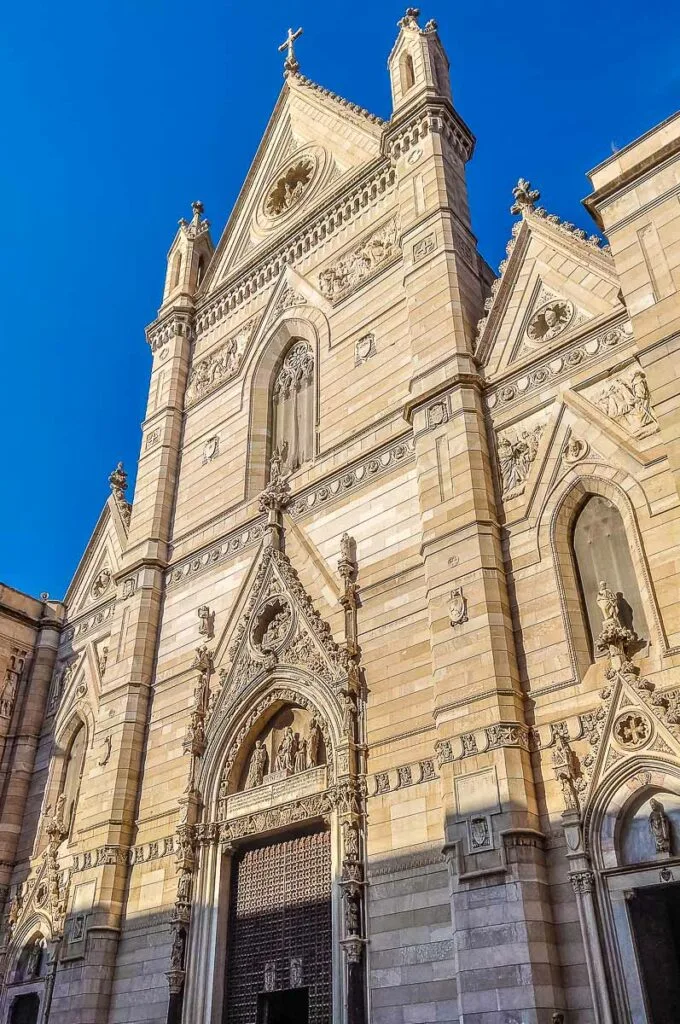
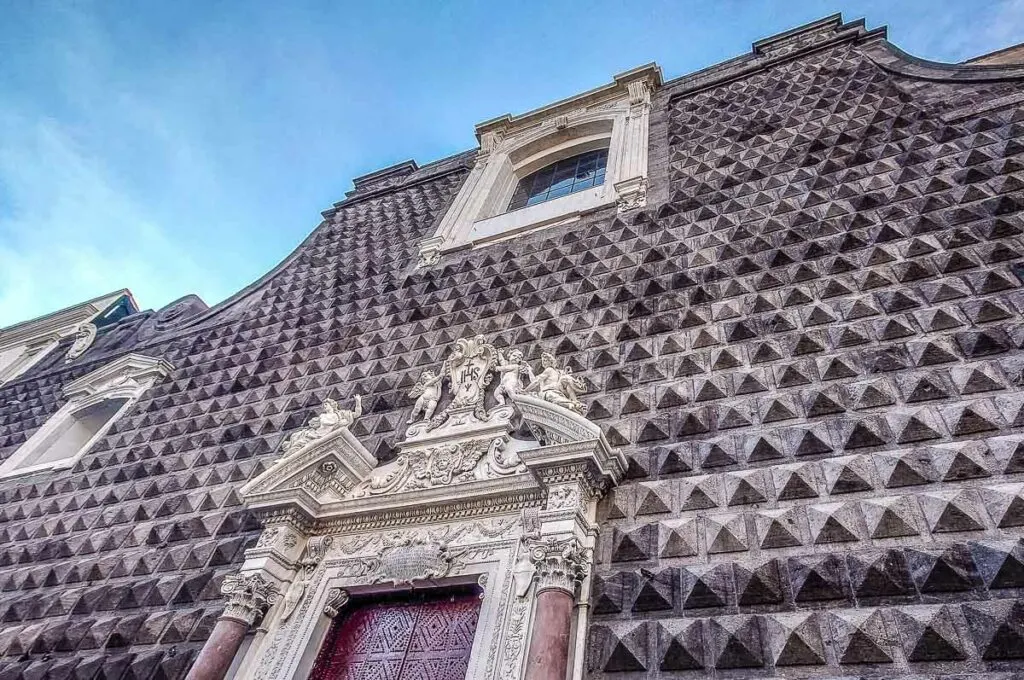
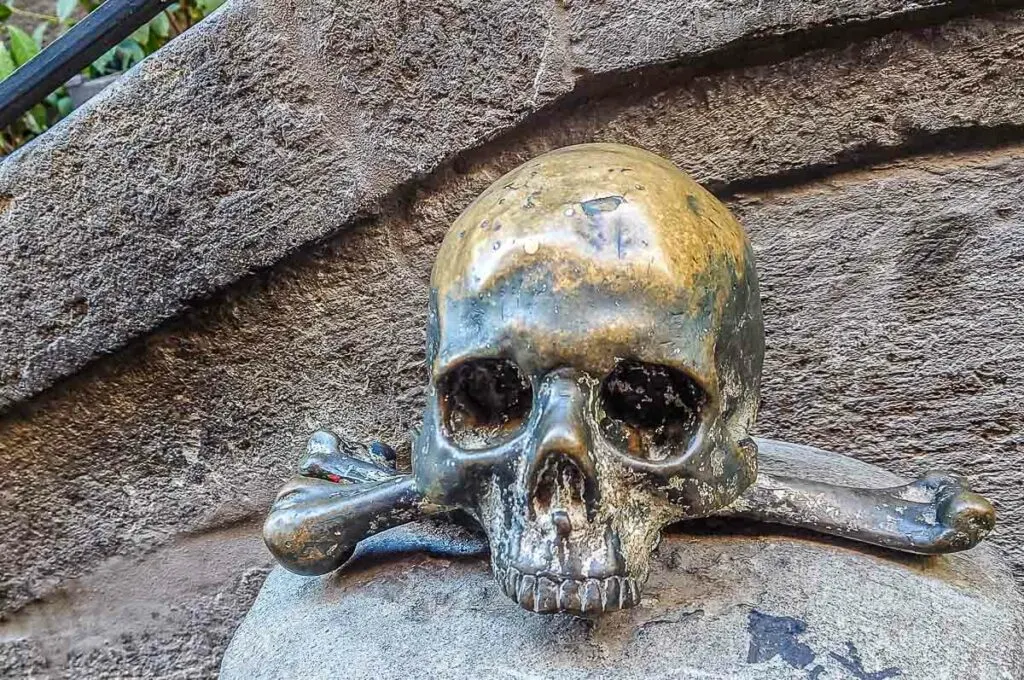
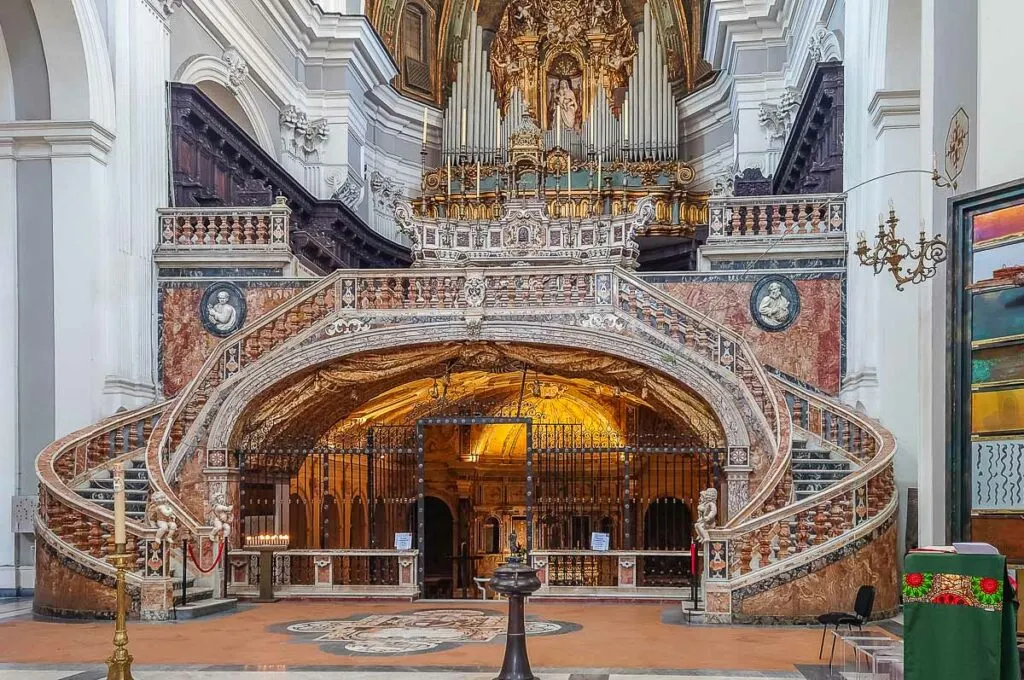
HIDDEN GEMS IN NAPLES
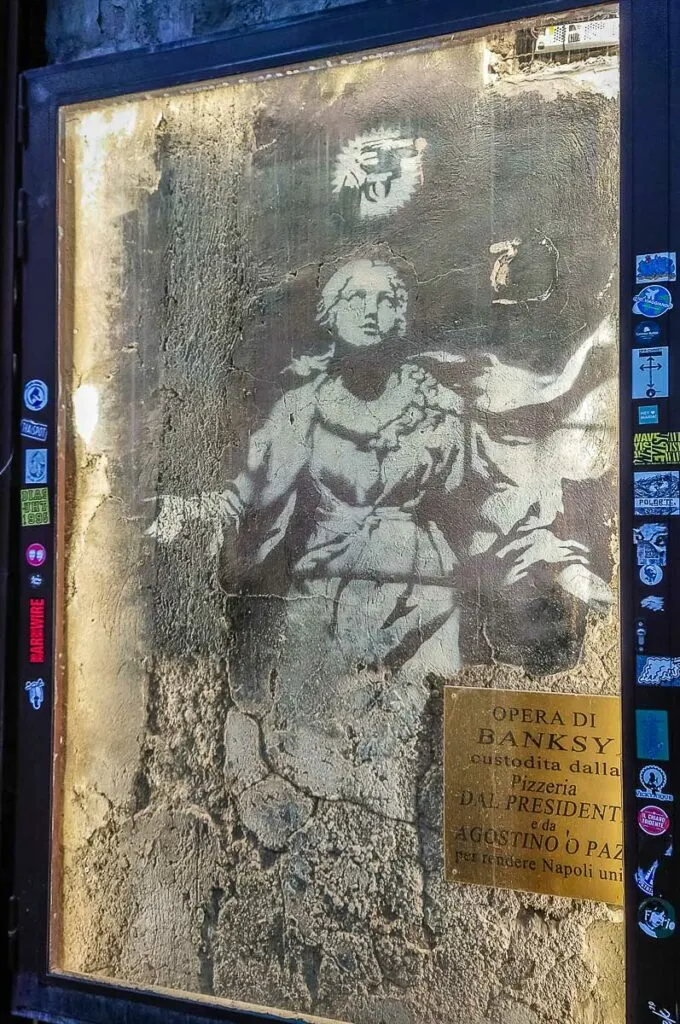
A city like Naples has a lot of secrets and hidden corners. Try to uncover as many of them as possible for a truly memorable trip. Make a note of the sights below and step off the beaten path.
Madonna con la Pistola by Banksy – up to 2019, this was the only documented mural by the artist in Italy. You can see it on Piazza dei Girolamini and it represents the Madonna with a gun where her halo should have been.
N.B.: Naples is a great place for street art. Everywhere you go, you will see murals and graffiti of differing quality adorning the facades of both historic and modern-day buildings. Keep an eye out for the graffiti of Trallalà – the moniker of the Naples-born artist Alfonso de Angelis. His fleshy ladies (known as ciaciona in Neapolitan) are particularly iconic.
Incurables’ Monumental Complex – come here to learn about the history of medicine in Naples and to visit the splendid Pharmacy of the Incurables, the Museum of the Sanitary Arts, the 16th-century cloister, and the medical garden.
Library and Monumental Complex of the Girolamini – a beautiful church with cloisters and a splendid historic library. From precious art to rare books, there is much to be seen and admired here far from the tourist crowds.
Monumental Complex of St. Anne of Lombardi – this 15th-century church preserves extraordinary works of art. In the sacristy, you can see the Sistine Chapel of Naples – an important fresco cycle by Giorgio Vasari, the Tuscan Renaissance painter and art historian. In the Crypt of the Abbots (or Hypogeum), you can learn about the Neapolitan scolatoi or draining holes where the bodies of the deceased underwent a somewhat gruesome and long procedure to liberate the bones from the flesh in an act which was believed to expiate the soul.
Naples’ Stairways – about 200 stairways and ramps connect the city’s flatter parts to its hilltop quarters. Following one of these inclined paths weaving past houses, churches, and monuments, is a great way to explore Naples and enjoy splendid panoramas of the urban sprawl and Mount Vesuvius. Among the stairways with the best views are the Pedamentina a San Martino, the Montesanto Stairs, and the Gradini del Petraio.
CATACOMBS AND UNDERGROUND SPACES IN NAPLES
Almost 3,000 years old, Naples is a city of layers. Many of these run deep under the streets and are keepers of marvellous stories that oscillate between the sacred and the macabre. Often within the same space below the surface.
Uncovering Naples’ underground secrets is a major portion of getting to know this one-of-a-kind city in Southern Italy. There is a bewildering number of underground tours and experiences for you to choose from. Here are some of the best:
Catacombs of San Gennaro and Catacombs of San Gaudioso – visiting these catacombs was my favourite experience in Naples. Both are accessible on the same ticket via guided tours. You will need to book your entry times in advance. I suggest that you head first to the Catacombs of San Gennaro on the far end of Rione Sanità (near the Capodimonte Museum and Park and next door to the imposing Basilica of the Crowned Mother of God). Here you will learn about the early Christian history of Naples and see prized frescoes and mosaics from the first millennium AD, as well as tombs chiselled directly in the volcanic tuff rocks. The focus of the guided visit to the Catacombs of San Gaudioso, on the other hand, is on the funeral ritual of scolatura. This was practised by Naples’ nobility and clergy of the 16th and 17th centuries and prescribed the draining of the bodies after death of all fluids in order to liberate the bones from the sinful flesh. Leave at least an hour between your visits to the two catacombs and explore Rione Sanità. If you can’t see both on the same day, your ticket for San Gaudioso is valid for 12 months after your visit to San Gennaro.
Napoli Sotterranea – Naples’ most popular underground tour. It takes in the city’s ancient water cisterns, the ruins of the ancient Roman theatre, stories from World War II, and even a recently planted underground garden. An exciting experience on many levels which culminates with a short walk down pitch-black narrow corridors to reach water pools with amphoras suspended above them. People suffering from claustrophobia can skip this part and wait for the rest of the group in a spacious underground chamber before continuing with the tour.
Bourbon Tunnel – built in 1853 and heavily used during the Second World War, this space below the surface of Naples has many stories to tell spanning four centuries. Especially photogenic are the abandoned cars and motorcycles that line up the tunnel. Next to them are stored statues from the fascist period.
Spanish Quarters Underground Guided Tour – winding tunnels will take you to the remains of the Neapolitan aqueduct deep beneath one of the city’s liveliest and most authentic quarters. From the ancient Greeks to the Second World War, you can trace Naples’ history as you walk along the dimly lit corridors.
San Lorenzo Maggiore and Neapolis Sotterrata – a wonderful journey through time that gives you a chance to trace Naples’ development from the 5th century BC to the 18th century AD both below and above ground. Here you can see the remains of a 1st-century AD Roman market, visit the imposing basilica where the 14th-century Renaissance humanist and writer Bocaccio met his muse Fiametta for the first time, and amble through historic halls decorated with splendid frescoes.
Basilica of Santa Maria Maggiore alla Pietrasanta and LAPIS Museum – this imposing 17th-century church stands at the spot of an early Christian basilica that was preceded by an ancient Roman temple dedicated to the goddess Diana. 35 m underneath it, you can visit Naples’ museum of water. Expect Greco-Roman cisterns and a submerged portion of the Roman Decumanus (the east-west oriented road that bisected the city in the past). Once you return to the surface, stop for a coffee in Diaz Microtorrefazione (one of Naples’ best coffee shops) in the shadow of the church’s 11th-century bell tower.
Church of Santa Luciella ai Librai – it’s easy to walk past this small church in the historic centre of Naples and not even suspect the stories and curiosities it keeps. The skull with ears takes the central place among them. They say that in the past, Neapolitan women would come to pray to it and whisper in its ears their innermost secrets and desires. The church’s crypt can be visited with a short guided tour. In the past, the funerary ritual of scolatura was practised here, too.
Underground Stations of Art – 15 stations along Line 1 and Line 6 of Naples Metro host over 200 works of art by 90 artists both from Italy and all around the world. Started in 1995, the project Stazione di Arte has produced some of the most beautiful metro stations in Europe with Stazione Toledo the receiver of many awards and accolades. Other metro stations worth a mention here are Università, Dante, Museo, Materdei, and Garibaldi. Even just travelling around the city of Naples is already an experience of art.
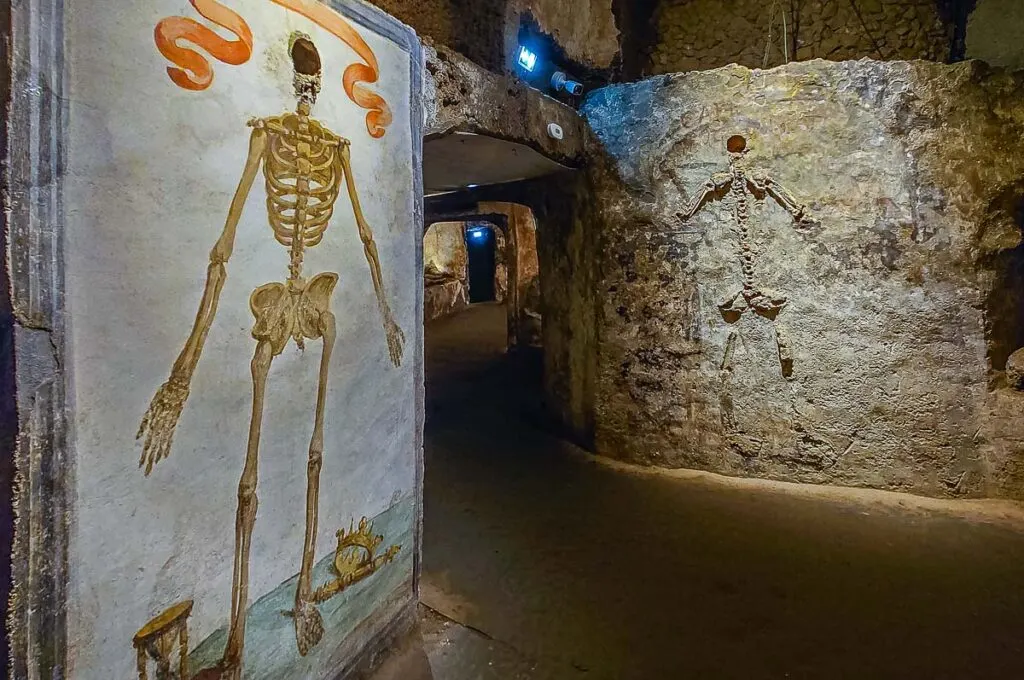
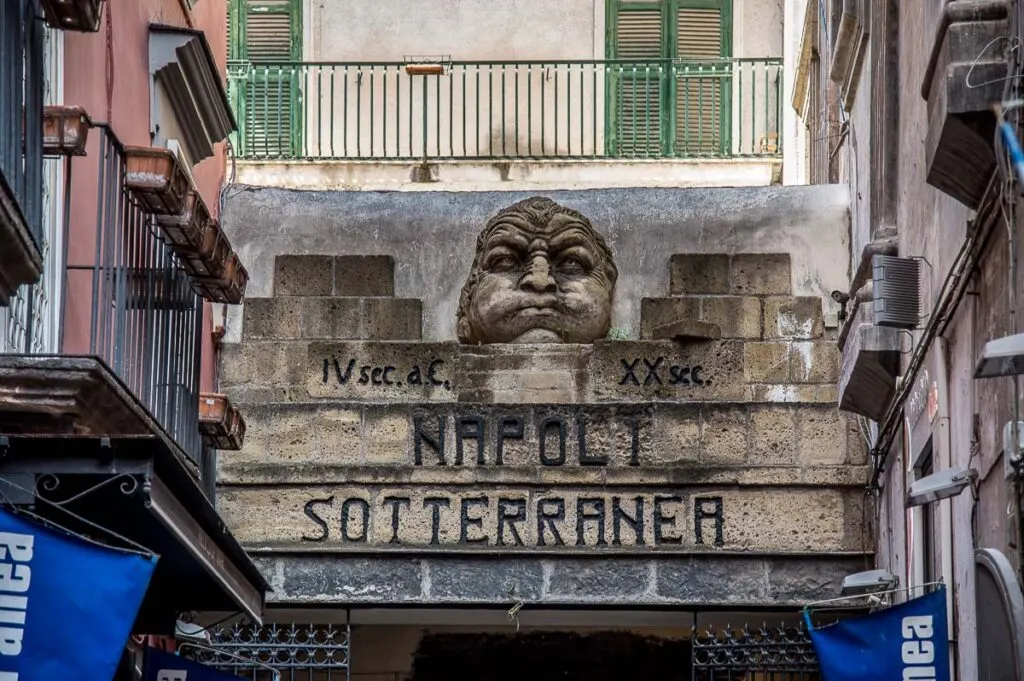
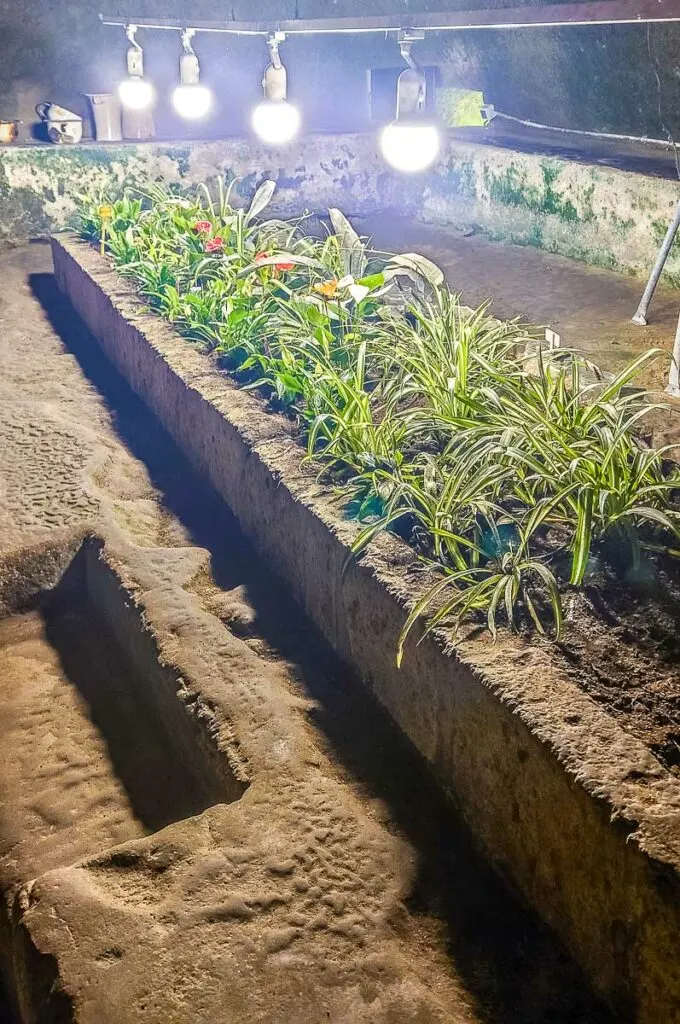
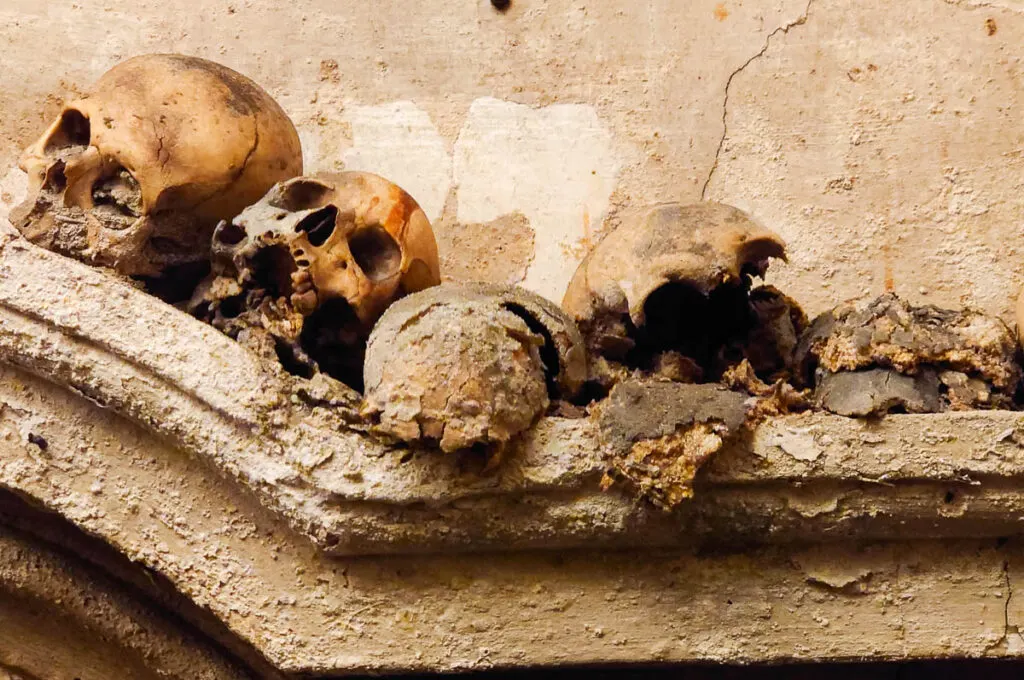
CURIOUS THINGS TO SPOT AROUND NAPLES
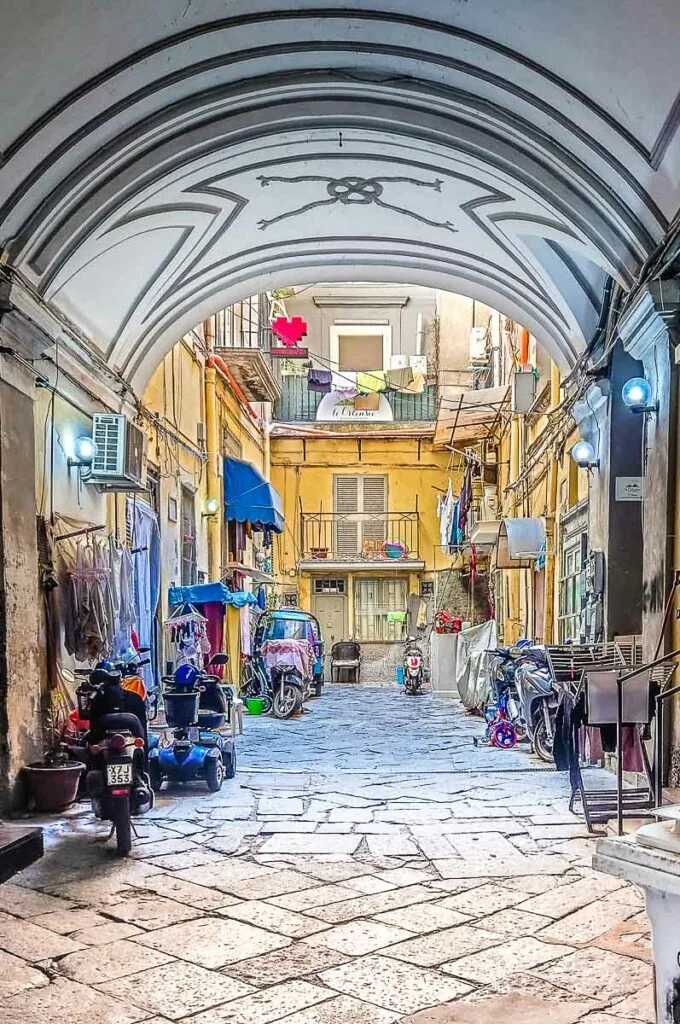
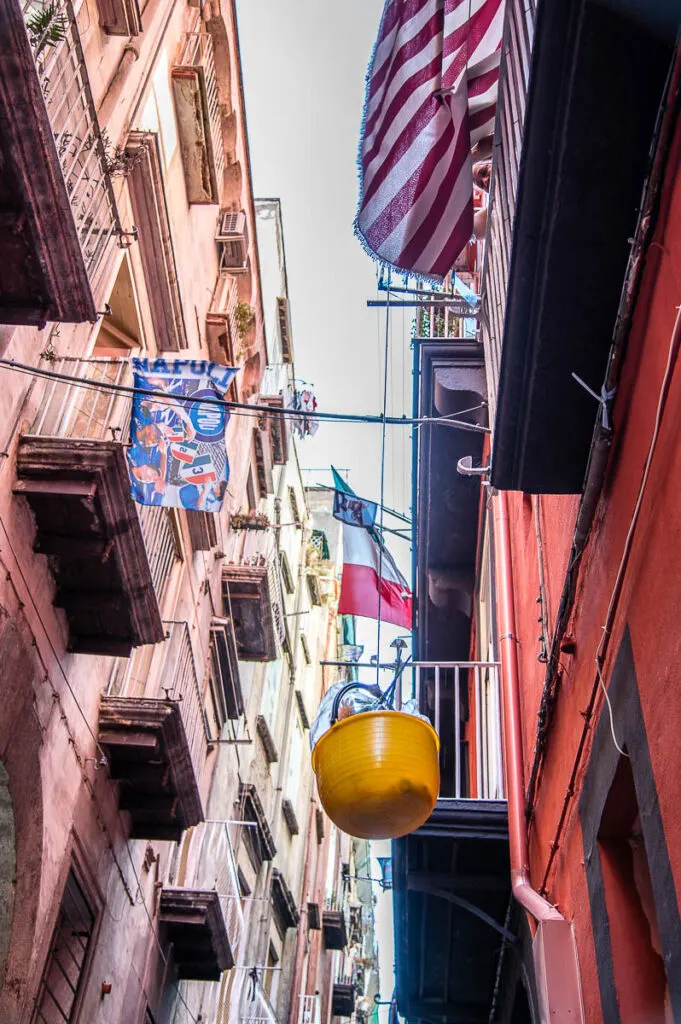
Here are five curious things that made an impression on me as I was exploring Naples with my family. You will come across them all around the city. They make it the lively, crazy, multilayered place that it is. I am mentioning them here to give you yet another angle (or angles) from which to approach Naples, experience its traditions, and capture truthfully its character.
Courtyards – a nucleus of authentic Neapolitan life, the courtyard is where you will find in no particular order parked cars and mopeds, rows of post boxes, the obligatory clotheslines, pots with plants, recycling bins with strict instructions on what to put in each, and so on. Providing an island of tranquillity in a densely built city, courtyards here are usually square or rectangular and flanked by balconies and rows of windows. Huge wooden gates block access to the courtyard from the street. These have a small door cut out in them to allow residents to walk in or out when the gates are closed.
Baskets – in a multi-storey city such as Naples, baskets come in handy when you don’t want to rush downstairs every time a delivery driver rings the bell. Instead, people drop a basket suspended by a cord from their balcony and then pull it up with the delivered item safely inside. Pure genius!
Mopeds/Scooters – these two-wheel vehicles are everywhere in the city. They are the main form of transport here, especially in the historic quarters. From teenagers to octogenarians, everyone rides them. Often, you can see a whole family with the baby and the dog on a single moped. You will quickly learn to jump out of the mopeds’ way, especially on the narrow historic streets with no pavements. Your head will be on a swivel at all times and you will subconsciously start to double up any walking time predicted by Google Maps, as by your first afternoon in Naples you will know that walking with a constant stream of mopeds right next to you is very time-consuming. Neapolitans seem to think that helmets are optional. I certainly don’t recommend not wearing one if you decide to brave the local traffic and ride around on a moped yourself.
Shrines – in Italian, they are known as edicole votive or edicole sacre. These are shrines attached to the walls of houses and buildings. You will see dozens of them as you walk around the city. A heartfelt expression of popular devotion, they vary in size and are decorated with religious images, candles, rosary beads, and plastic flowers.
Basso (pl. bassi)- also known as ‘o vascio in the Neapolitan language, these are small ground-floor flats with doors that open directly on the street. As you walk around town, your eyes will spontaneously look through the windows and the doors of many bassi giving you glimpses of real life. Some of these flats are so small that the marital bed stands right opposite the kitchen sink. In others, the occupants have reclaimed a corner of the street by fencing it off as a small verandah or placing large pots with plants to turn it into a personal garden. The family’s laundry flaps on freestanding driers placed directly on the pavement or on makeshift clotheslines. Some bassi have been turned into shops or workshops where you can buy bread or fresh fish or have your moped repaired if you need.
BEST PRESEPI IN NAPLES
A presepe (also known as presepio in Italian and a Nativity scene in English) is a figural representation of the Holy Family in the stables of Bethlehem. It is the focal point of festive decorations in Italian homes during the Christmas season. You can read more about presepi in this blog post:
Naples is Italy’s main centre of presepe-making. Handmade Neapolitan presepi are recognised for their beautifully carved and sculpted figurines, complex settings, and the introduction of folk characters, scenes of daily life, and even representations of modern-day celebrities in the Biblical Nativity scene.
A visit to Via San Gregorio Armeno is a must when you are in Naples. This is the street in the heart of the historic centre where you will find the largest concentration of presepe-making workshops. It’s Christmas all year round here.
As part of your sightseeing in Naples, don’t miss the following large-scale and very intricate presepi in the city:
Presepe Favoloso in the Basilica of Santa Maria della Sanità – this is my favourite Nativity scene in Naples. Four metres long and two metres high, it has over 100 figurines and it was made in 2021. The curious thing about it is that it incorporates figural representations of countless Neapolitan folk stories and contemporary happenings. As such, the Holy Family is surrounded by weird and wonderful characters that make you want to learn more about Naples’ myths and traditions. You can see this presepe as part of the guided tour of the Catacombs of San Gaudioso.
Cuciniello Nativity in the Museo Nazionale di San Martino – this large and complex presepe is composed of figurines of 173 people, 42 angels, and 80 animals (including two monkeys!). 450 miniature objects complete the scene.
Presepe del Banco di Napoli in the Capella Palatina of the Royal Palace – this lavish Nativity scene is composed of 354 pieces dating to the end of the 18th and the beginning of the 19th centuries. All of them were designed and handmade by famous artists of the time, for example, Giuseppe Sanmartino, the sculptor of Naples’ most famous statue – the Veiled Christ.
Presepe by Fratelli Capuano in their bottega on Via San Gregorio Armeno – this Nativity scene was made in 2006 by the artisans of one of Naples’ most renowned presepe-making workshops. In the style of an 18th-century Neapolitan presepe, it is incredibly detailed and expansive in size. There is a nominal charge of one euro to see this presepe.
Sala del Presepe in the Monastery of Santa Chiara – this large-scale Nativity scene is composed of 18th-century pieces commissioned during the reign of Ferdinand IV. The king himself was a big fan of presepi
Don’t worry if you don’t manage to see exactly these five Neapolitan presepi. Large-scale Nativity scenes are installed all over Naples, especially in the local churches. The best time of the year to see them is obviously around Christmas but they add a touch of whimsicality and wonder to your memories of this Italian city no matter the season.
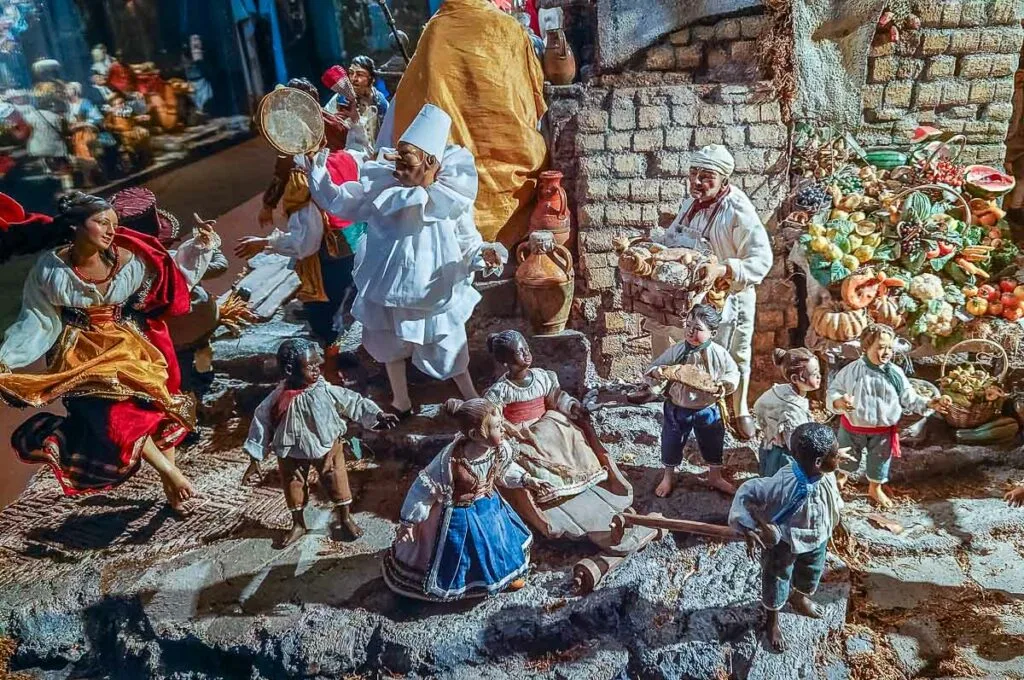
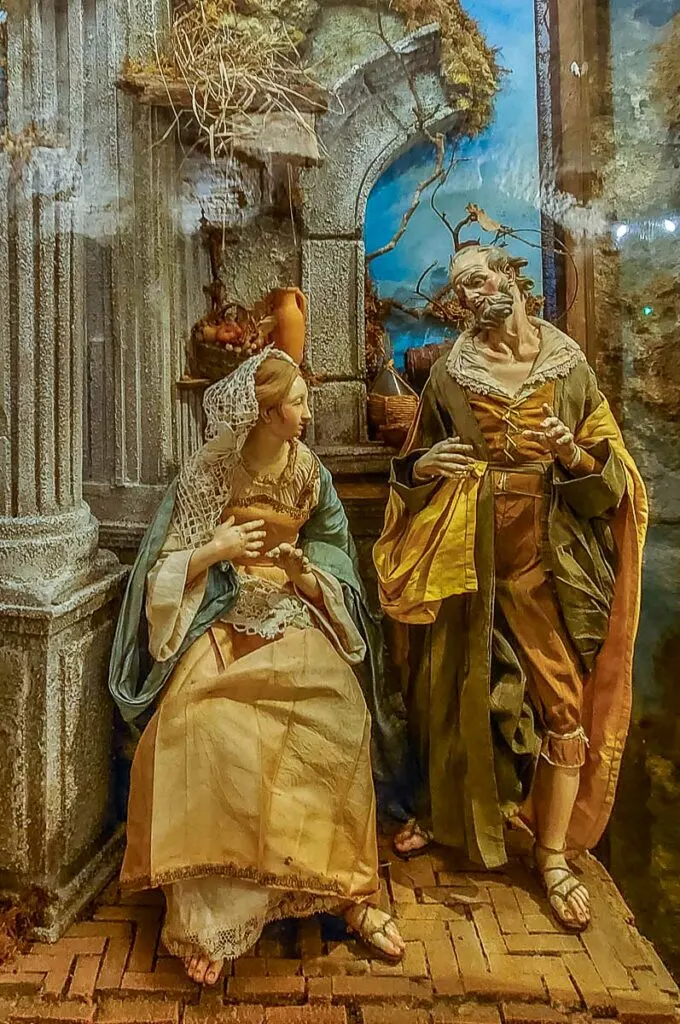
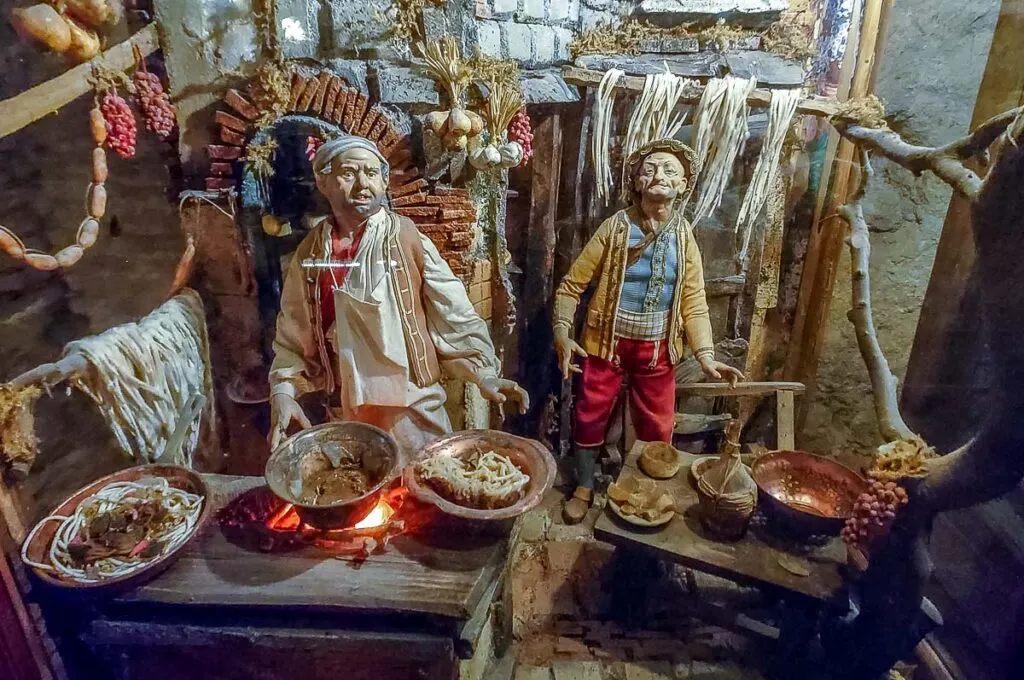
EVENTS IN NAPLES
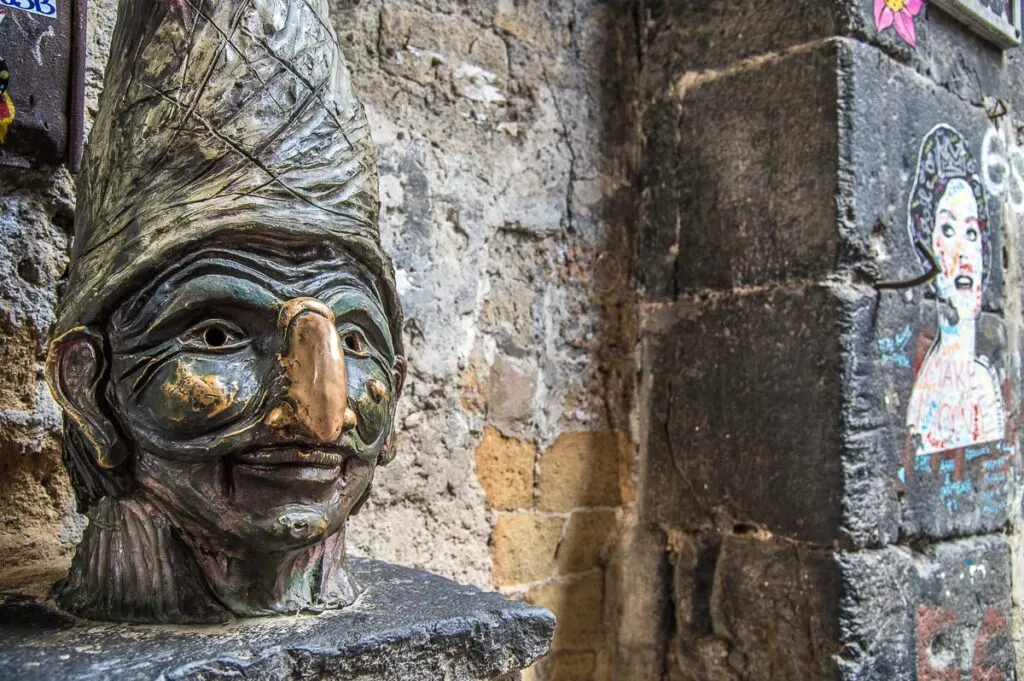
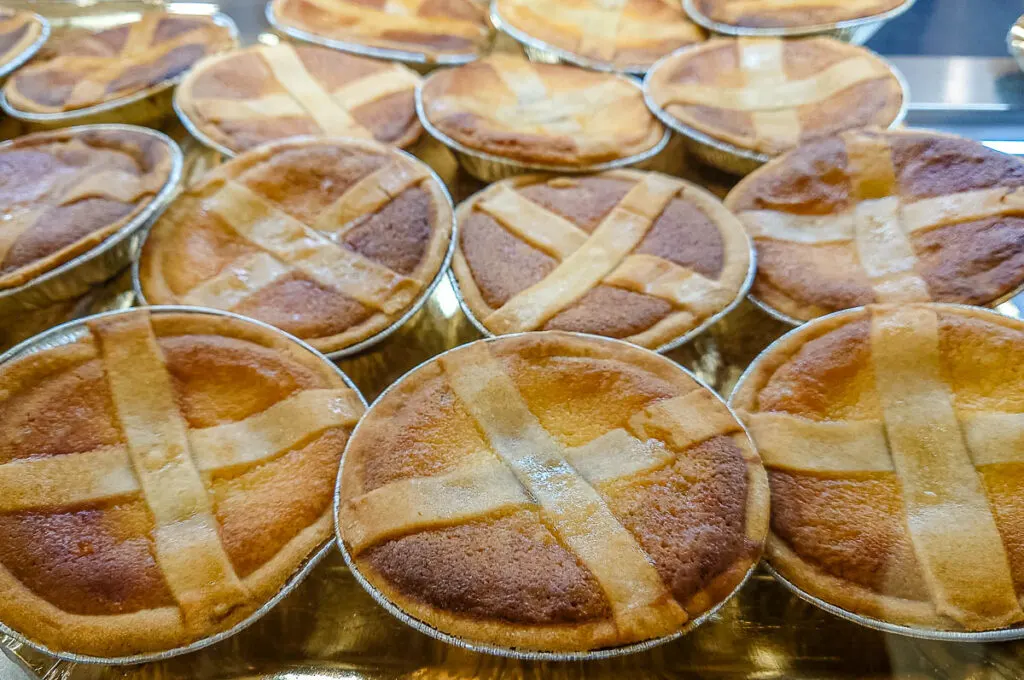
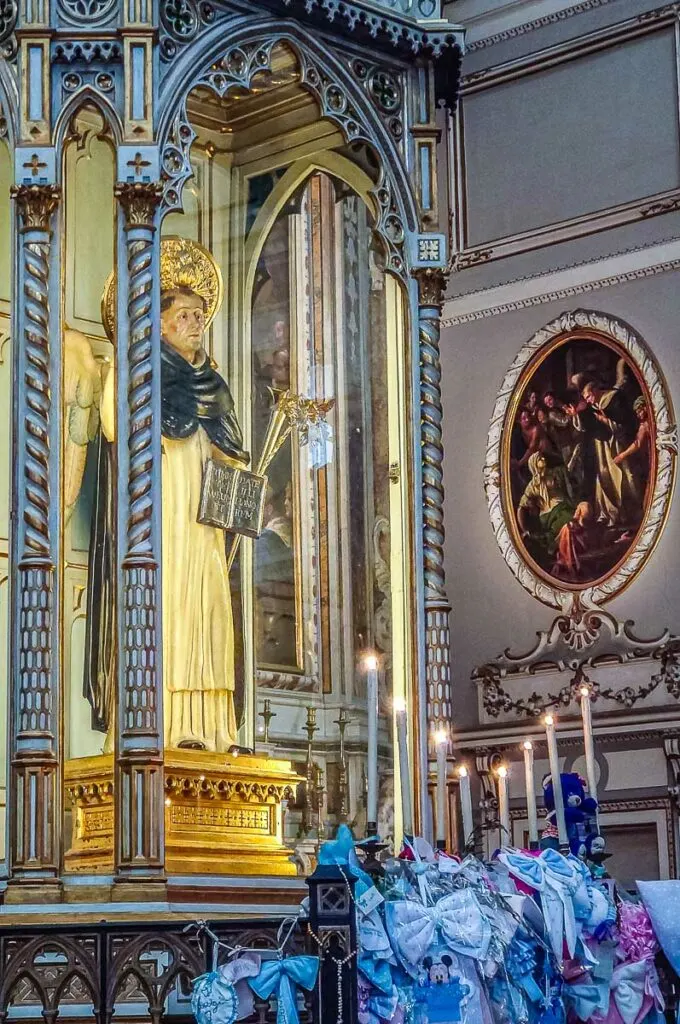
Naples has a rich calendar of events. From art exhibitions and religious festivals to culinary get-togethers (called sagra) and street celebrations, there is always something fun and exciting to do in the largest Southern Italian city.
Here are some of the most important events in Naples to enjoy together with napoletani:
January – 6th January or Epiphany is the day of Befana, an old long-nosed lady who rides around on a broom. As one of Italy’s five Christmas gift-bearers, she brings presents to the well-behaved Italian kids. What do the naughty ones get instead? Find out here. On 17th January, Naples celebrates the day of St. Anthony the Abbot, the protector of animals, with traditional bonfires.
January/February – travel to Naples for Carnevale. This is a period of confetti, costumes, music, and fun in the city. It’s also an opportunity to spot a Pulcinella or two out and about in the historic quarters. With a black mask with a protruding nose, this is the commedia dell’arte character who hails from Naples. In English, he is also known as Punchinello and originated the British puppet character Punch (as in Punch and Judy).
N.B.: If you can’t make it to Naples specifically for Carnival, then head to Vico del Fico al Purgatorio, a dark portico right off Via dei Tribunali, at any other time of the year. Here you can see the famous bronze bust of Pulcinella by the local artist Lello Esposito. Tourists touch the bust’s nose for good luck which explains its shiny surface.
March/April – Easter is one of the major celebrations in the Neapolitan calendar. Spend the Holy Week here and immerse yourself in centuries-old religious rites and popular traditions. For example, the sepolcri and the giro delle sette chiese. The sepolcri are specially decorated altars or chapels in Naples’ churches. The giro comprises visiting seven churches to pray for benevolence. Tuck into local festive dishes such as zuppa di cozze (mussel soup eaten on Holy Thursday) and pastiera (a shortcrust pie filled with ricotta-based cream).
April – twice a year (on the 5th of April and on the first Tuesday of July) the historic quarter Rione Sanità celebrates its patron saint, the Spanish Dominican friar Vincenzo Ferrer. Known as O’Munacone – the Big Monk – it is believed that the cholera epidemics that decimated Naples in 1836 only ended after the saint’s statue was carried along the quarter’s streets.
N.B.: You can see the shrine of San Vincenzo in the Basilica of Santa Maria della Sanità. The locals pray to the saint when they want to have a child.
April/May (then September and December) – Naples’ major celebration takes place three times per year: the Saturday preceding the first Sunday of the month of May, then the 19th of September, and the 16th of December. This is when napoletani flock to the city’s Duomo and pray for the Miracle of Liquefaction. The blood of Naples’ patron saint San Gennaro was collected in a glass vial after he had been beheaded during the persecutions of the Christians spearheaded by the Roman emperor Diocletian. Over the centuries, the blood dried and turned solid. However, on these particular dates, it becomes liquid again after a complex ceremony performed in front of the people of Naples. A successful liquefaction of the saint’s blood is a sign of forthcoming prosperity. A failure to liquefy is interpreted as misfortunes to befall Naples and the world in the months to follow.
September – visit Naples around the 8th of September for the annual Feast of the Madonna of Piedigrotta. Expect float parades, firework displays, and concerts.
December – the Christmas season is especially heartfelt in Naples. Head to Via San Gregorio Armeno to immerse yourself in the festive hubbub of shoppers seeking new pieces for their presepi. Visit the city’s churches to see their intricate Nativity scenes. Enjoy traditional Christmas desserts such as struffoli (fried balls of sweet dough covered with hot honey and colourful sprinkles) and roccocò biscuits.
NAPLES WITH KIDS
Is Naples a good place to visit with kids? This is a very valid question considering the city’s incredibly busy historic centre, the obvious social contrasts, and the large number of sights and museums where one can spend many hours walking around to full exhaustion.
My personal opinion is that Naples is a great place to visit with kids who are eager to learn new things, who love to eat, and who have vivid imaginations. Also, kids who don’t mind walking around for long stretches of time and who love exploring new places and cultures.
Here are a handful of places and sights which you may enjoy visiting particularly with your kids in Naples:
Aquarium of Naples – this is the oldest aquarium in Italy. It was opened in 1874 by the German Darwinist Anton Dohrn. Two years before that he had founded the world’s first zoological research station in Naples. The aquarium is housed in Villa Comunale – an important historic garden in the quarter of Chiaia. It has 200 animal and plant species in 19 basins and represents nine different habitats of the Mediterranean Sea. Near the aquarium, you can also visit the Museum Darwin-Dohrn.
Botanical Garden of Naples – this verdant oasis is a pleasure to visit with the family, especially on a hot day.
Ospedale delle Bambole – this Dolls’ Hospital is a very whimsical place in the heart of Naples. It first opened its doors in the 19th century and since then it has been run by four generations of the same family. It specialises in the repair of antique dolls and it has a small museum.
Città della Scienza – right next door to Naples you can visit Italy’s first interactive museum dedicated to the different branches of the sciences. A fun and educational destination for the whole family.
Below you can read my 10-year-old child’s honest opinion about visiting Naples in Italy:
Naples is a busy and lively city. With the noise, tight roads, and scooters, it gives you an air of happiness. But it is also very warm and within five days your feet can start hurting within five minutes of walking.
Children might enjoy the Napoli Sotterranea guided tour because of the dark and tight passages and the underground pools of water. One part of this tour includes something that you wouldn’t imagine being in an ordinary house but I won’t give any spoilers. (Especially as it’s underneath the bed!)
I also enjoyed seeing the Nativity scenes, especially the moving ones. Naples’ amulets – cornicelli – were everywhere.
The veiled statues made me feel a bit sad but you must visit not just the Veiled Christ in the Sansevero Chapel but also the Veiled Son (see the heading 5 Curious Facts About Naples below to find out why). In the Sansevero Chapel, you will also find a statue with an impressive fishing net around it.
I really liked Naples’ tight little streets and the way the delivery system works with baskets tied on ropes. You will find out soon enough!
Be warned! Maradona is everywhere! But I liked the fact that Naples’ colour is light blue (my favourite colour).
If you go to Herculaneum, there is a house which I liked. It has orange and red walls, which I describe as tropical. There are also some ancient Roman snack bars, but if you get hungry you can get an ice cream or a snack from the vending machines by the ruins. I liked walking around, looking into the ancient houses and naming them. Herculaneum is the perfect size to explore with kids and they even have cats who live there. I saw two of them – Ciuccio and Ercolina.
In Naples, you must go to the best ragù restaurant in the world – Tandem. And also you obviously have to taste gelato and pizza. A pizzeria to have in mind is the Pizzeria del Purgatorio. The sfogliatella riccia is quite difficult to bite, so watch it! Another thing to try are the Neapolitan taralli.
Let me tell you one thing! In Naples, they not only have granita (similar to slush puppy) but they even have watermelon and melon flavours. They are delicious!
The combination of hot, blazing sun and a full belly is not good. In this case, I suggest that you follow the Italian tradition of afternoon nap which is called riposo.
I would definitely return to Naples! I am happy that I got a Neapolitan cornicello, a fridge magnet, and some pieces for a Neapolitan Nativity scene. Naples is worth it! Especially for the food.
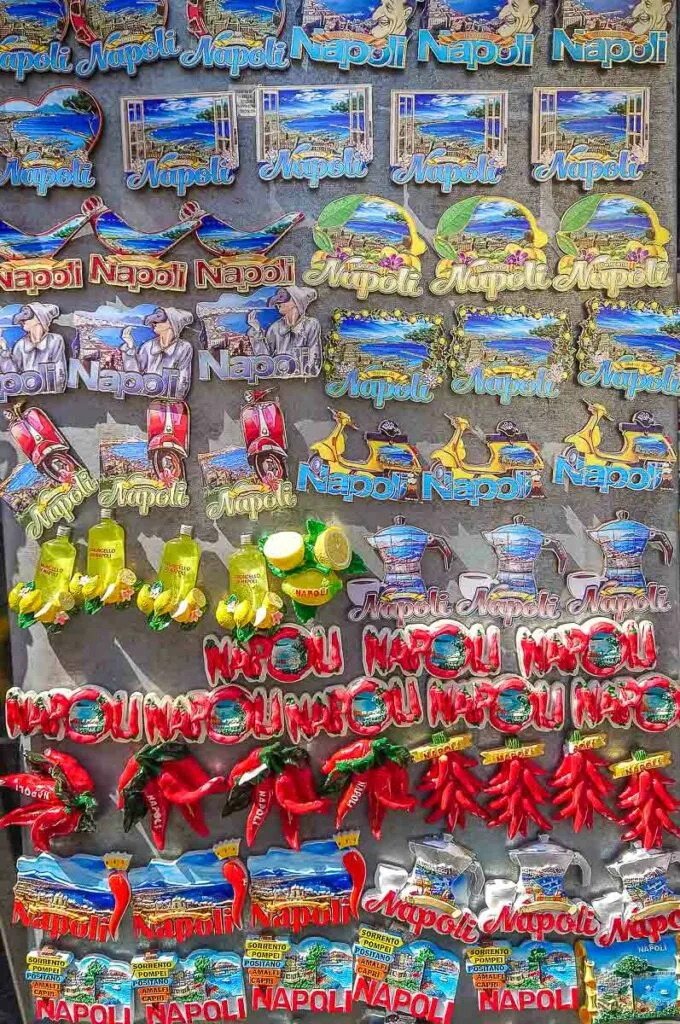
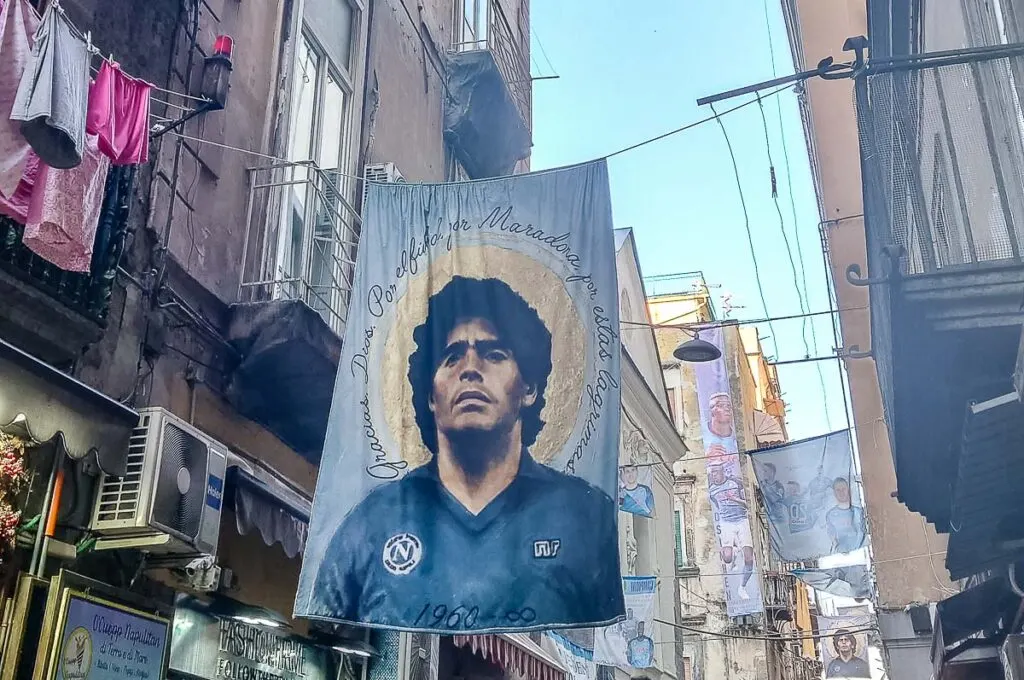
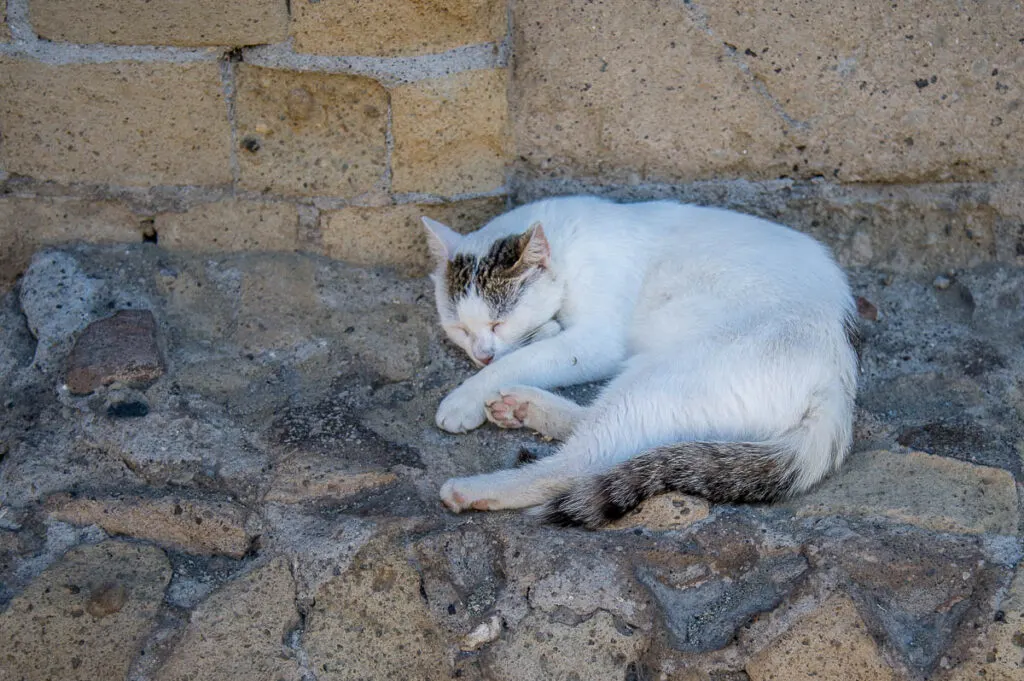
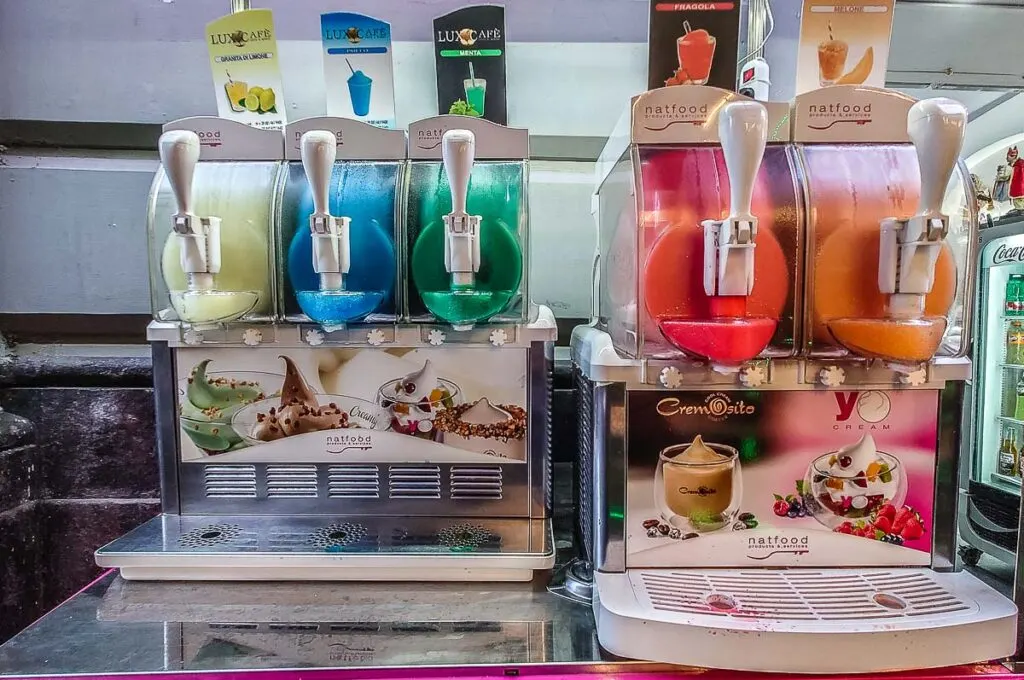
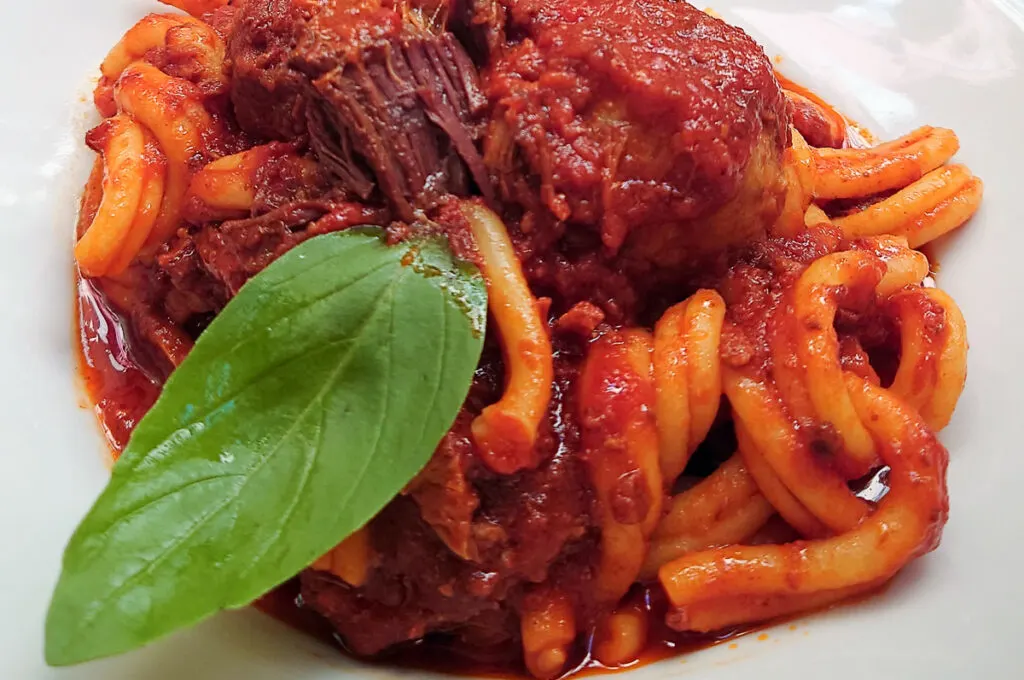
BEST ORGANISED TOURS IN NAPLES
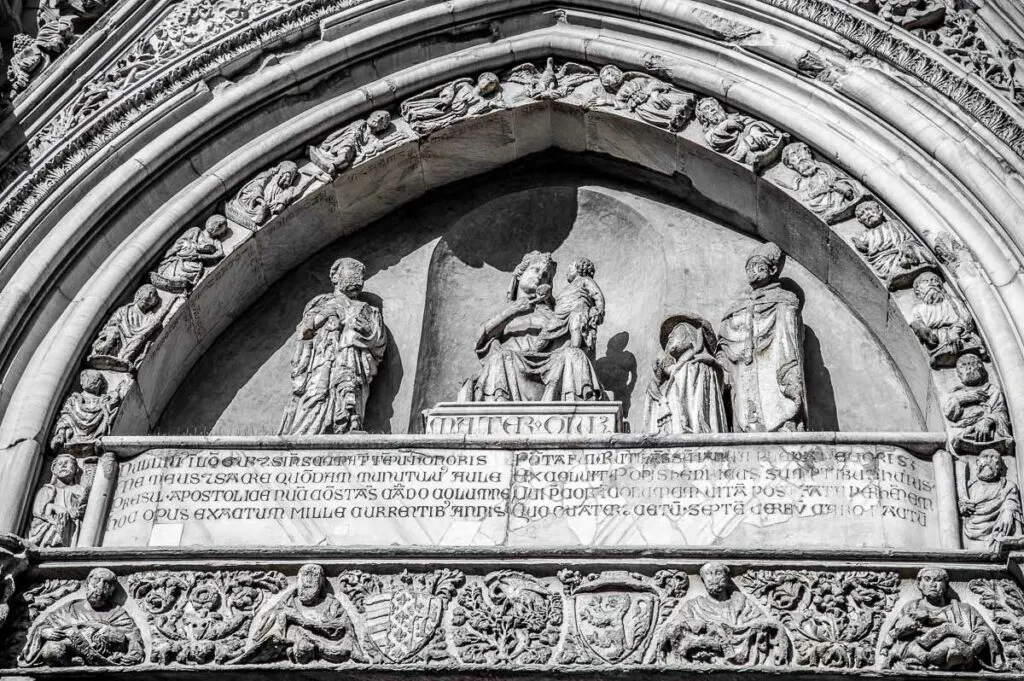
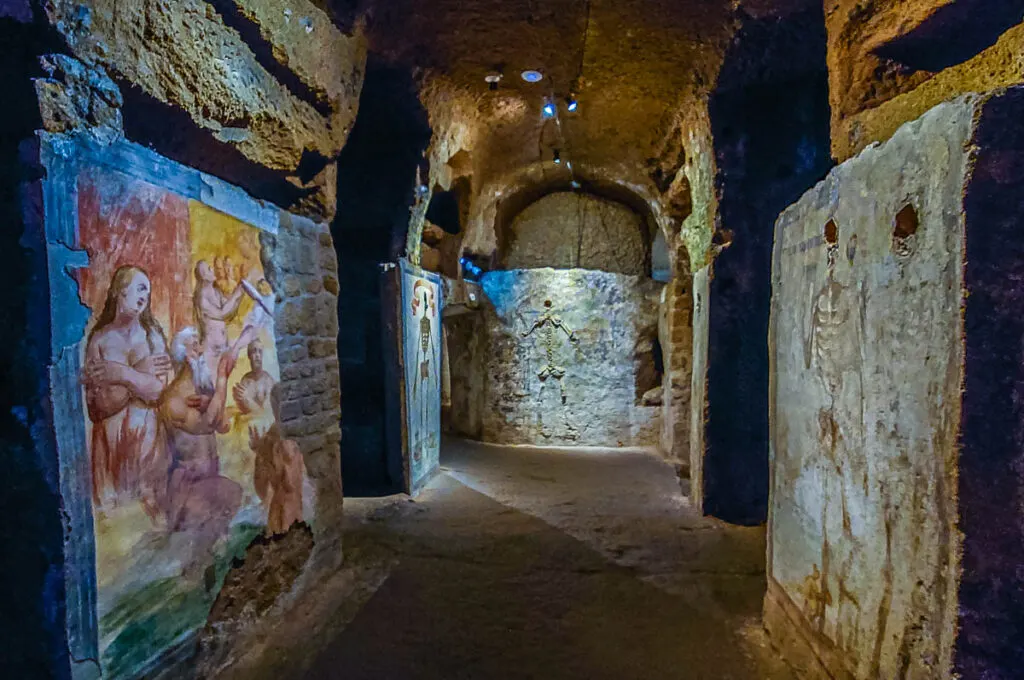
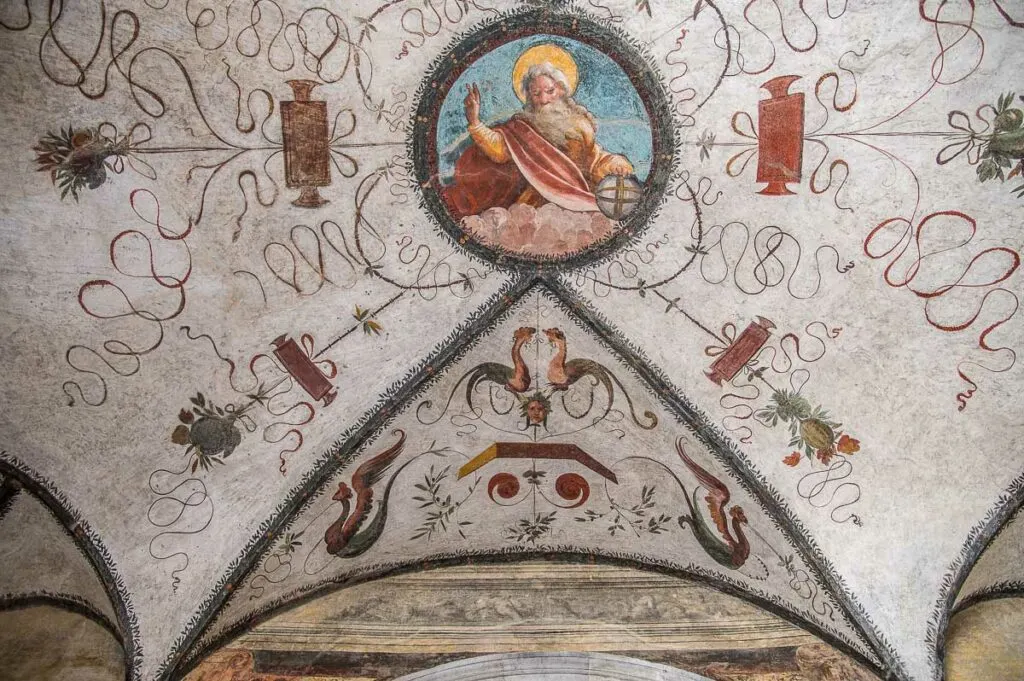
Booking an organised tour in Naples with a reputed tour guide or travel company is a shortcut to getting to know on many different levels this vibrant, stimulating, and often overwhelming city. It’s like stepping through a secret door to discover Naples’ best corners and hidden gems which otherwise may be difficult to come across one by one on your own.
With a millennial history, a rich catalogue of art, delicious local food, and many traditional crafts with outstanding output, Naples is a must-see city in Italy. This is a place that keeps many secrets that it reveals to only those in the know. No matter how many books or guidebooks you may read about Naples before coming here, the City of Pizza, Volcanoes, and Nativity Scenes can still be a shock to the system. You may find yourself ambling through its ancient streets unsure where to head to first and what to delve into next.
It is at this point that an expert local guide or a reputable tour company can be of great help. With a structured approach and offering tours covering specific fields of knowledge or tailored to your personal interests, you can see and experience the maximum of Naples within the shortest amount of time.
Here are some of the best and most highly recommended tours to take in Naples organised by category:
- Sightseeing: Hop-on Hop-off Bus; Walking Tour with Underground Ruins; Walking Tour with the Most Famous Monuments
- History: Pompeii with an Archaeologist; Pompeii and Mount Vesuvius; Pompeii and Herculaneum
- Food: Street Food Tour; Do Eat Better Experience; Secret Food Tour
Alternatively, select directly local tours and activities in Naples on GetYourGuide, Viator, and Tiqets.
Even if you decide against booking a tour and then you change your mind at the last moment, don’t worry! Tour guides can be hired in situ in many museums and sights in Naples. For example, when you visit Herculaneum, you will see the tour guides’ desk next to the entrance.
BEST VISITOR PASSES FOR NAPLES AND CAMPANIA
There are several visitor passes for the city of Naples and the region of Campania in Italy. In general, they cover a period of one, three, or seven days and provide free and discounted access to the best and most popular sights and museums here. Most of them also include free transport either as an included perk or as an add-on option.
The most popular visitor passes for Naples and Campania are issued by the following companies:
Both offer different options in terms of pass duration and number of free sights covered by each pass. So browsing their websites and choosing the right card for you is worth the time.
On Tiqets you can also find visitor passes just for Vesuvius and Pompeii, too.
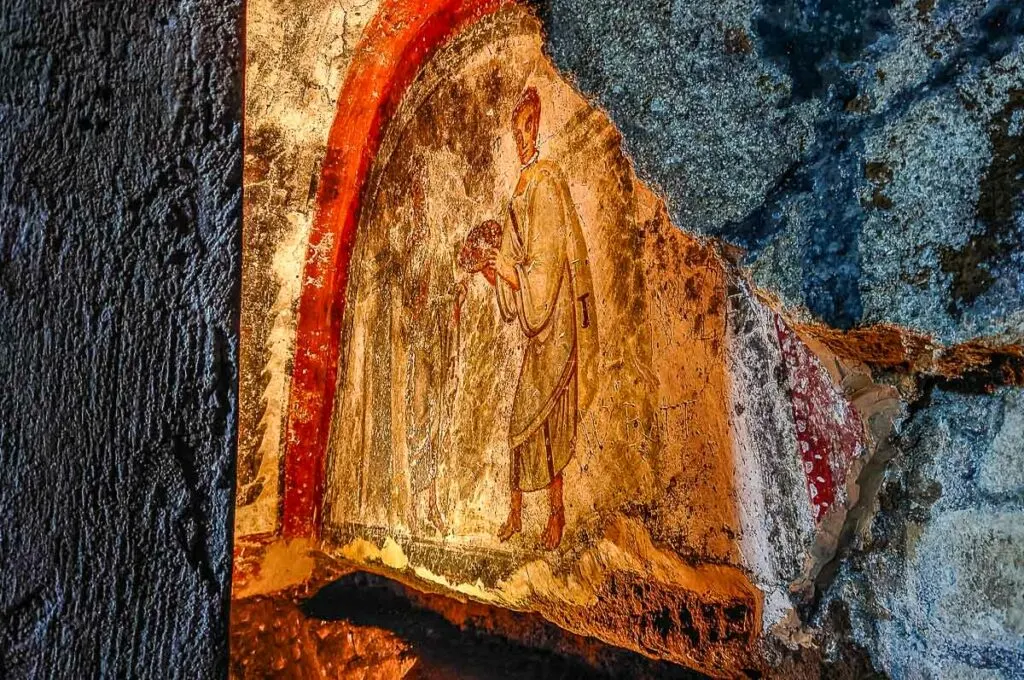
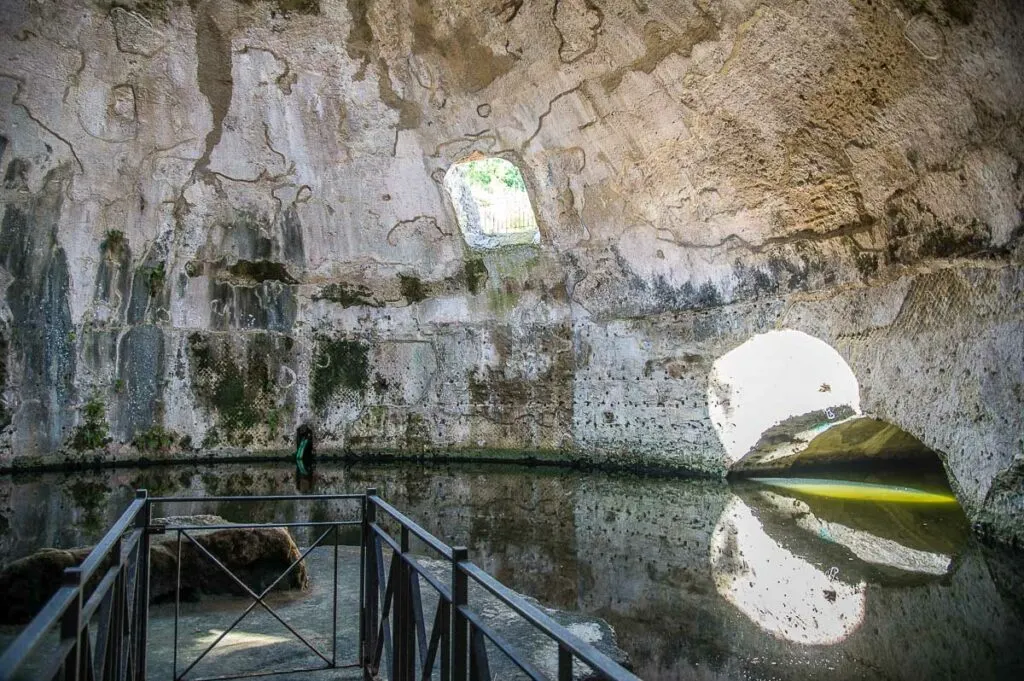
We purchased the three-day Campania Artecard as we wanted to be able to use it on our day trip to the Phlegraean Fields, too. In my personal experience, the card was useful but it had some shortcomings.
Only the seven-day card is physical. The others are virtual. You have to download an app on your phone which provides you with special QR codes to scan every time you use public transport or visit a sight. This meant that we needed to make sure that we had enough battery left at all times and that the internet was working wherever we were.
Often, the QR code wouldn’t scan easily, especially at the train stations, so we had to go find someone to let us in through the barrier. In the process, we would get approached by small-time crooks offering to open the barrier for us in exchange for a small tip.
As far as we understood, children travel for free on the parent’s card if they are under a meter tall. As our child is over a meter, we needed to go buy tickets for her with all the queuing this entailed. I would have loved to be able to pay a bit more for the card but to have my child’s travel on it or simply to have the option to buy a child’s card from the get-go.
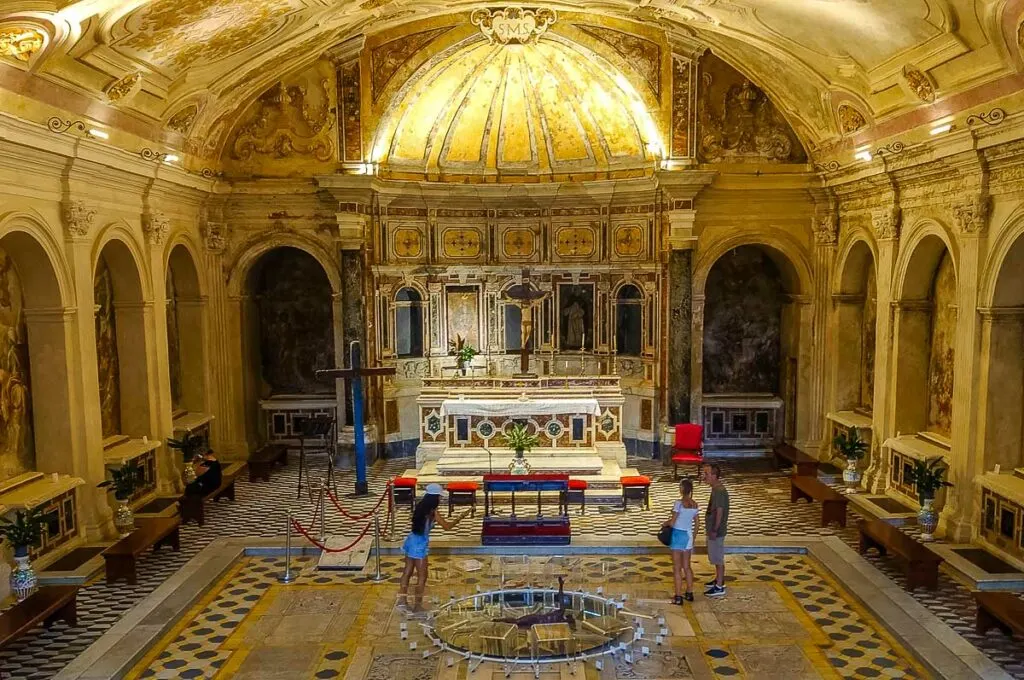
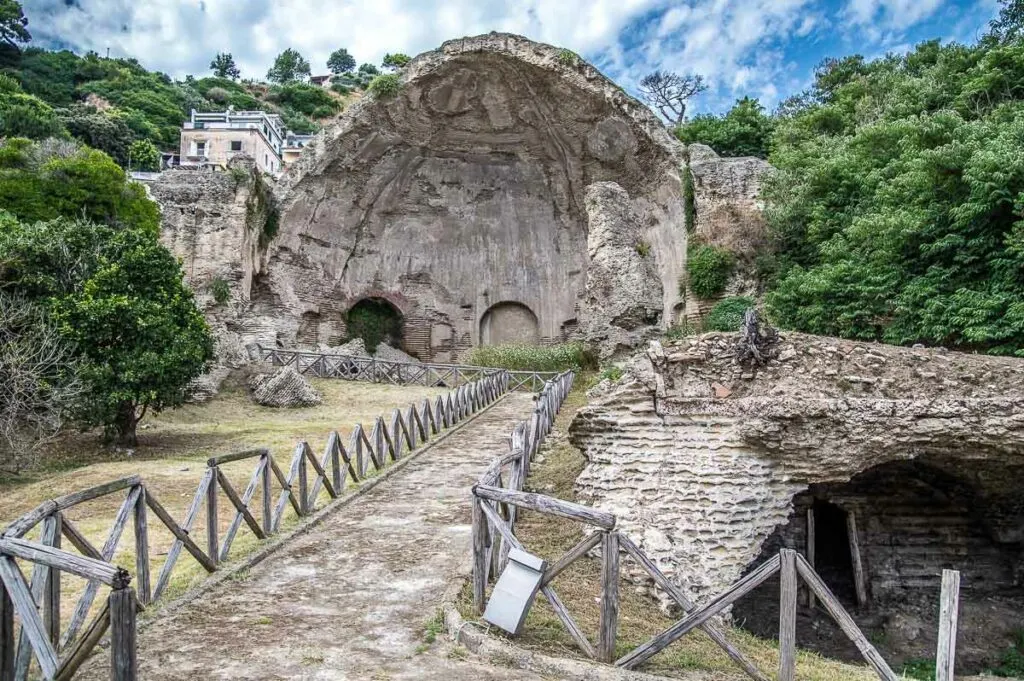
Another thing to have in mind is that the card seems to cover a specific number of days and not a specific number of hours. In other words, no matter how early or how late in the day you activate it, it counts the day of activation as a full day.
Otherwise, the card is handy as it saves you quite a lot of money. Especially, if you plan your visits in such a way that you head to the most expensive sights first. It also allows you to jump the queues at museums and sights which is a great timesaver. The app has a lot of excellent information about the sights and landmarks to see in Naples. This can give you lots of ideas for places to explore which makes your stay in Naples even more exciting.
BEST DAY TRIPS FROM NAPLES
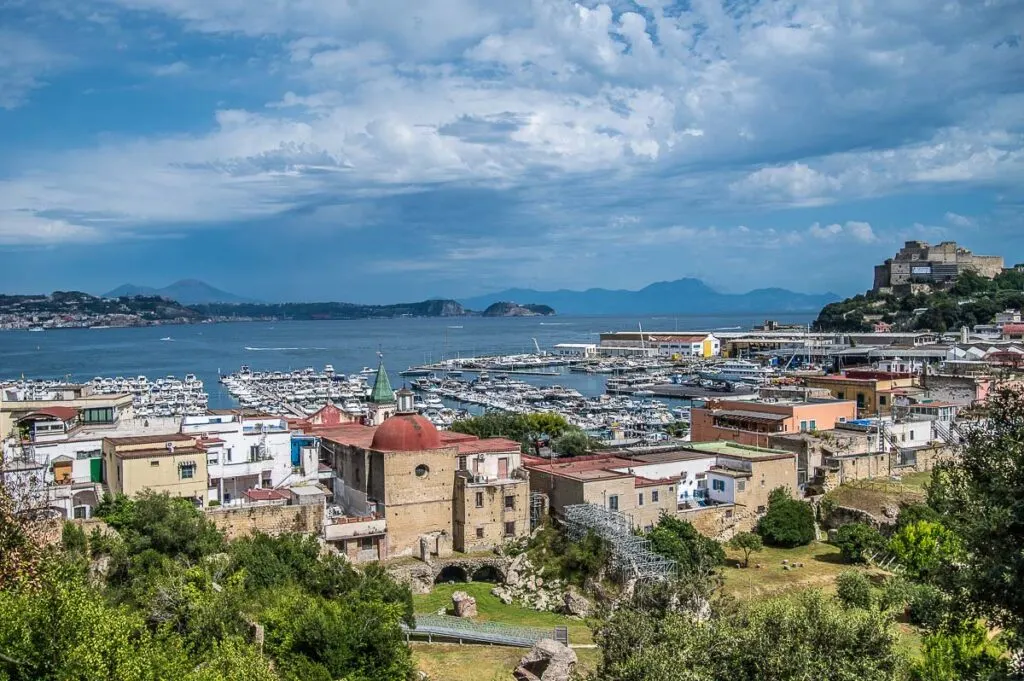
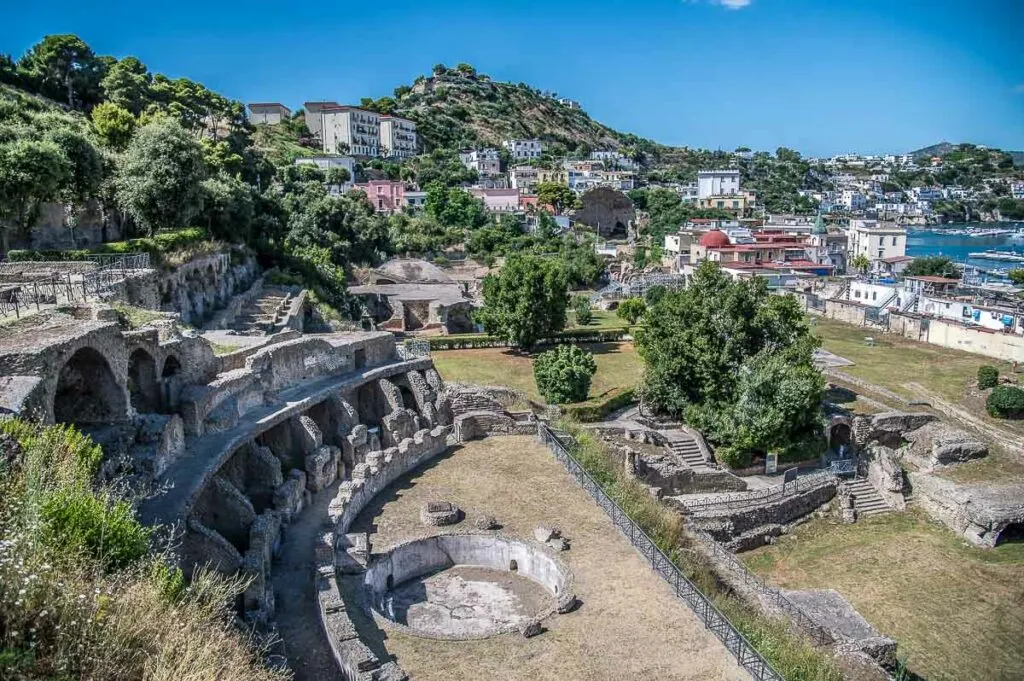
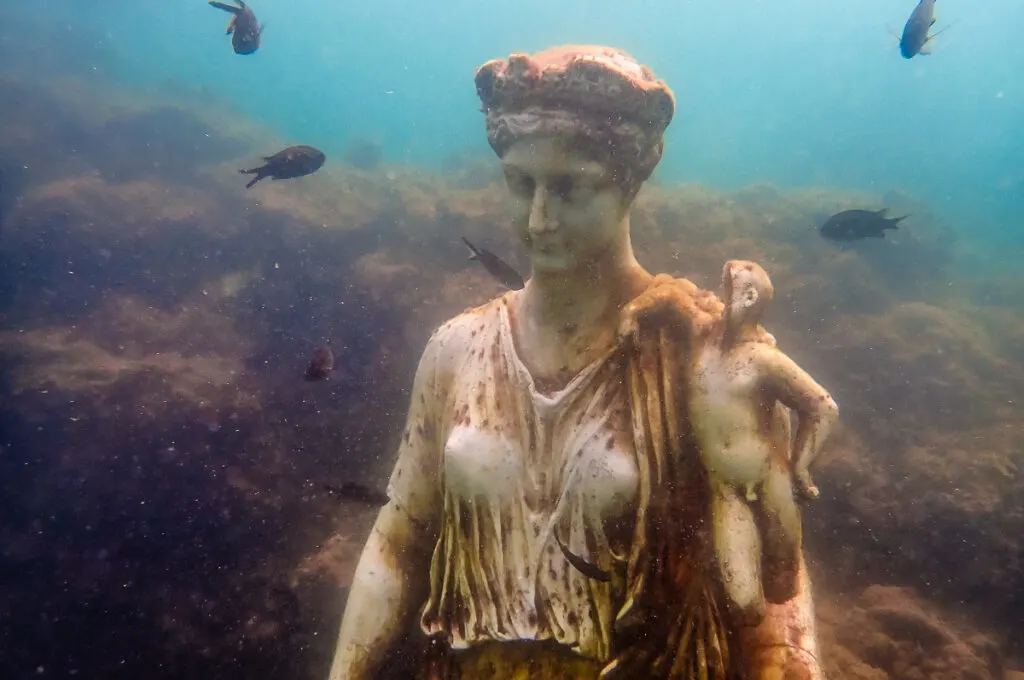
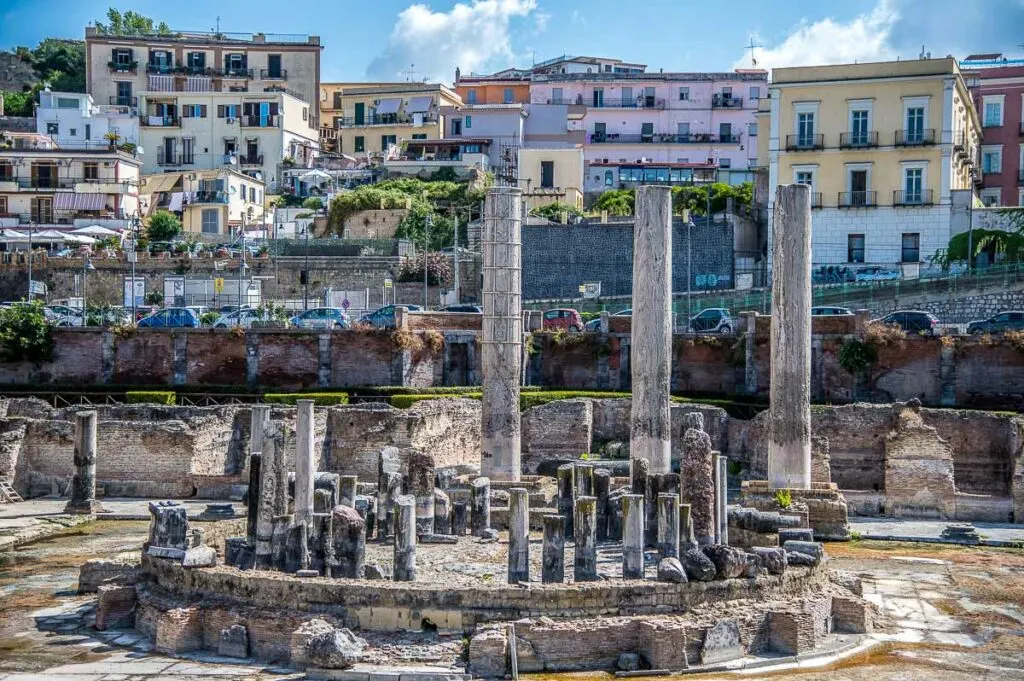
For everything that Naples has to offer, right next door to this vibrant Italian city you will also find an almost overwhelming number of must-see destinations. No matter what you are after – ancient ruins, picturesque towns, coastal villages, diving trips, natural beauty or panoramic views – take your pick from this list:
Ancient Roman Cities and Landmarks – Herculaneum and Pompeii don’t really need an introduction. Destroyed by the eruption of Mount Vesuvius in 79 AD, today the excavations of these two ancient Roman towns are a must-see if you love history and archaeology. If you have time to spare, don’t miss the Virtual Archaeological Museum of Herculaneum and Boscoreale, Oplontis, and Stabiae in the vicinity of Pompeii. Take the Circumvesuviana train and you can easily get from Naples to all of these ancient Roman hotspots by yourself. Alternatively, you can also book this highly recommended day tour which takes in Pompeii and Mount Vesuvius. If you have little time to spare, then this two-hour visit to Herculaneum in the company of an archaeologist is a great option to consider.
Phlegraean Fields (Campi Flegrei) – a truly exciting yet little-visited by mass tourists area right next to Naples. Here you will find small towns with fresh seafood, impressive ruins, and volcanic heritage. From the enormous Flavian Amphitheatre and the ancient Roman macellum in Pozzuoli to the Archaeological Park of Cuma and the Piscina Mirabilis in Miseno, this is the best day trip from Naples you have never heard of. I particularly loved the Roman baths in Baiae. The sea here guards the remains of once lavish Roman villas. Protected as part of the Submerged Archaeological Park of Baia, they can be seen as part of a diving or snorkelling trip.
N.B.: If little-known historic sites are your thing, then make sure that you also head to the Archaeological Site of Pausilypon halfway between Naples and the Phlegraean Fields. You can read more about it here.
Islands near Naples: a handful of beautiful islands are a short ferry ride away from Naples. The most famous one of them all is Capri but if you have the time, don’t miss Ischia and Procida. Check ferry timetables and ticket prices at the official websites of the ferry operators SNAV, Caremar, and Medmar. Don’t forget to book a boat tour of Capri in advance for maximum fun during your time on the island.
Amalfi Coast (Costiera Amalfitana) – this beautiful stretch of coastline along the Gulf of Salerno is dotted with small towns that are the essence of picture-perfect Italy. Amalfi, Positano and Ravello are the most famous among them and every high season suffer the effects of overtourism. Head there in the low season to avoid the crowds and for a more authentic experience. To simplify your travel arrangements, you can also book an organised day tour. Alternatively, make a plan to discover for yourself the lesser-known corners of the Costiera Amalfitana, for example, Vietri sul Mare and Atrani.
Other destinations to visit from Naples – here in no particular order but all deserving a day trip (or a longer stay) are some more must-see places for you to easily explore coming from Naples: Royal Palace of Caserta, Archaeological Park of Paestum and Velia, and the towns of Sorrento, Benevento, and Gaeta. If you have little time but you want to see the most, then you can book an organised tour taking in Sorrento and the highlights of the Amalfi Coast.
IS NAPLES SAFE?
The question ‘Is Naples safe?’ surely is one of the first things that pop into the mind of any traveller considering a visit to Naples in Italy.
For decades, books, films, and news stories have all presented this vibrant city as a beautiful yet decaying place where danger lurks around every corner. Speaking truthfully, Naples definitely is an edgy city. The consequences of limited financial means are easy to stumble upon even right next to major landmarks. Some areas here seem to experience real penury.
On the plus side, however, I felt that Naples is a friendly city where it was immensely enjoyable to walk around and talking to people felt natural and easy.
Some time ago I used to live in Northern Italy which I got to explore in depth. Yet, I always felt like an outsider and even in the city that my family called home for six years – Vicenza – there were people who refused to talk to me on account that I was a foreigner and others who kept me at arm’s length and took obvious offence to the fact that I would speak to my own child in my mother tongue instead of Italian.
In contrast to this, Naples felt easy to slot into. While I was situationally aware at all times, this didn’t interfere with my feeling relaxed, happy to explore, and at ease to talk to people. We all have been fed with cliches about Italy and some of us may have been left disappointed when some of these cliches didn’t live up to reality. Naples for me lived up to some of the best expectations people may have of Italy – friendliness, ease of communication, and the strive to create beauty in any and all circumstances. It’s a shame that this striking in so many ways city has been experiencing financial deprivation over such a long period of time. This, obviously, has left a deep imprint on its fabric!
The friend of a friend who met us at Naples Airport gave us some safety advice which I found applicable to any other large, lively city in the world. For example, no flashy jewellery, expensive watches, or branded accessories (which was easy for me as I don’t wear any jewellery when I travel), sticking together after dark (we are a family of two parents and a small child, so we tend to stick together when we walk around), and not exploring deserted areas at night (this we don’t do in principle).
Depending on where you come from and what urban environment you may be used to, what you may find unsettling in Naples at first glance are the quantities of rubbish towards the end of the day, the proliferation of graffiti (some of them are rather good), and (in some corners of the city) the obvious signs of people living rough. This is not exclusive to Naples. I live in a rather economically deprived town in England, so locally we have some of these issues affecting the community at large, too.
Before travelling to Naples, I didn’t know what to expect and I had seen all the negative reviews online. I am glad to report that I found Naples a joy to explore. It was stimulating on so many levels and offered such a rich list of things to do that I felt I could return to this city time and time again to get to know it better. Naples is full of life and this was such a wondrous thing to see and experience.
Safety is always a concern when travelling. I am speaking as the almost victim of a violent mugging in a public place in a large European city (not in Italy!), so you can be sure that when I am in a new place, especially with my child and my camera around my neck, I have my head on a swivel.
Naples is a city of great contrasts. Poverty is not conveniently hidden away here. You can see that survival is tough for many people. Beauty and decay occupy the same spaces. So, if you want to spend your holidays in a highly presentable and polished environment, then maybe Naples is not your destination. If, on the contrary, you are looking to see a place that has nurtured life in all its manifestations – from the creative to the destructive – for close to three millennia, then Naples is an excellent choice to consider.
As in all other places, be travel-smart. Keep your belongings close to you, be aware of your surroundings, in control of your abilities, and don’t engage in conversations with overly friendly people who approach you first. They are running a small-time scam where they give you some information and then ask for a tip. And, if you need a good list with lots of common-sense safety tips applicable to all destinations, have a look at this article on my blog.
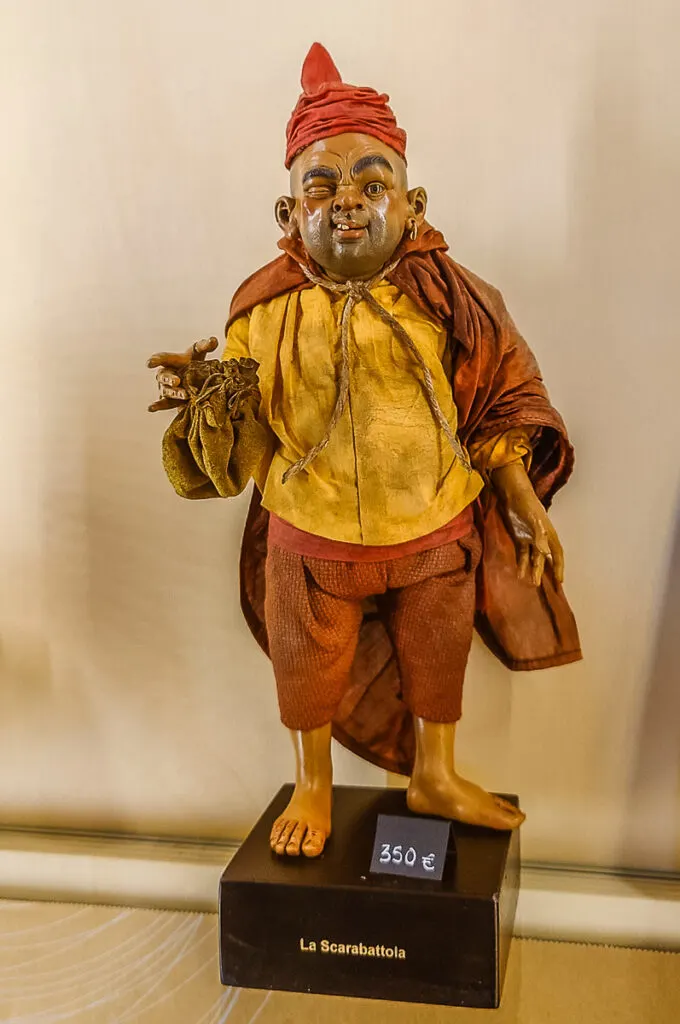
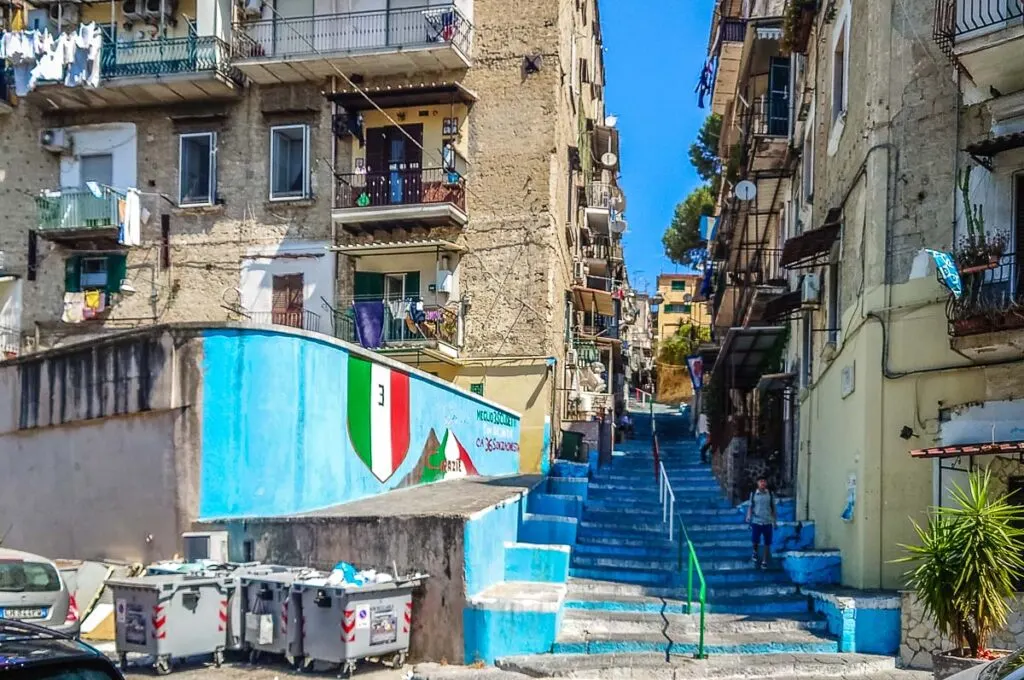
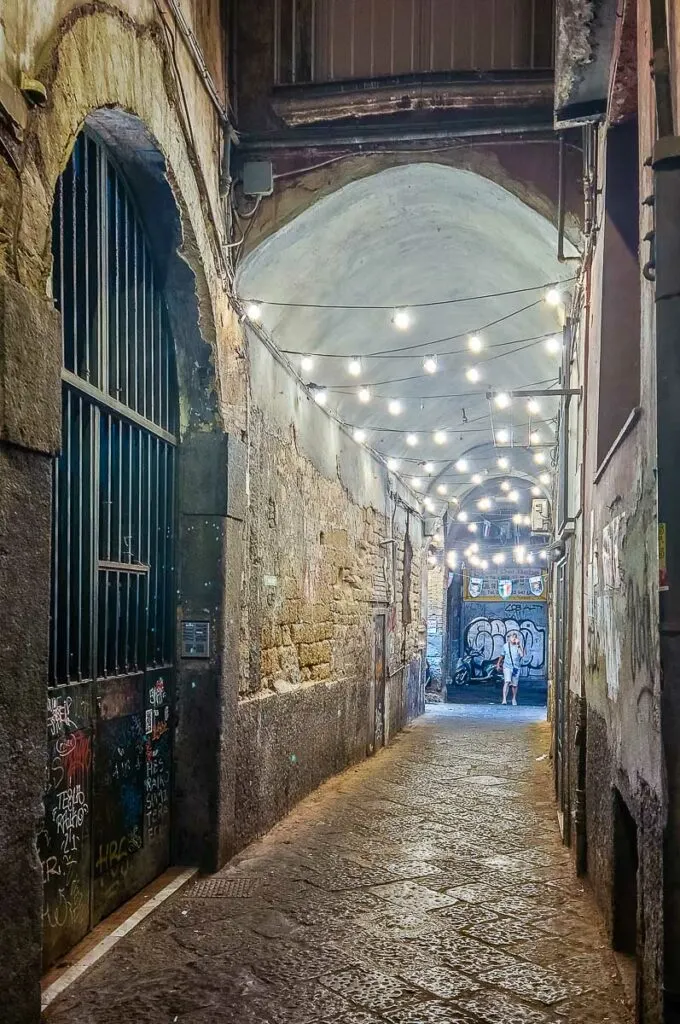
BEST TRAVEL GUIDES FOR NAPLES
WHAT TO BUY FOR NAPLES
WHAT TO BUY IN NAPLES
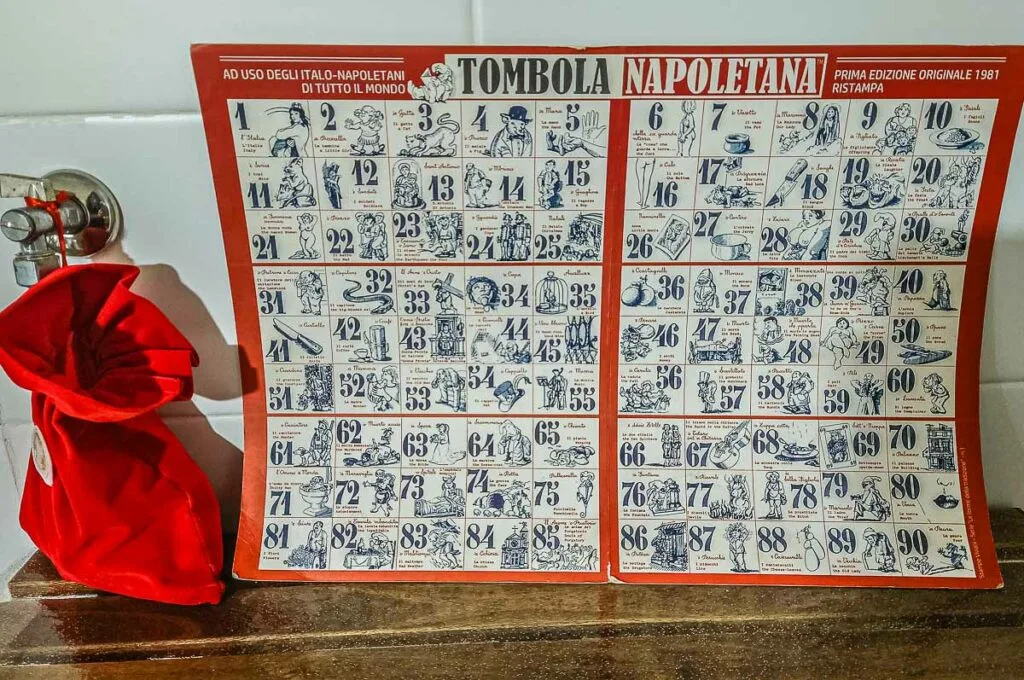
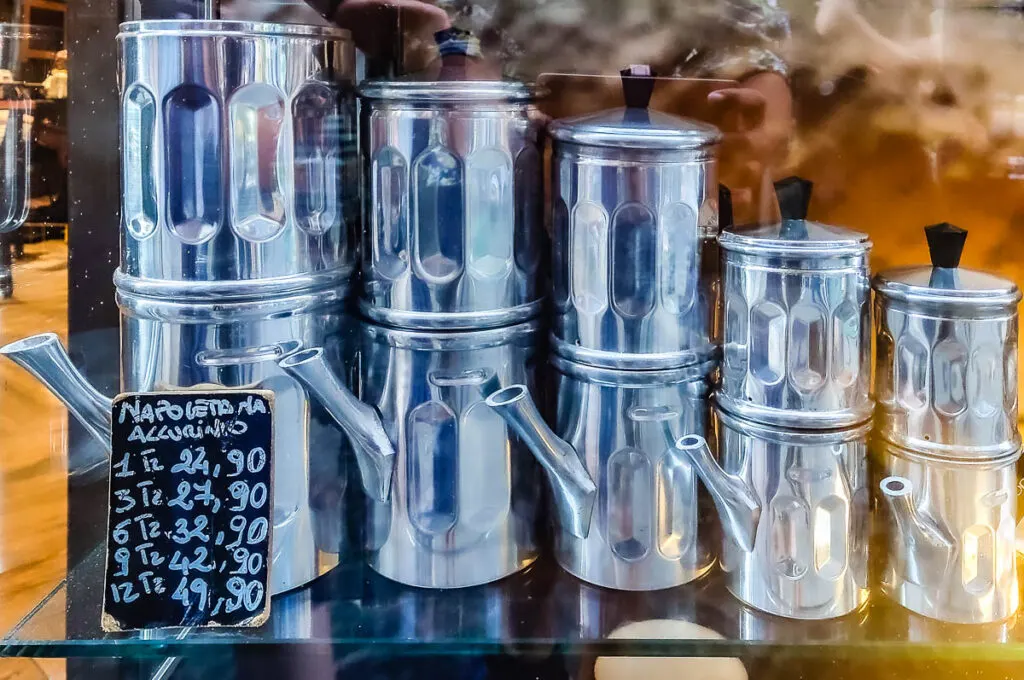
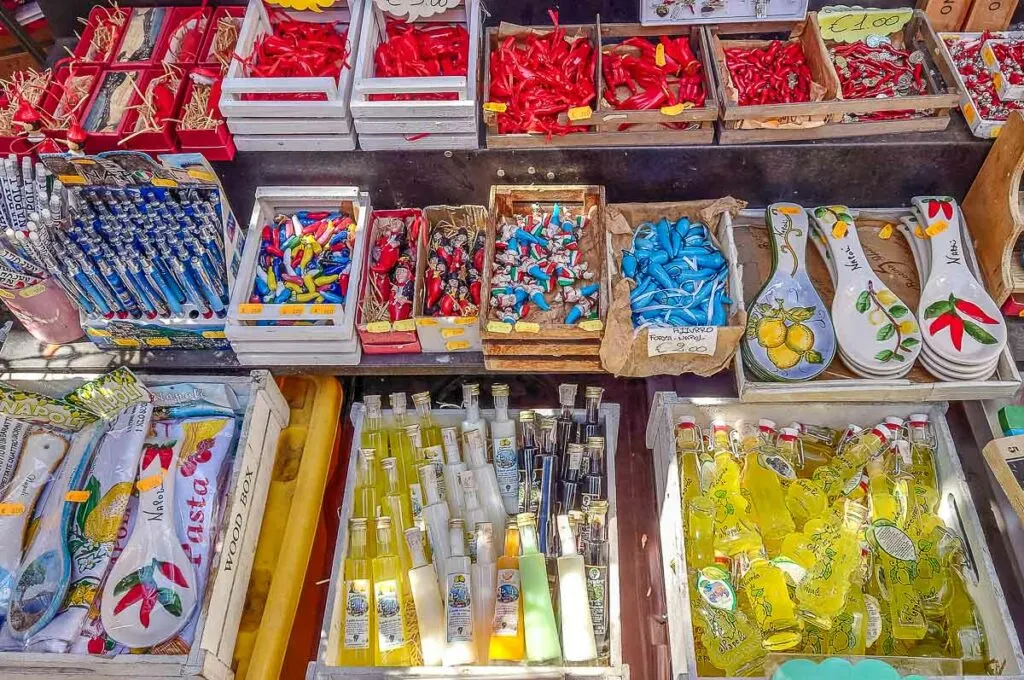
Shopping in Naples is an exciting experience on many levels. From artisan products and luxury goods to treat yourself to heaps of imaginative and colourful souvenirs to take home for family and friends, you will be tempted to spend, spend, spend time and time again.
Artfully arranged shelves and windows tempt you with handmade Nativity scenes, hand-painted Neapolitan tambourines, beautiful ceramics, hand-carved cameos, antique books, and so many more weird and wonderful, unusual and eclectic, rare and irresistible things.
Prices accommodate every budget! So, here are some cool things to buy in Naples and some of the best local makers to purchase them from:
Handmade Neapolitan Nativity scenes from Fratelli Capuano, La Scarabatola, and the shops along Via San Gregorio Armeno. Handmade Nativity scenes (known as presepe or presepio in Italian) are an intrinsic part of Naples’ artisan heritage.
Corno portafortuna (also known as cornicello) – you will see these chilly-like horns all around Naples. Traditionally red, nowadays they come in all sizes, colours, and variations. The locals believe that this Neapolitan amulet protects you and brings you good luck. For it to work, however, it needs to be handmade and given to you as a present. Apparently, you can’t just buy your own! D’Auria Artigiani make a large selection of cornicelli. Otherwise, you will find these amulets all over Naples.
Cameos by Gerolomini Gallery – this elegant shop has a wide selection of beautiful handmade cameos and coral jewellery. It also has a small museum dedicated to the delicate art of cameo-carving which is typical for the area around Naples.
Handmade bags and purses by Jiji Lovemade – I fell in love with Jiji’s colourful, vibrant bags during my week in Naples this summer. With beautiful patterns, they are both practical and elegant, perfect for city living and weekend travel.
Neapolitan tombola – a cheeky lotto-like game that Neapolitan families play together, especially at Christmas. Many small shops along Spaccanapoli and Via San Gregorio Armeno sell it.
Artisanal chocolate by Gay-Odin – this over a century-old Neapolitan company makes high-quality chocolates and chocolate-based products.
Cucumella – this traditional Neapolitan flip pot produces smooth and strong coffee. With its elongated design, it is a great conversation starter and is a great gift for the coffee lover in your life.
BEST BOOKS ABOUT NAPLES
5 CURIOUS FACTS ABOUT NAPLES
1. Naples has 52 patron saints – one for each week of the year. The city’s main patron saint is San Gennaro with whom napoletani signed a notarised contract on 13th January 1527 stipulating that the saint was to protect them from plagues and eruptions of Vesuvius.
2. In Naples, you can see not just the worldwide famous sculpture of the Veiled Christ, but also the sculpture of the Veiled Son. Both are carved from a single block of marble and the latter is the work of Jago – an Italian sculptor currently residing in New York. The Veiled Christ is in the Sansevero Chapel. The Veiled Son is in the Basilica of San Severo fuori le Mura. Both are a must-see!
3. Via di San Gregorio Armeno (also known as Via dei Presepi) is Naples’ famous street that houses the workshops of the artisans who make the famous Neapolitan presepi. These intricate Nativity scenes include dozens of figurines and represent the Holy Family in the stables often surrounded by purely Neapolitan characters and settings. Curiously, millennia ago, this same street was lined with workshops producing terracotta figurines which people bought and left as votive offerings at the adjacent temple of Ceres – the Roman goddess of agriculture.
4. Naples’ historic city centre is one of the largest in Europe. Its many layers – from the deepest catacombs and underground water cisterns to its tall obelisks and church domes covered with majolica tiles – are the result of 27 centuries of history. Its surface encloses 1,700 hectares, 1,021 of which were declared a UNESCO World Heritage Site in 1995!
5. Napoletani are football-mad and are particularly obsessed with Maradona. Hailing from Argentina, the legendary footballer played for S.S.C. Napoli from 1984 to 1991 and took the Neapolitan team to the top of the game. To this day, Maradona has a god-like status in the city. Everywhere you go you will see his face on flags, murals, and even packets of crisps.
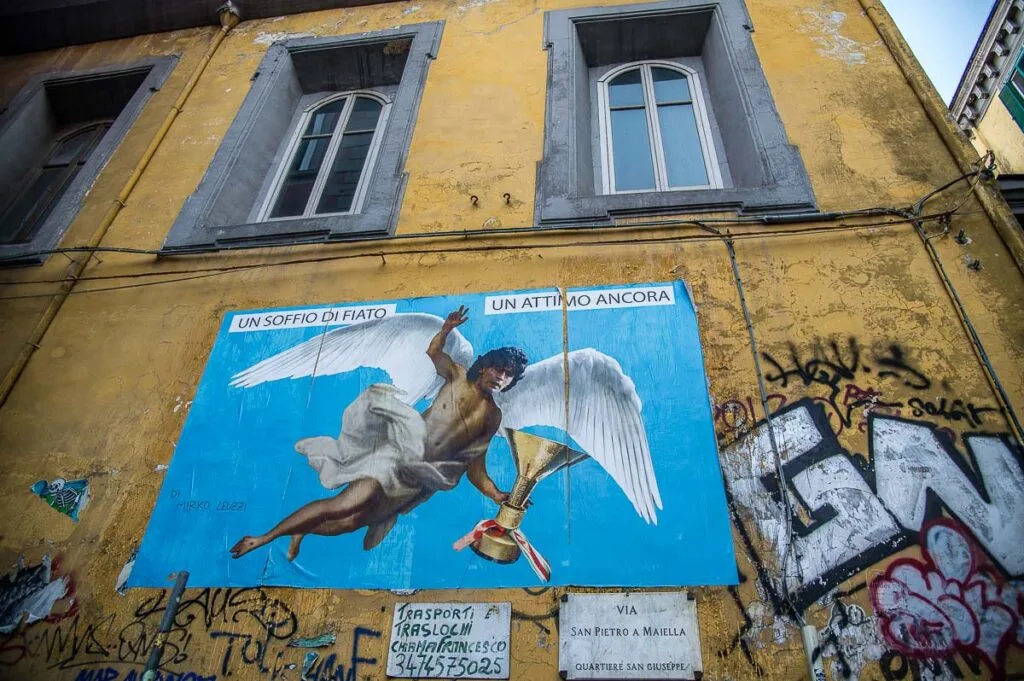
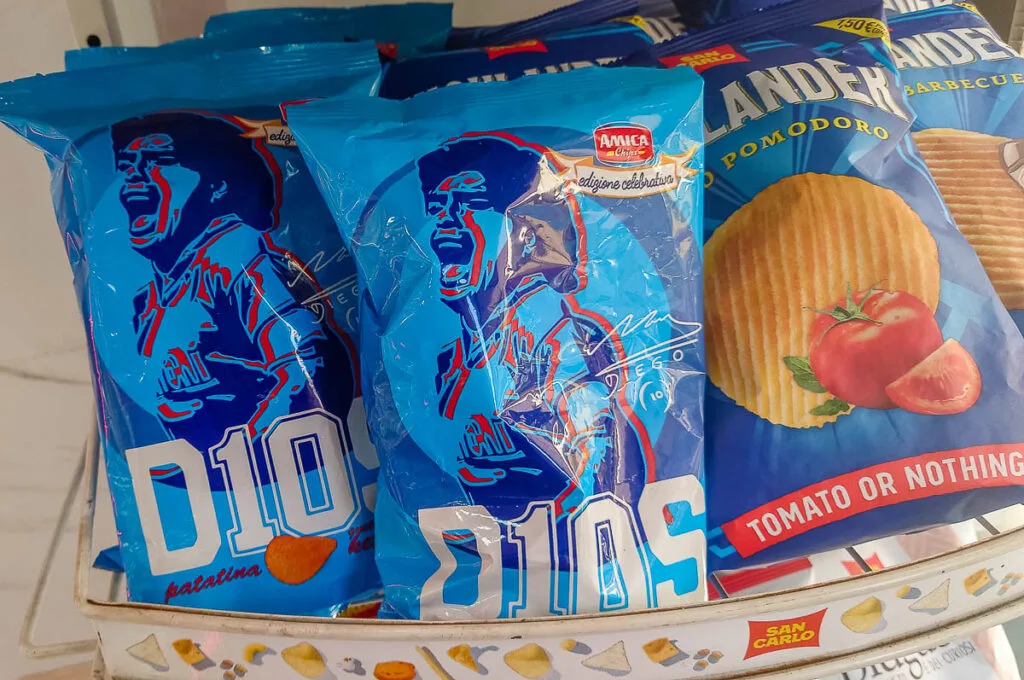
MY TOP 5 TIPS FOR NAPLES
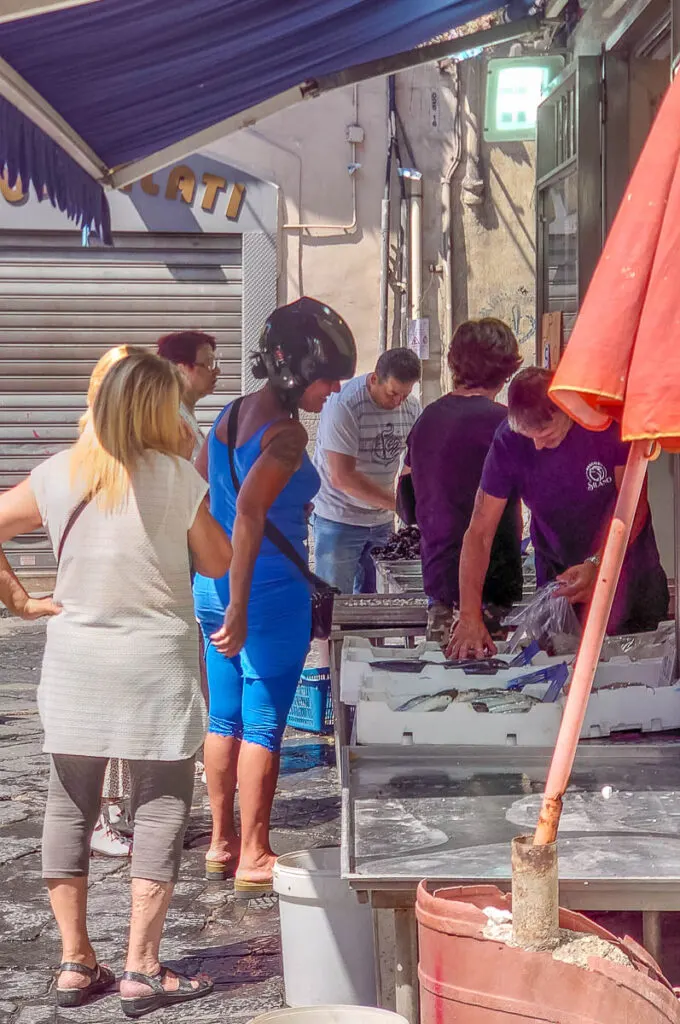
- Explore Naples area by area. This is a large and exciting city with lots to see and do. Group the sights you want to visit based on their proximity to one another instead of exhausting yourself by running all over town every day of your stay.
- Where possible, book entry tickets and tours in advance. This will minimise waiting times and will allow you to make the most of your day. Tiqets is a great resource for tickets for Naples’ best museums and landmarks. Viator is my favourite tool for booking guided tours.
- Bring your appetite. Naples is a city where eating is akin to an elevated cultural experience. From bakeries and family-run trattorias to restaurants with sea views and unmissable gelaterias, Naples runs on excellent food. Don’t skip a meal!
- Embrace Naples’ joy of life! This is a vibrant city that stimulates the senses on many different levels. Let it get under your skin!
- Indulge in people-watching. Naples is as much about its historic and artistic heritage as it is about its people. Take time every day to just stop and take in little scenes of daily life. Many napoletani are worthy of a book and you can read their story on their faces, in their gestures, and in a conversation with them.
5 THINGS NOT TO DO IN NAPLES
- Don’t expect to see the whole of Naples in a day or two. This is a large city with lots of major sights and plenty of hidden gems.
- Don’t hire a car. Traffic in Naples is intense, the driving style is incredibly assertive, and the historic quarters are akin to mazes of narrow streets. Free parking spaces can be very difficult to come across, so parking needs to be organised in advance. Most importantly, Naples has several ZTL’s (limited traffic zones) which are accessible only with special dispensations (for example, local residents and hotel guests) and more or less cover the areas with the biggest concentrations of landmarks and sights.
- Don’t buy counterfeit luxury and designer goods. Heavy fines are in place for tourists tempted to buy knock-offs which you may see being sold from sheets spread directly on the ground around town.
- Don’t be negative about Naples and/or its icons. As with every large city with a millennial history, Naples has its own specific problems which are easy to spot. The least a visitor to the city can do is to show respect to the people who have to deal with them on a day-to-day basis. Neapolitans have also elevated certain personalities to a god-like status. Disrespect is not tolerated no matter how well-based your opinion about them may be.
- Don’t accept unsolicited offers for help. Most often than not they will be followed by a request for a tip. At busy spots around town, for example, train or metro stations, you may be approached by a smiley person eager to explain how to get from point A to point B. Don’t engage! If you really need directions, it’s best to ask at the ticket office or a uniformed employee.
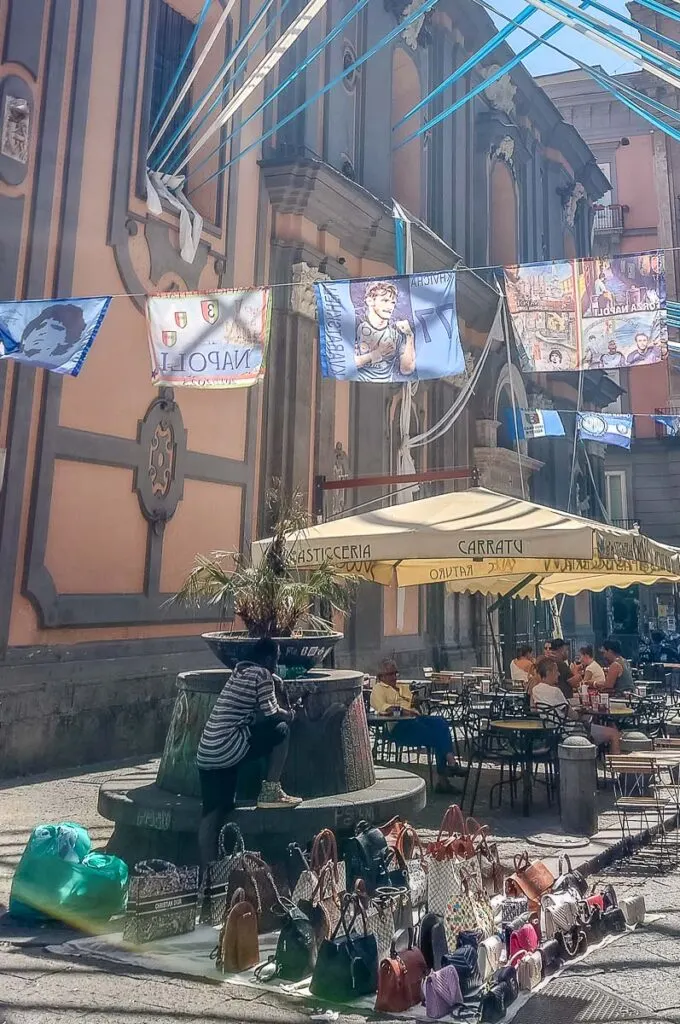
MORE INFORMATION ABOUT ITALY
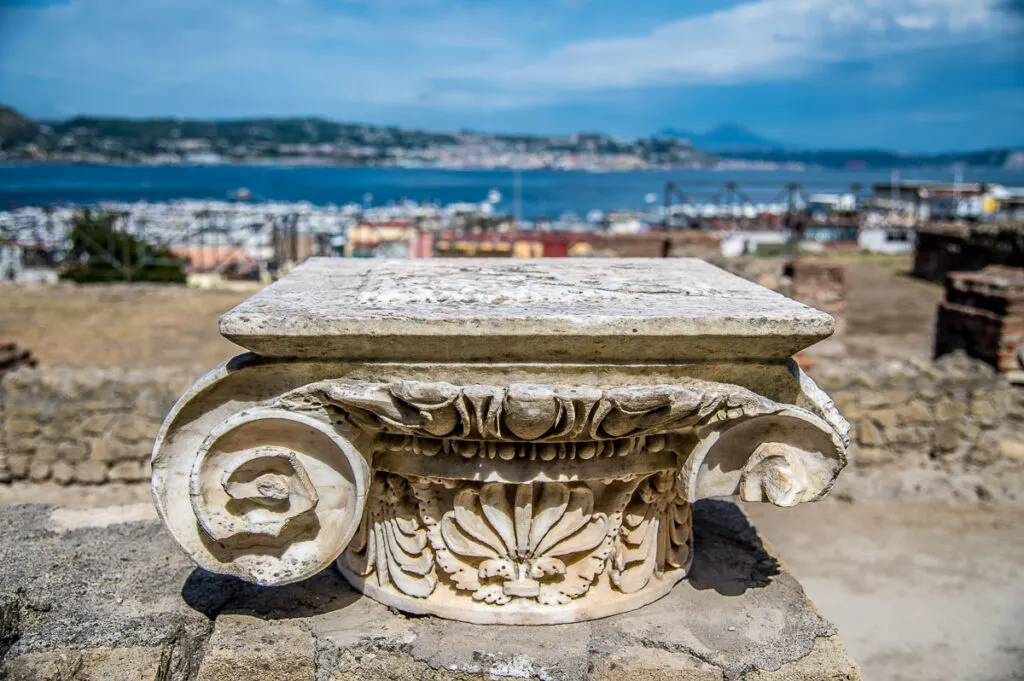
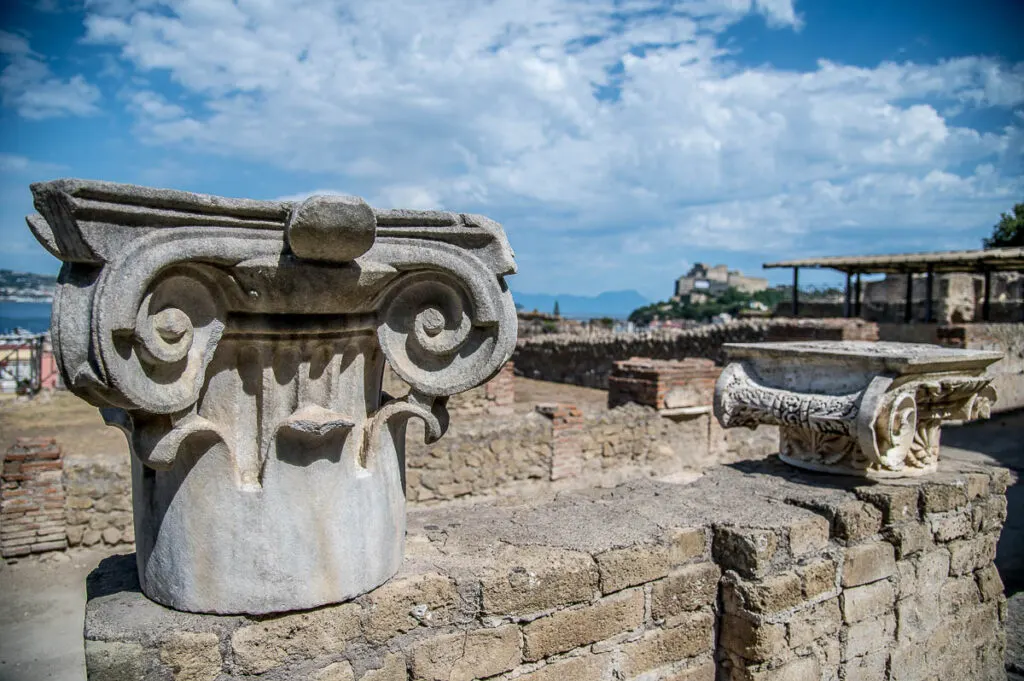
I have been blogging about travel in Italy for almost ten years now providing detailed and first-hand tried and tested information about the best things to do in this beautiful country. It’s all based on my close to twenty years of visiting Italy solo and with my family. Six of them, we actually spent living in Vicenza in the north of the country.
If you are after in-depth researched and illustrated with dozens of original photos articles about Italy, have a look at the following categories and blog posts:
- Italy – a full list of all my blog posts about Italy
- 10 Reasons to Visit Northern Italy
- Veneto, Trentino, Emilia Romagna, Umbria – full lists of all my blog posts about these Italian regions
- Venice, Padua, Lake Garda, Lake Como, Milan – full lists of all my blog posts about these must-see destinations in Italy.
In addition, right at the end of this page, you will find a list with links to some of my most popular blog posts about many beautiful and exciting cities, towns, and regions to visit in Italy. So, just scroll down and then click on the ones you want to know more about.
Finally, Italy’s official tourism website is a great source of the latest news about travel in Italy. Otherwise, this is one of the best guidebooks about Italy.
THANK YOU FOR READING
Have a look also at my ultimate travel guides for Venice, Lake Como, and Lake Garda.
For more useful information like this, please, like my blog’s page on Facebook and Instagram and subscribe to my strictly no-spam newsletter.
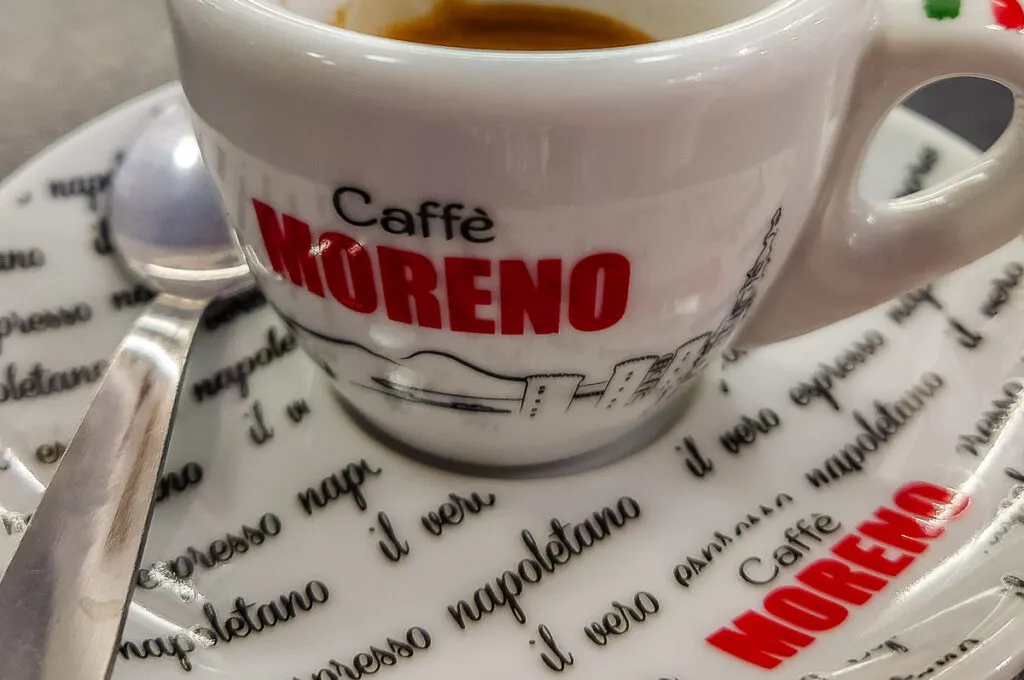
TRAVEL TOOLS
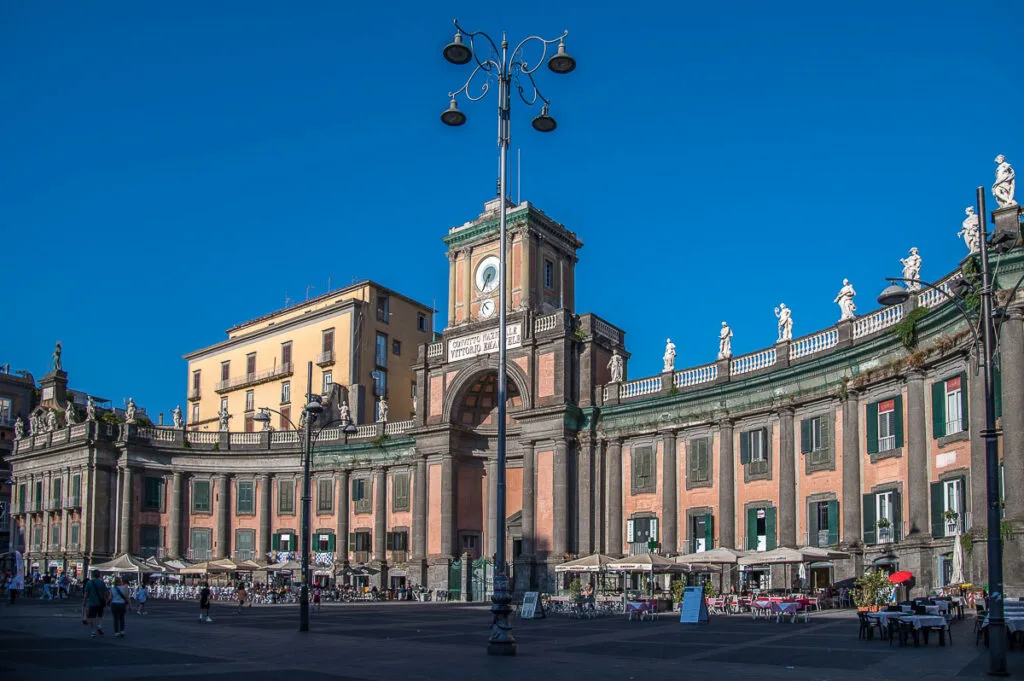
Get Ready for Your Trip to Naples in Italy
Get a guidebook from Amazon.
Buy plane tickets, train tickets, and bus tickets through Omio.
Research accommodation on Booking.com.
Select local tours and activities on GetYourGuide, Viator, and Tiqets.
EVEN MORE HELPFUL INFO ABOUT ITALY FOR YOU
Best of Italy: Italian Piazzas, Italian Markets, Accommodation for Every Budget, Best Times to Visit Italy, Italy in Summer, Italy with Kids
Italian Food: Best Italian Food Gifts, Cheap Italian Food, Rules of Italian Breakfast, Italian Breakfast Foods
Italian Coffee: Italian Coffee Culture, Italian Coffee Drinks, History of Coffee in Italy
Christmas in Italy: Fun Facts, Things to Do, Italian Nativity Scenes, Panettone, Christmas Guide
Northern Italy: Best Cities to Visit, Major Airports, Reasons to Visit
Lake Como: Ultimate Travel Guide, Best Towns, Best Things to Do, How to Get to Lake Como, Milan to Lake Como, Best Airports, Photos of Lake Como
Lake Garda: Ultimate Travel Guide, Best Towns, Desenzano del Garda, Lazise, Riva del Garda, Malcesine, Torri del Benaco, Punta di San Vigilio, Campo di Brenzone, Borghetto and Valeggio sul Mincio, Map of Lake Garda, Getting Around Lake Garda, Lake Garda with Kids, 8 Best Airports, Venice to Lake Garda, Verona to Lake Garda, Milan to Lake Garda, Bologna to Lake Garda
Venice: Ultimate Travel Guide, Essential Tips, Things to Do, Major Landmarks, Hidden Gems, How to Navigate Venice, Venice in a Day for Art Lovers, Train Stations, Nearest Airports, Best Tours, Beaches of Venice, Quotes about Venice, Boats in Venice, Haunted Venice, Day Trips from Venice, Arco del Paradiso
Verona: Things to Do in One Day, Verona Opera Festival, Day Trips from Verona, Romeo and Juliet Itinerary, Verona to Venice, Verona to Milan
Padua: Things to Do in One Day, 101 Facts About Padua, 10 Reasons to Visit Padua, Day Trips from Padua
Vicenza: Things to Do, Day Trips from Vicenza, Best Museums, The Beauty of Vicenza
Veneto: Top Places to Visit, Unique Adventures, Most Colourful Places, Mysterious Places, Most Beautiful Lakes, Reasons to Visit, Main Cities, Prettiest Small Towns, Most Beautiful Villages
Lombardy: Best Cities and Towns, Reasons to Visit, Brescia
Friuli Venezia Giulia: Venzone, Most Beautiful Villages
Emilia Romagna: Bologna, Ravenna, Comacchio, Most Beautiful Villages
Marche: Reasons to Visit, Gradara, Frasassi Caves, Temple of Valadier
Umbria: Reasons to Visit Perugia

